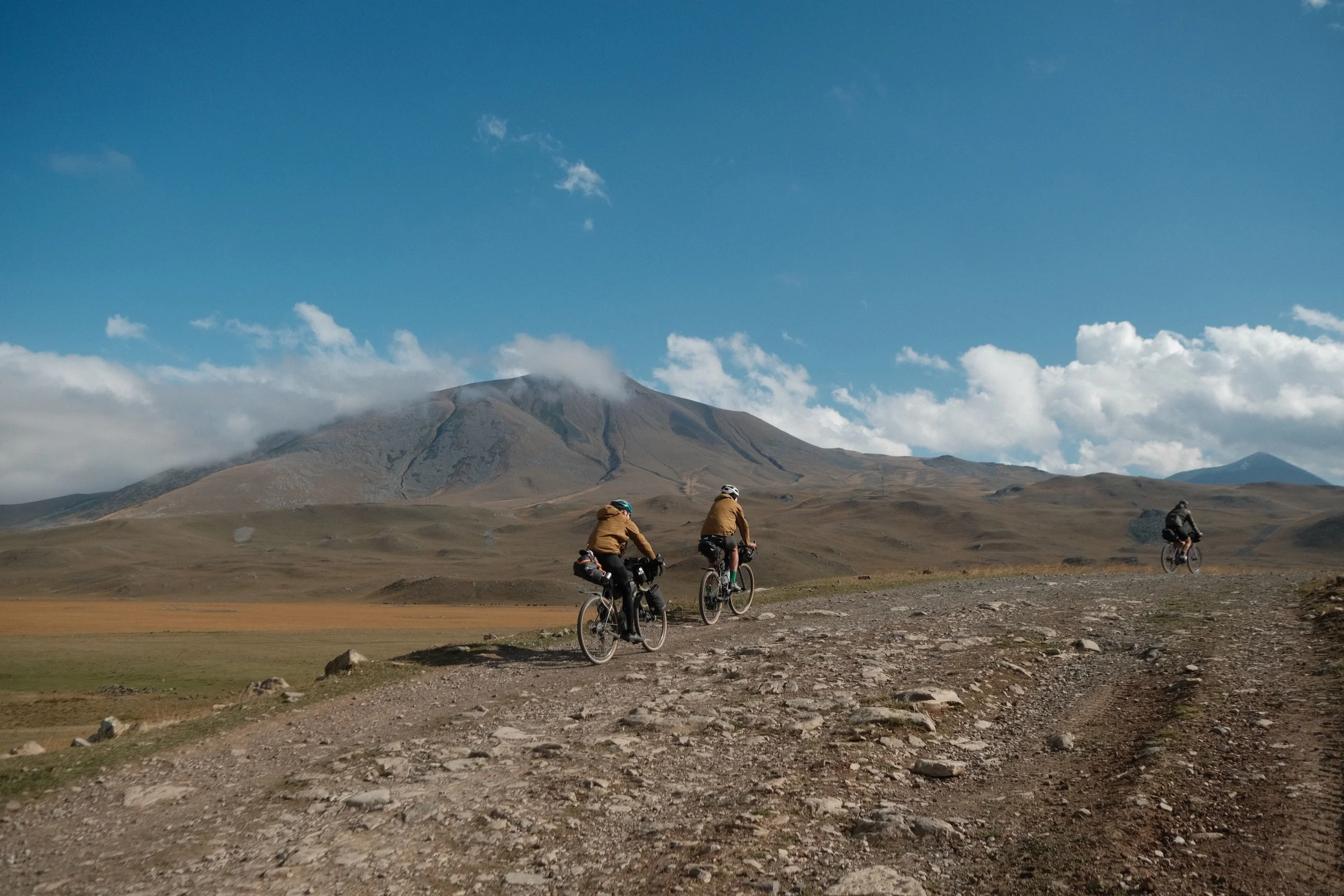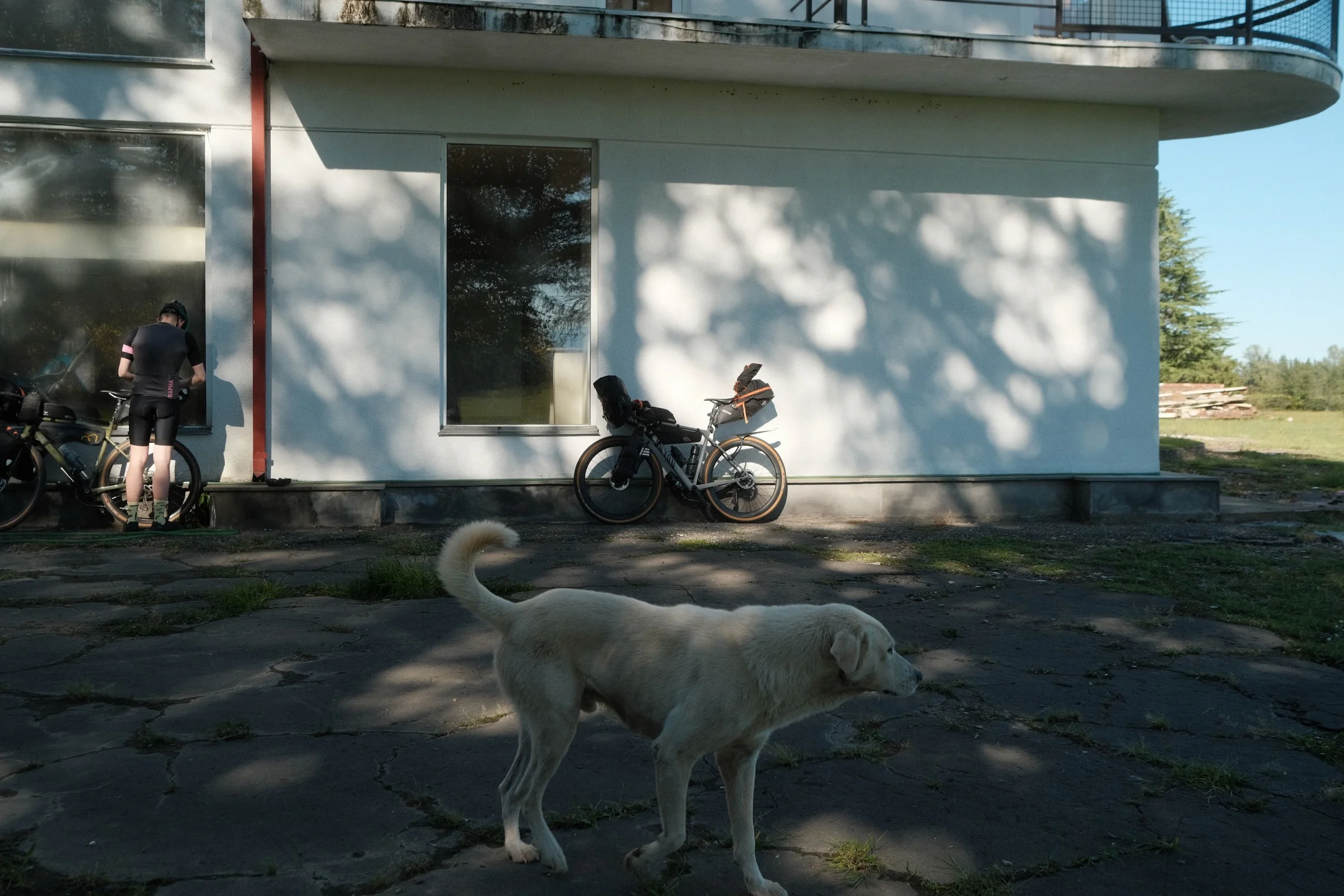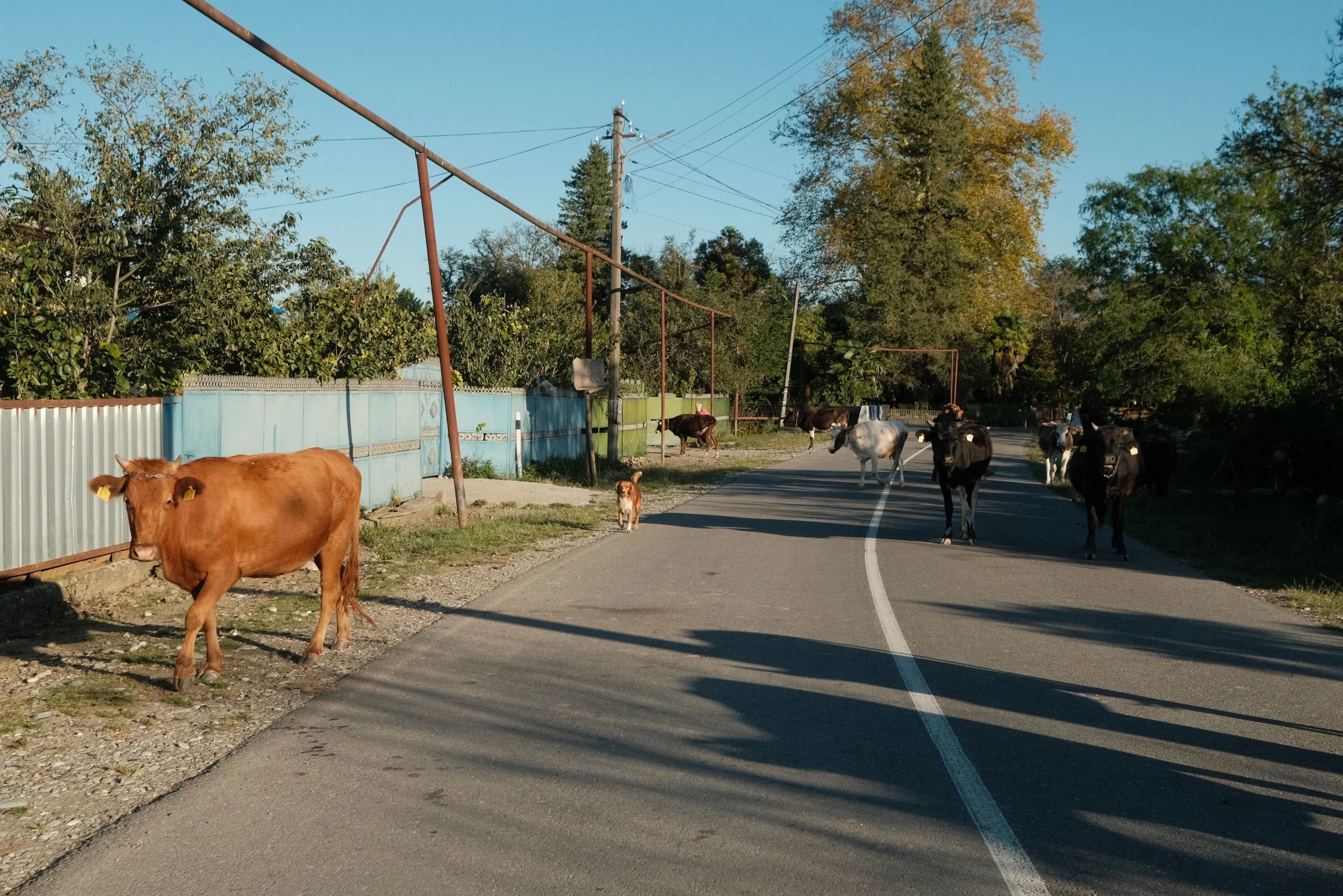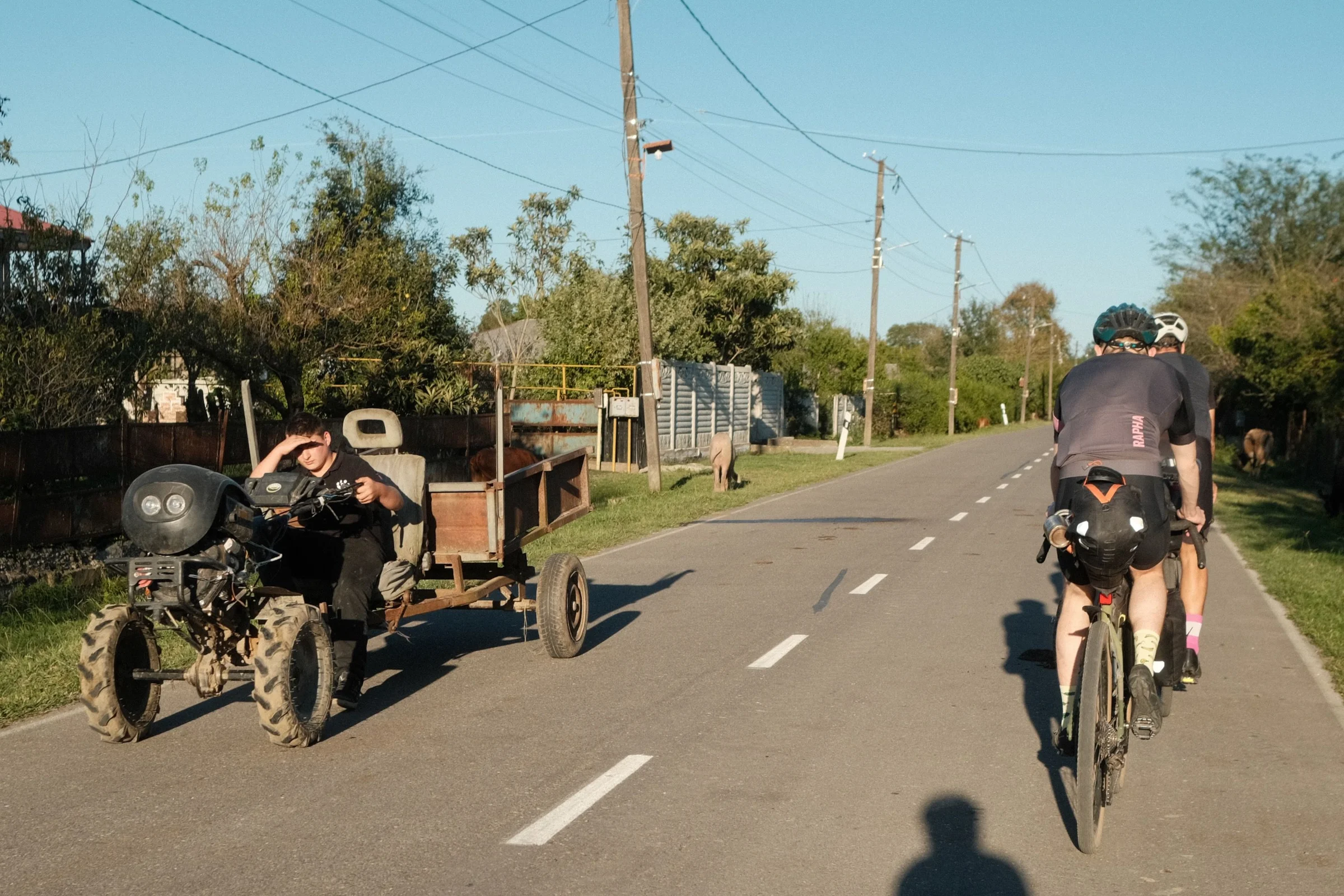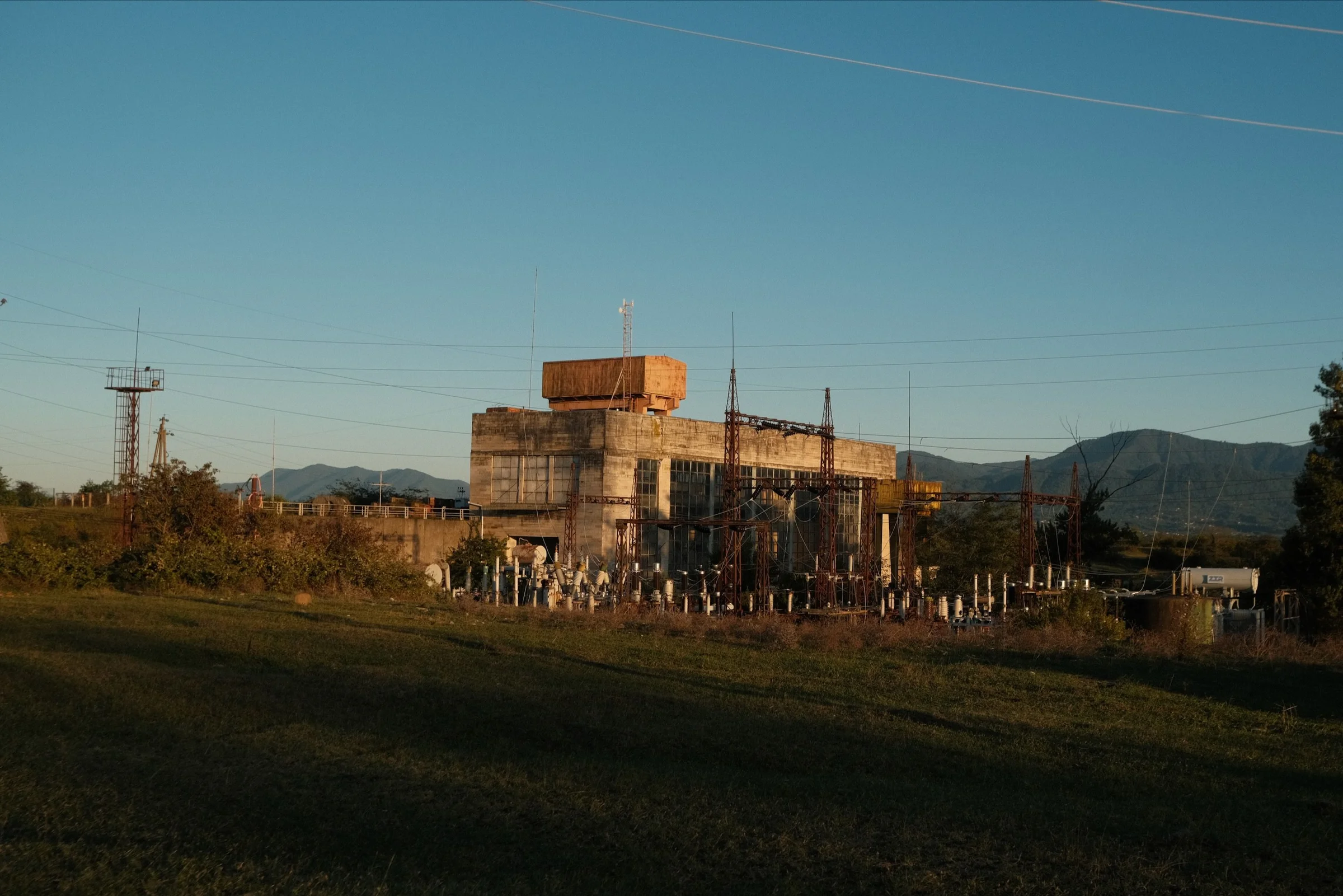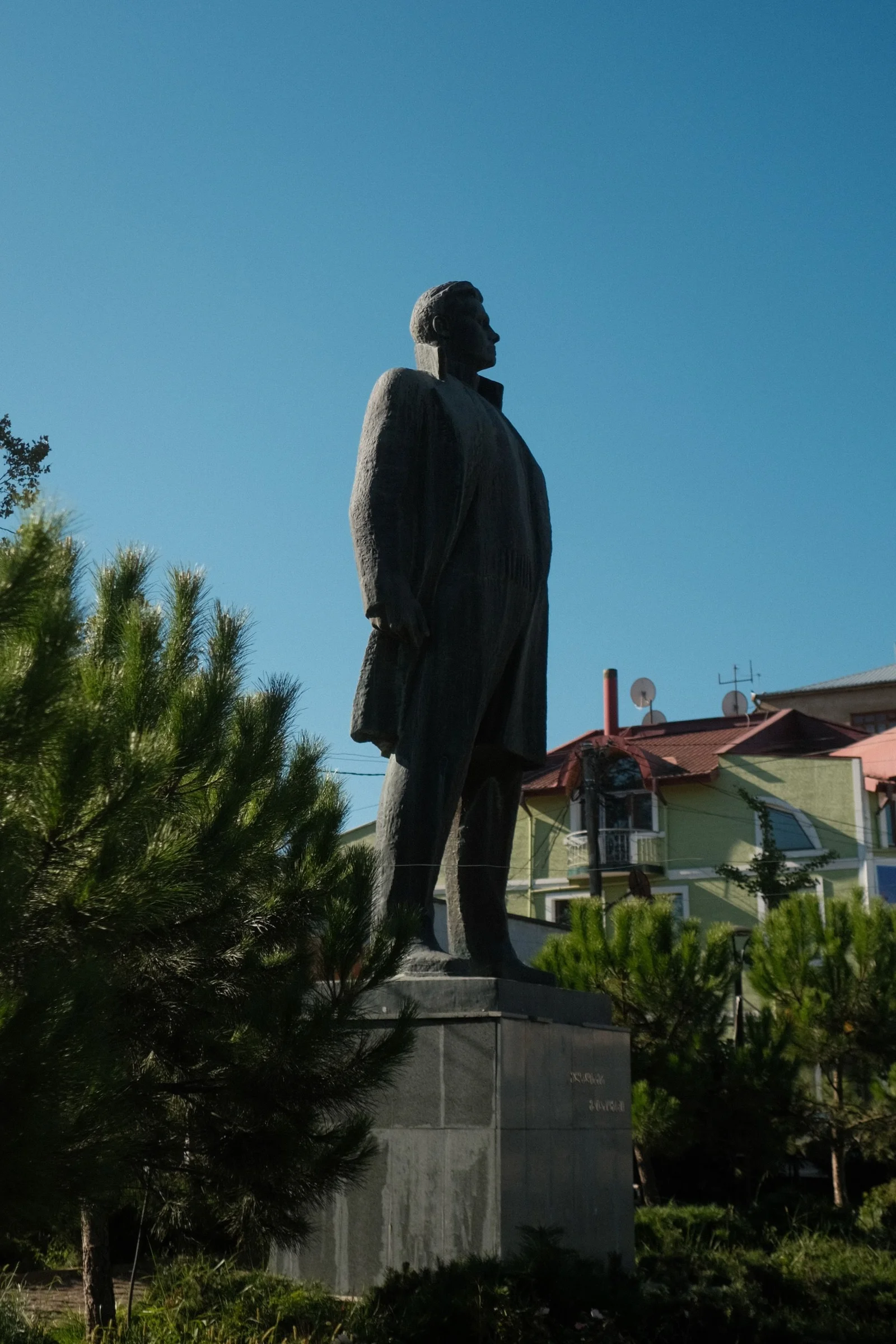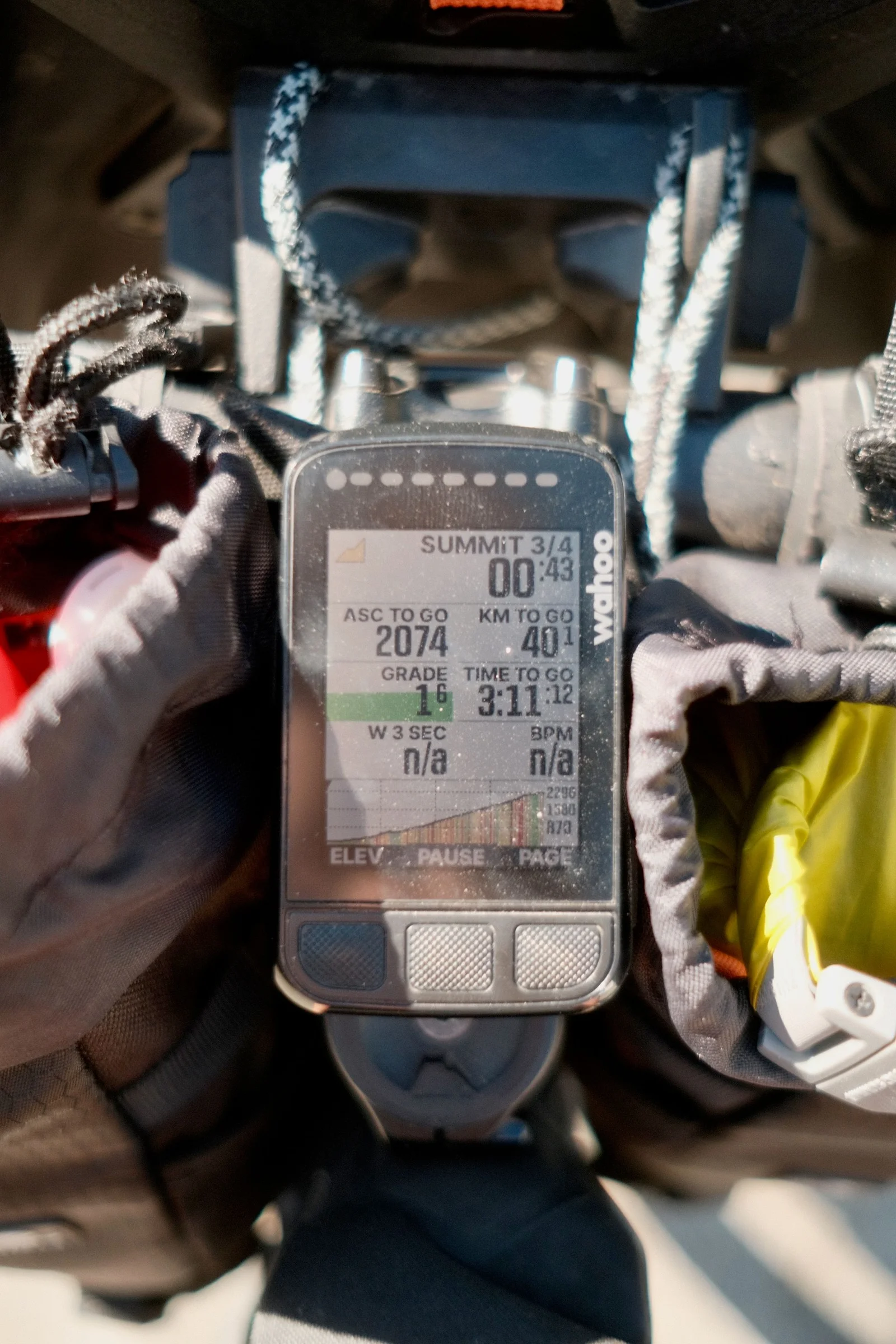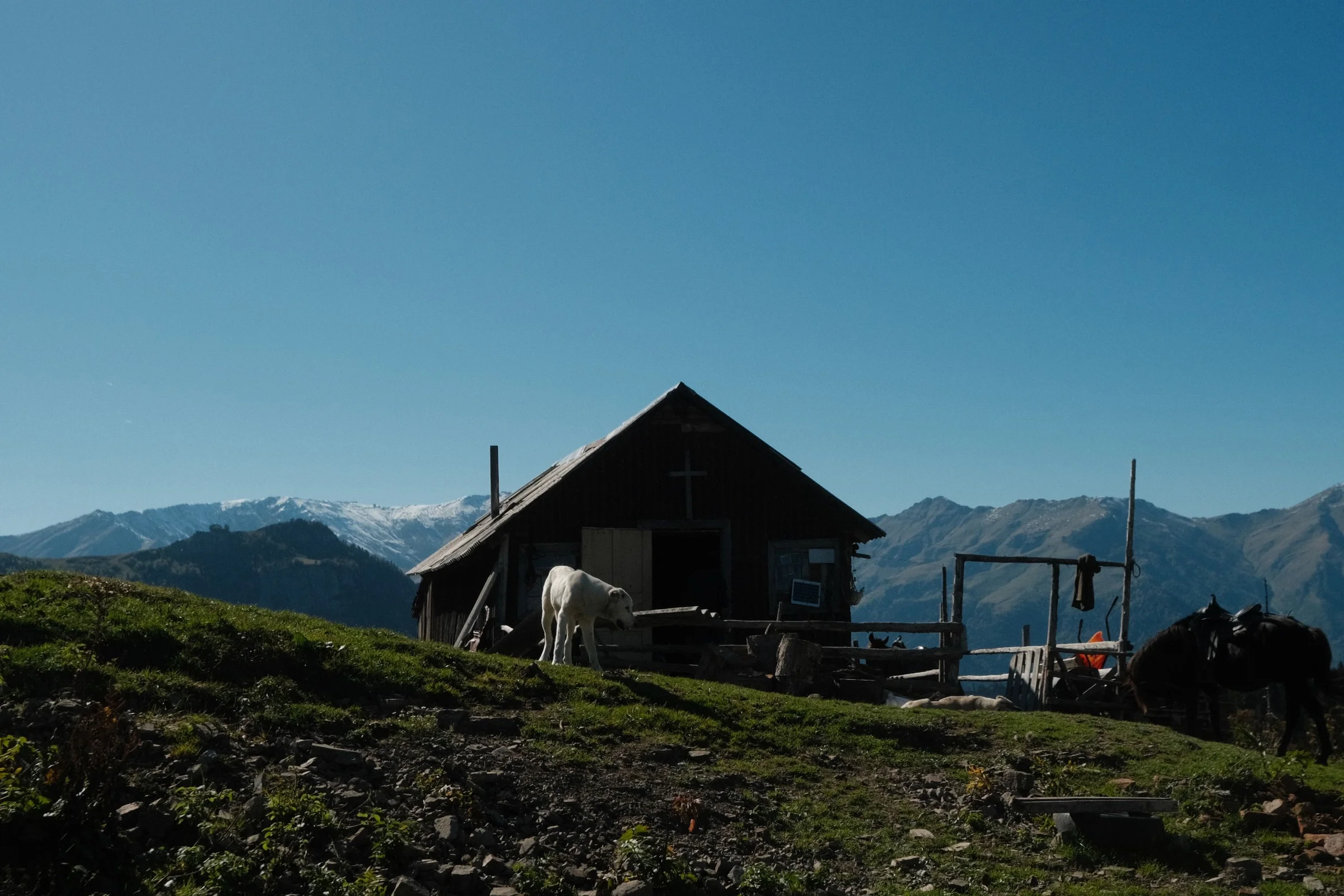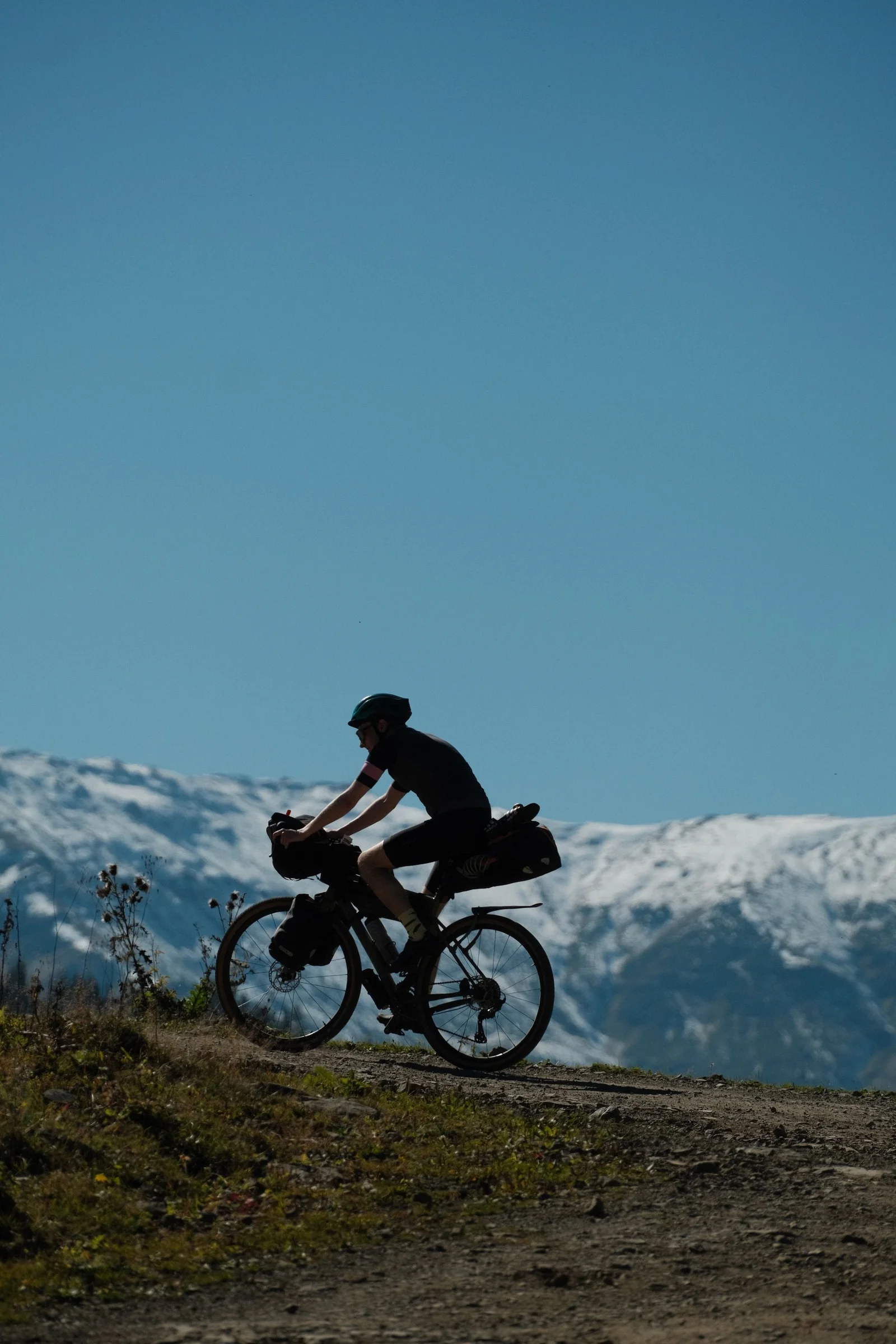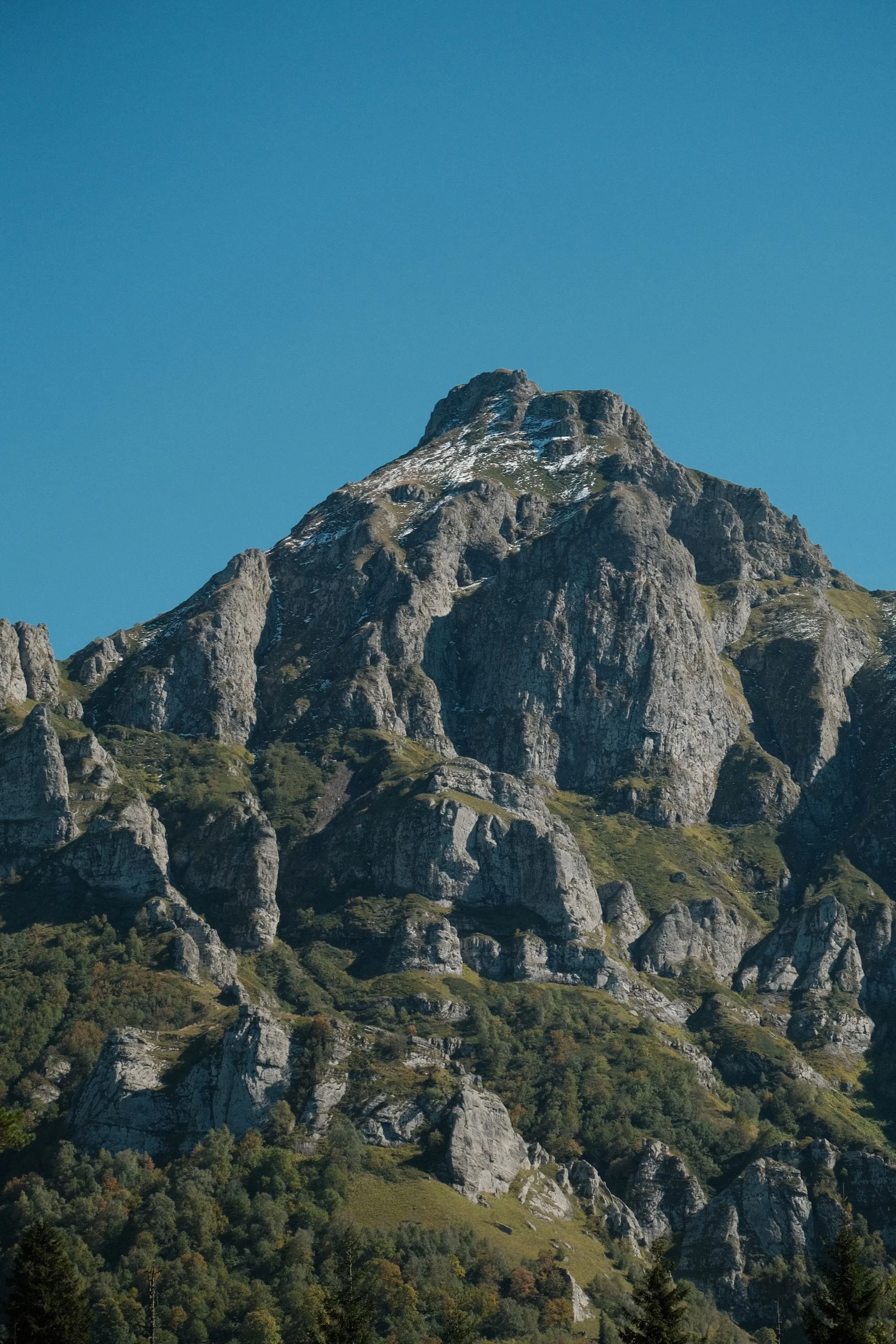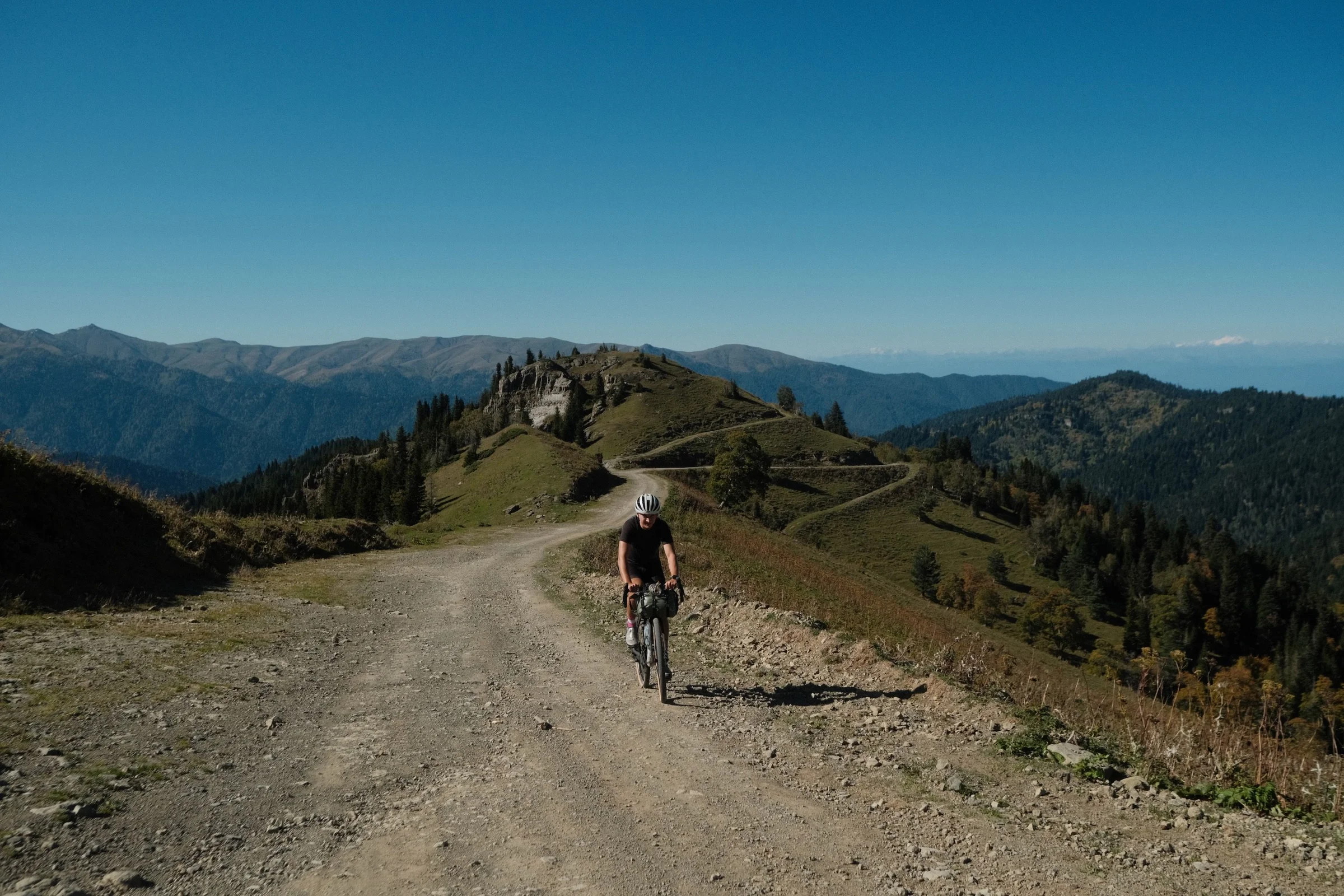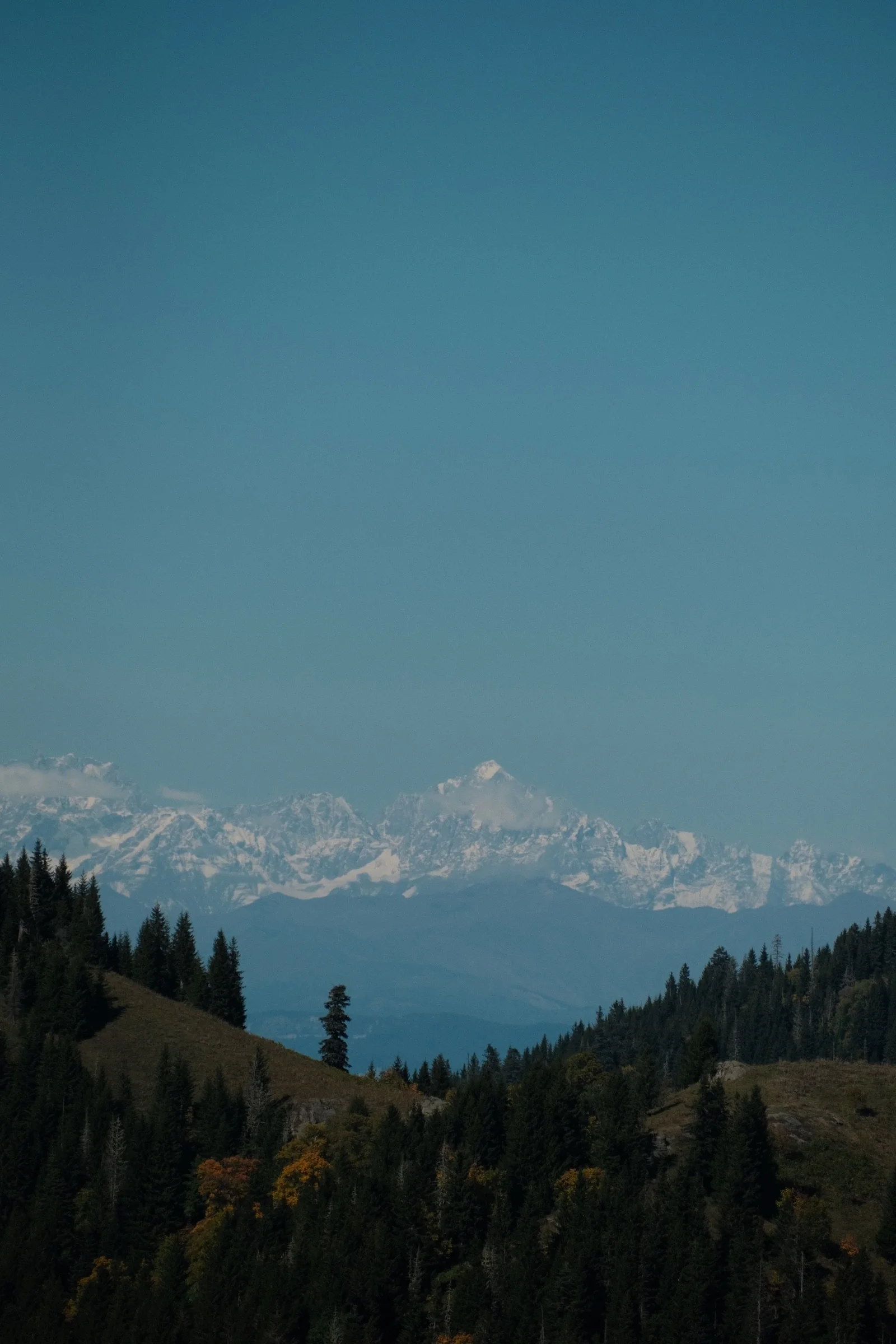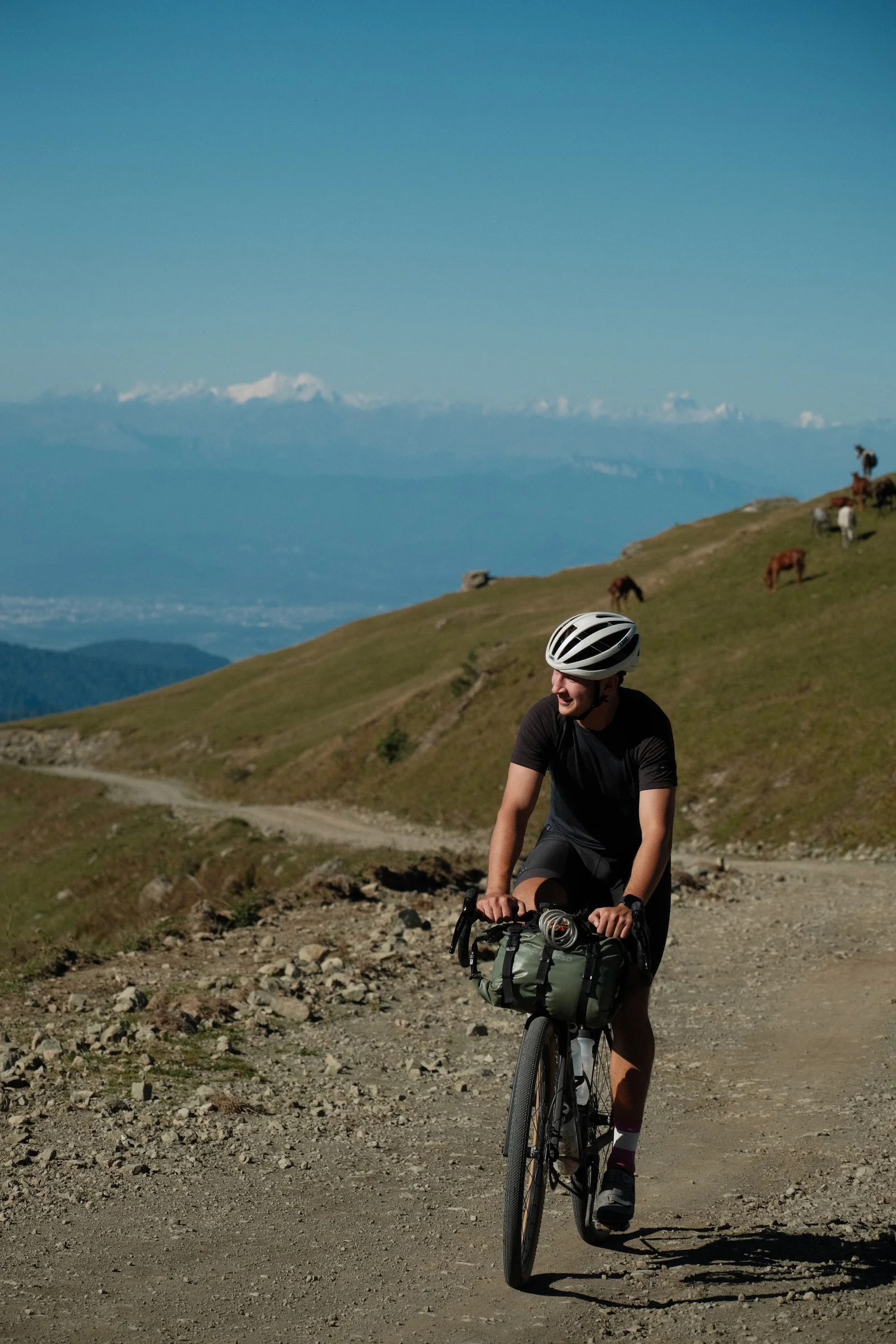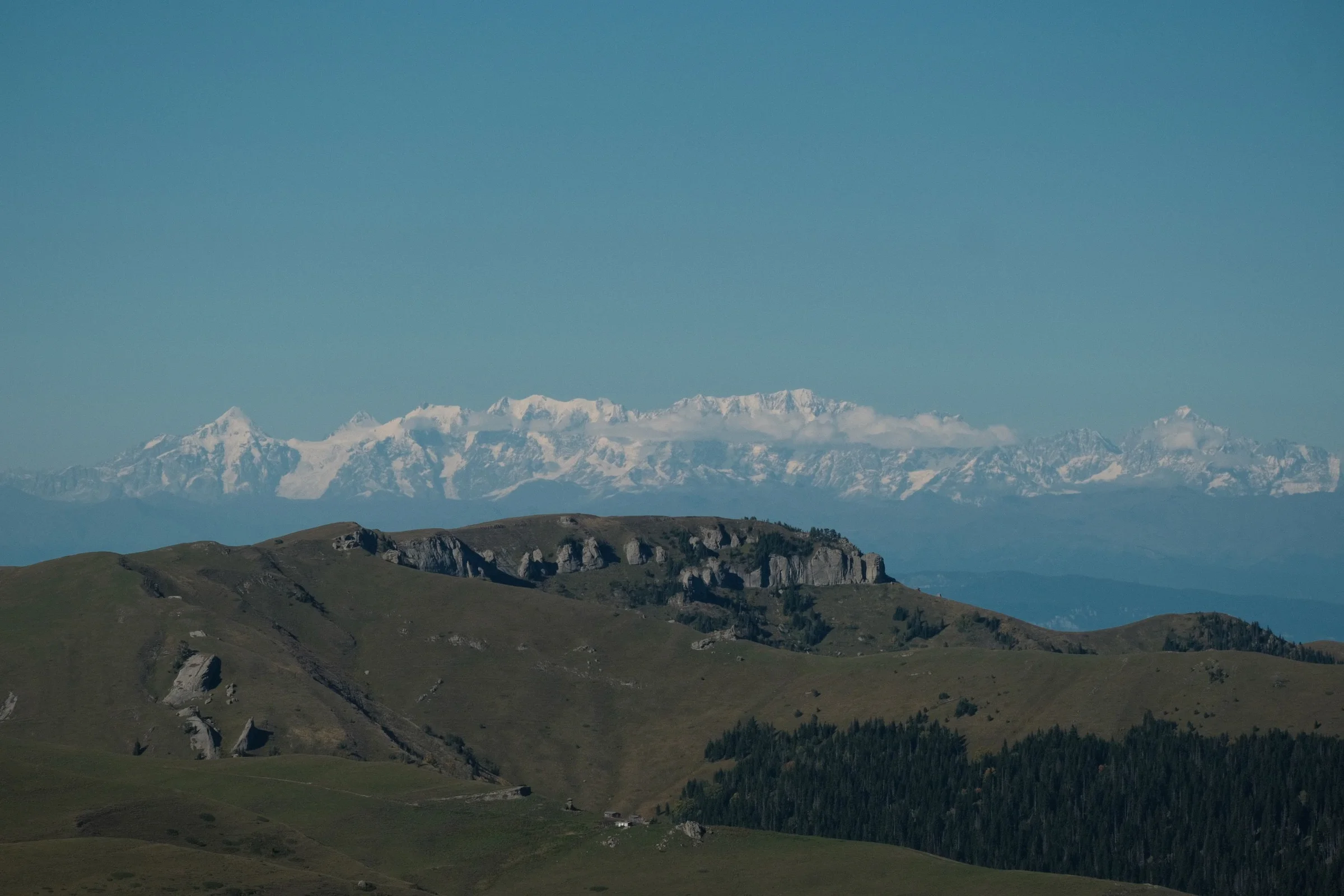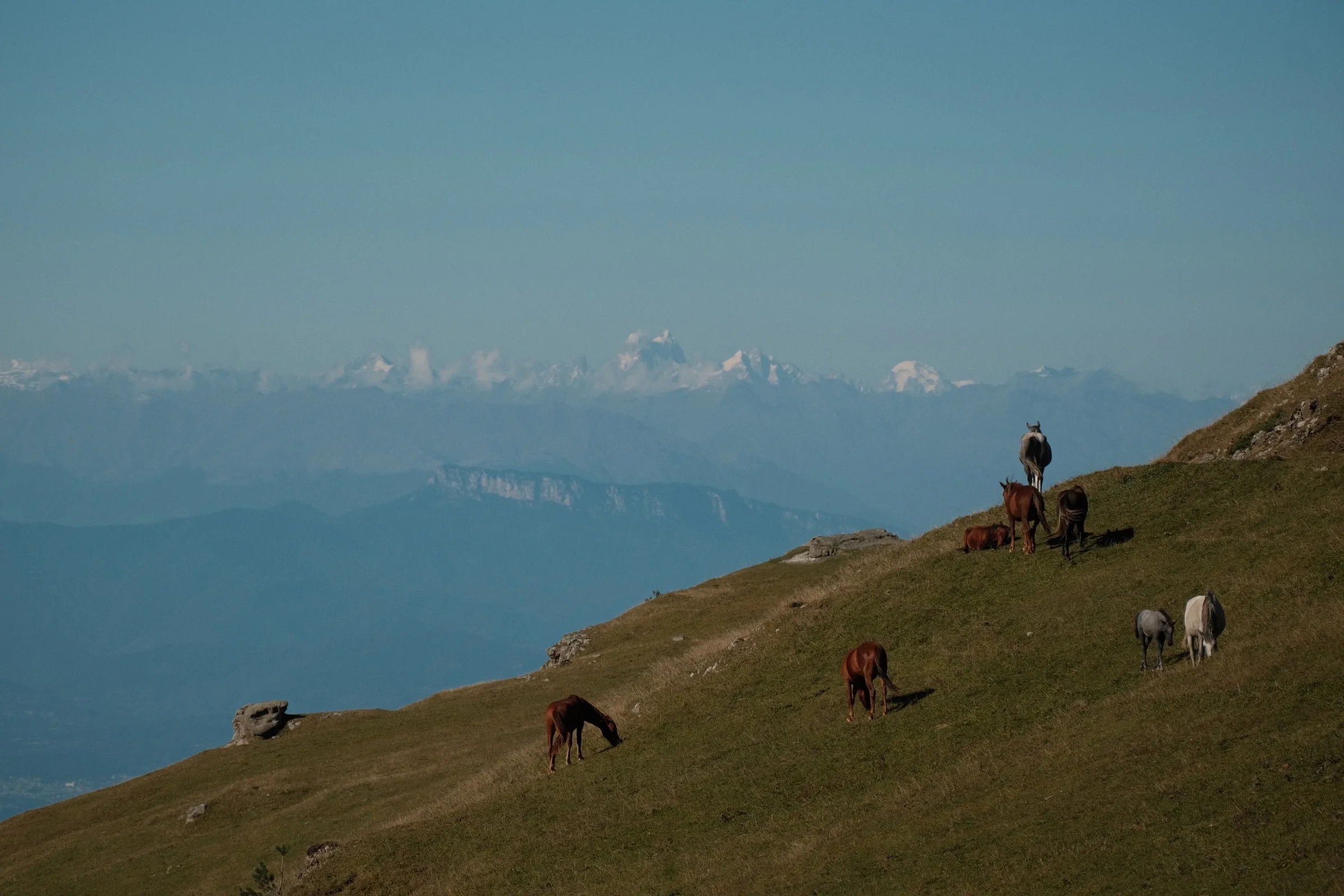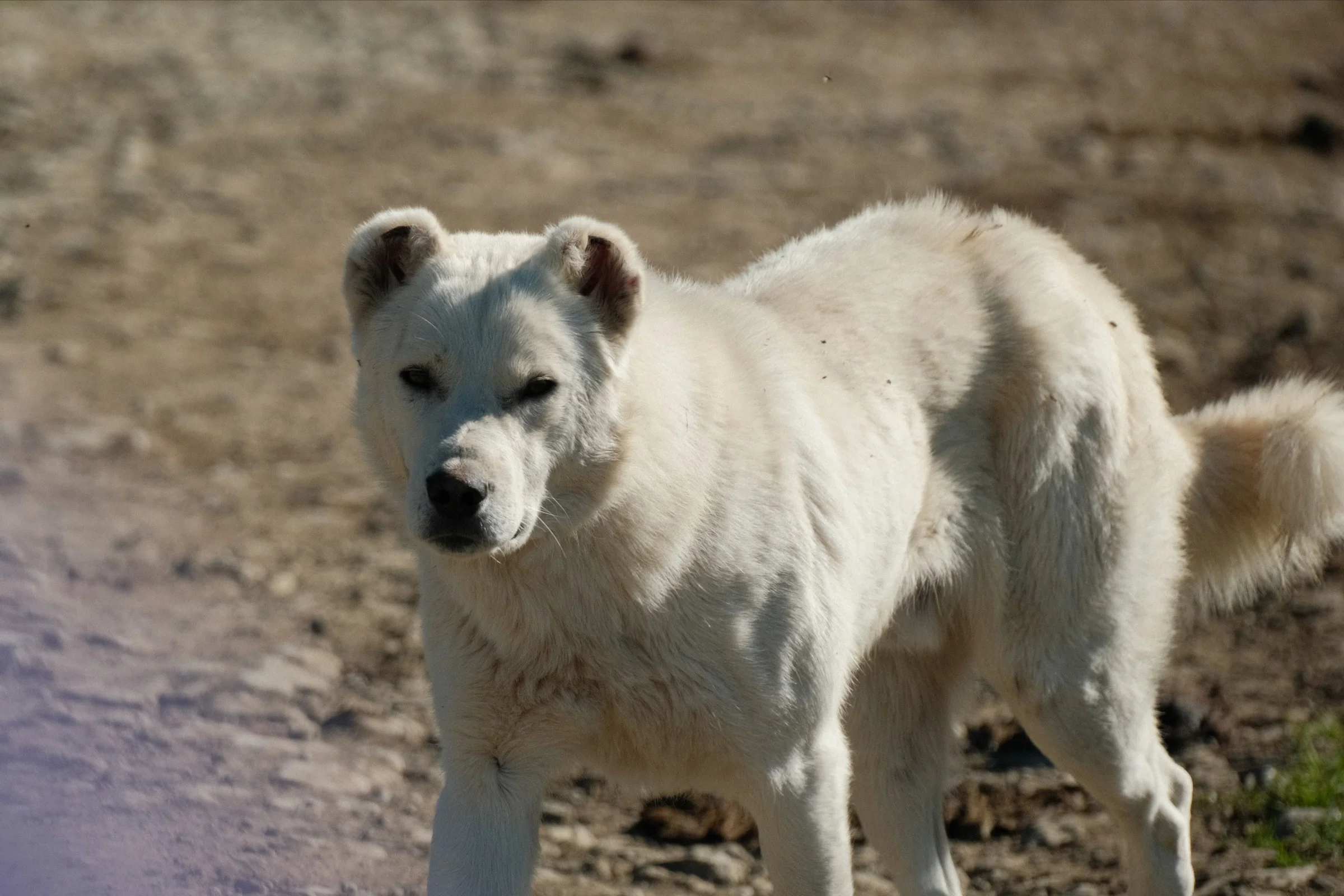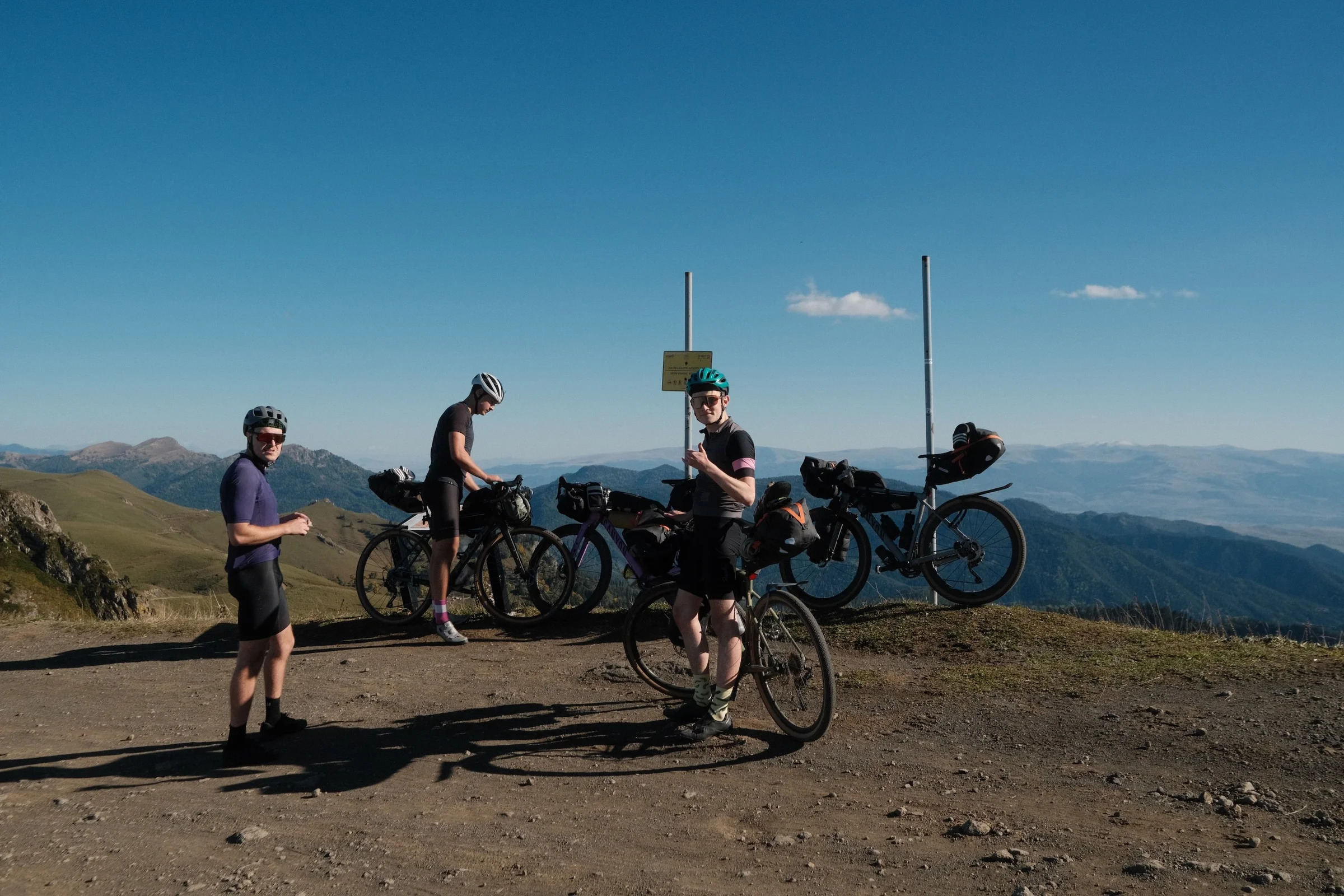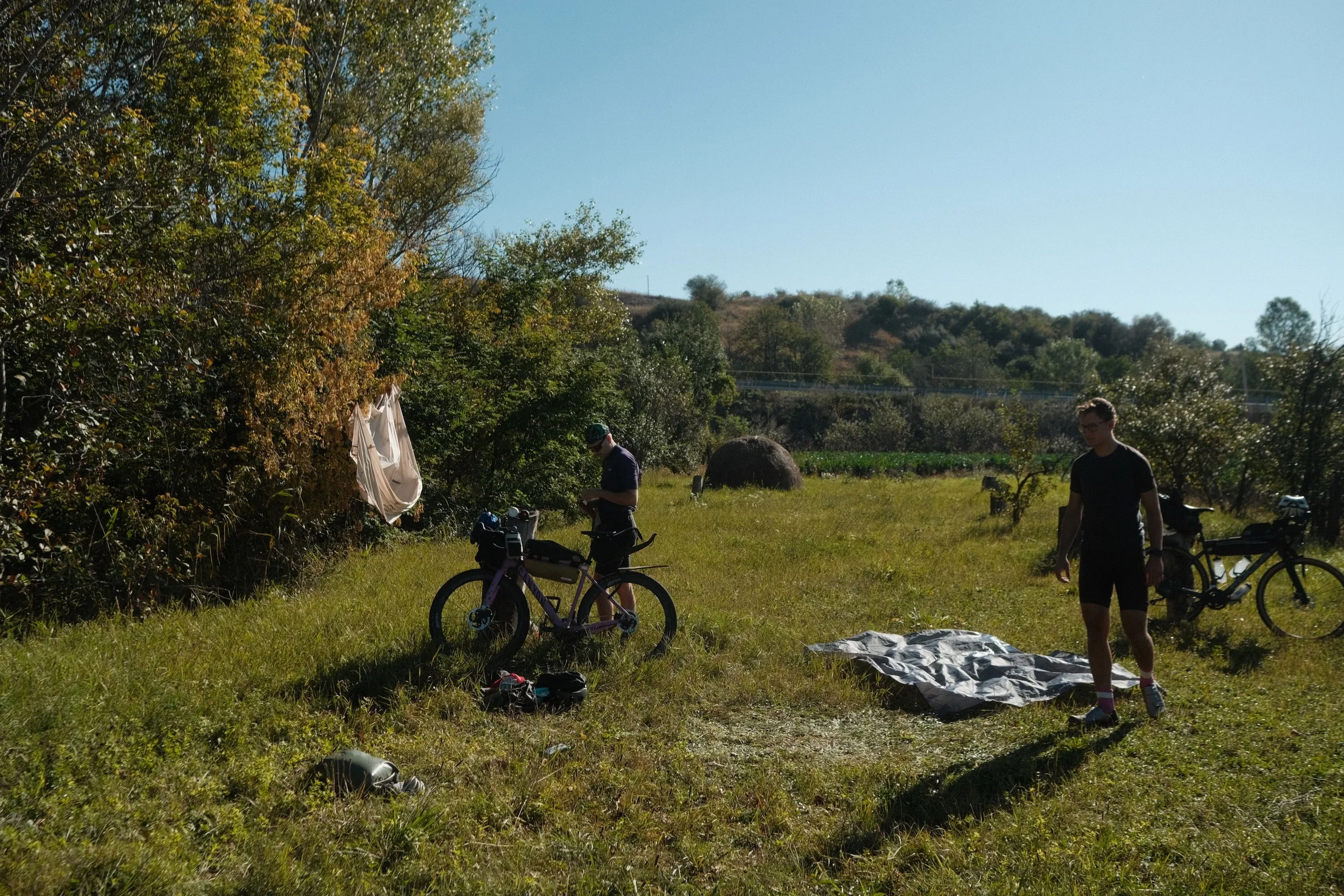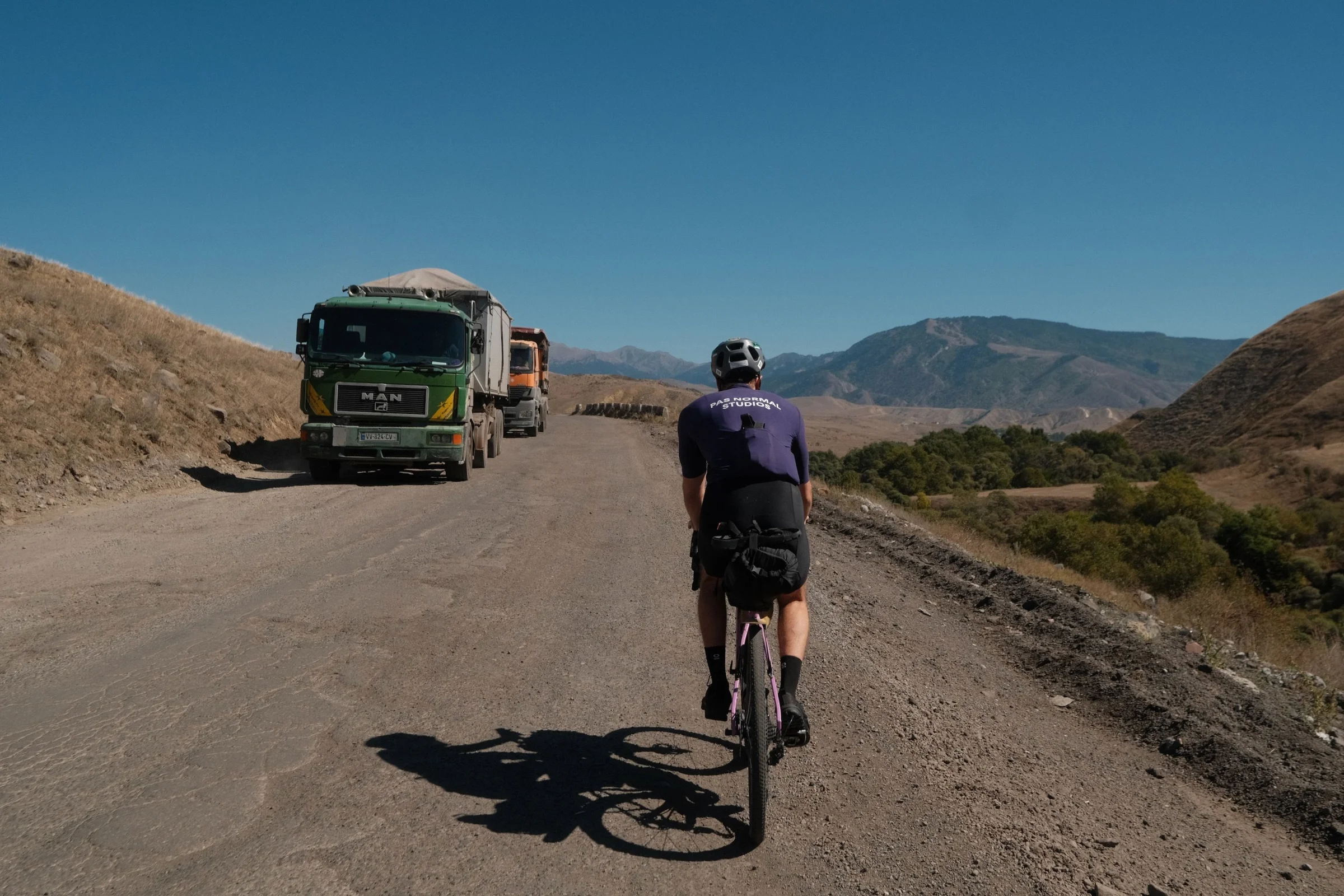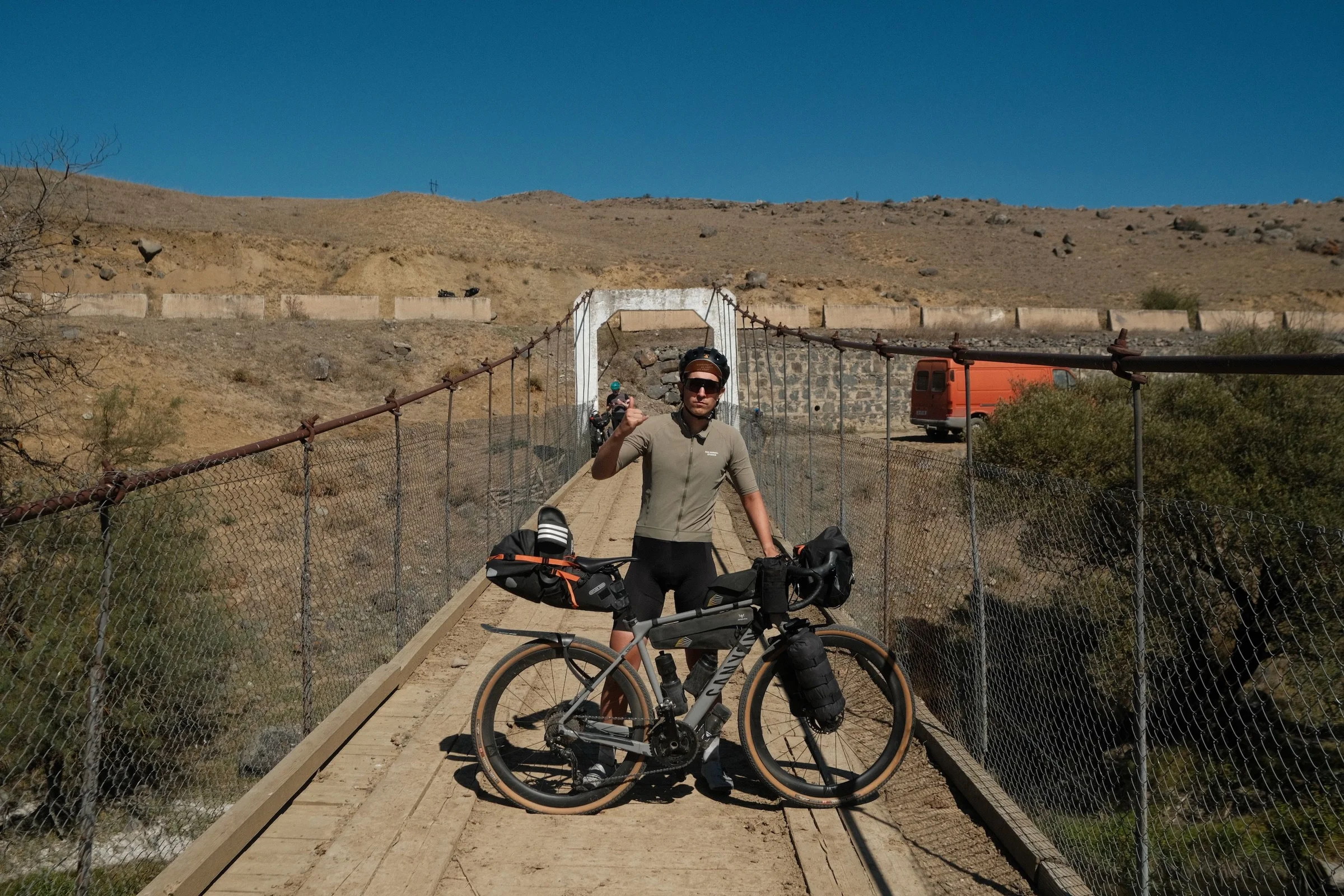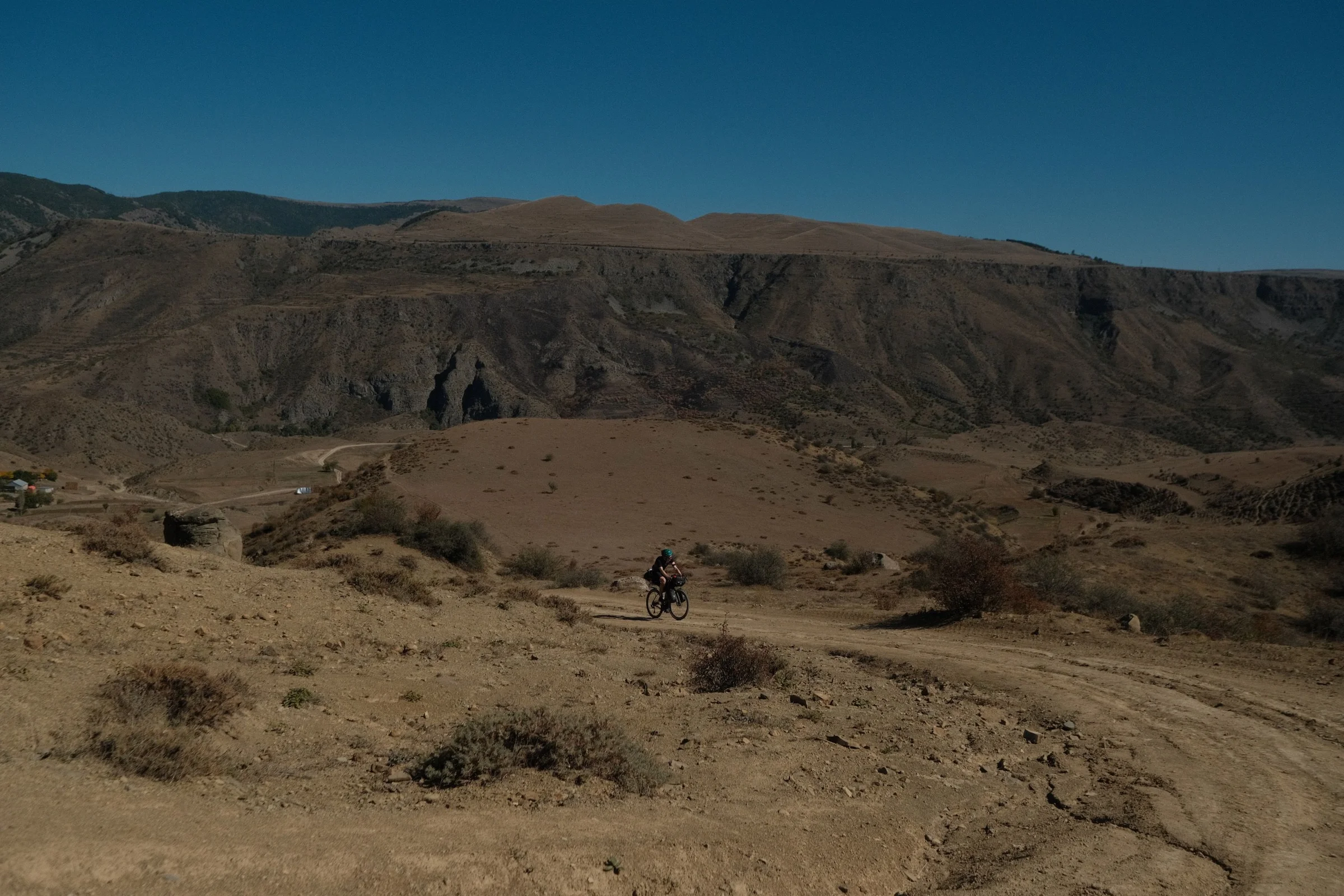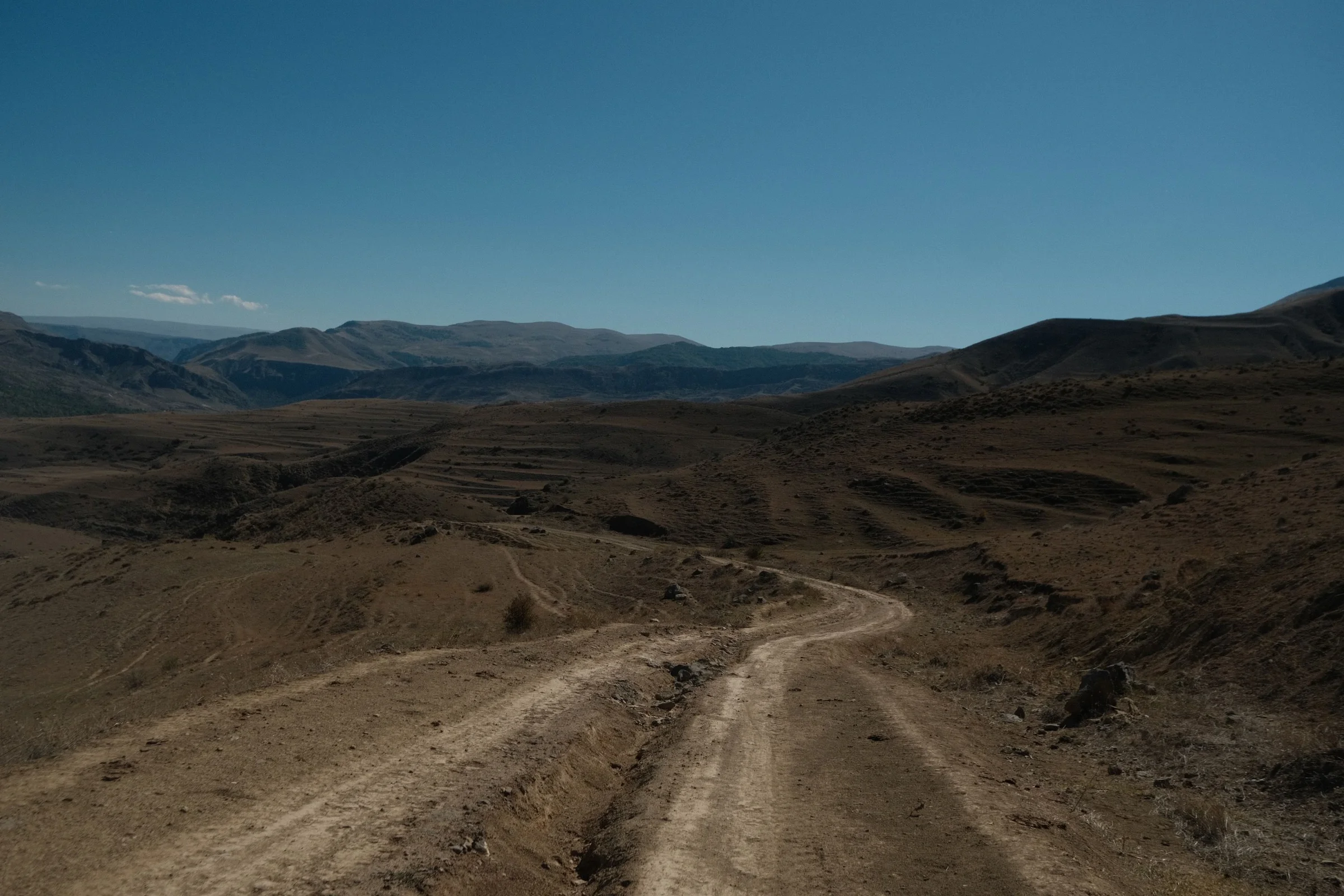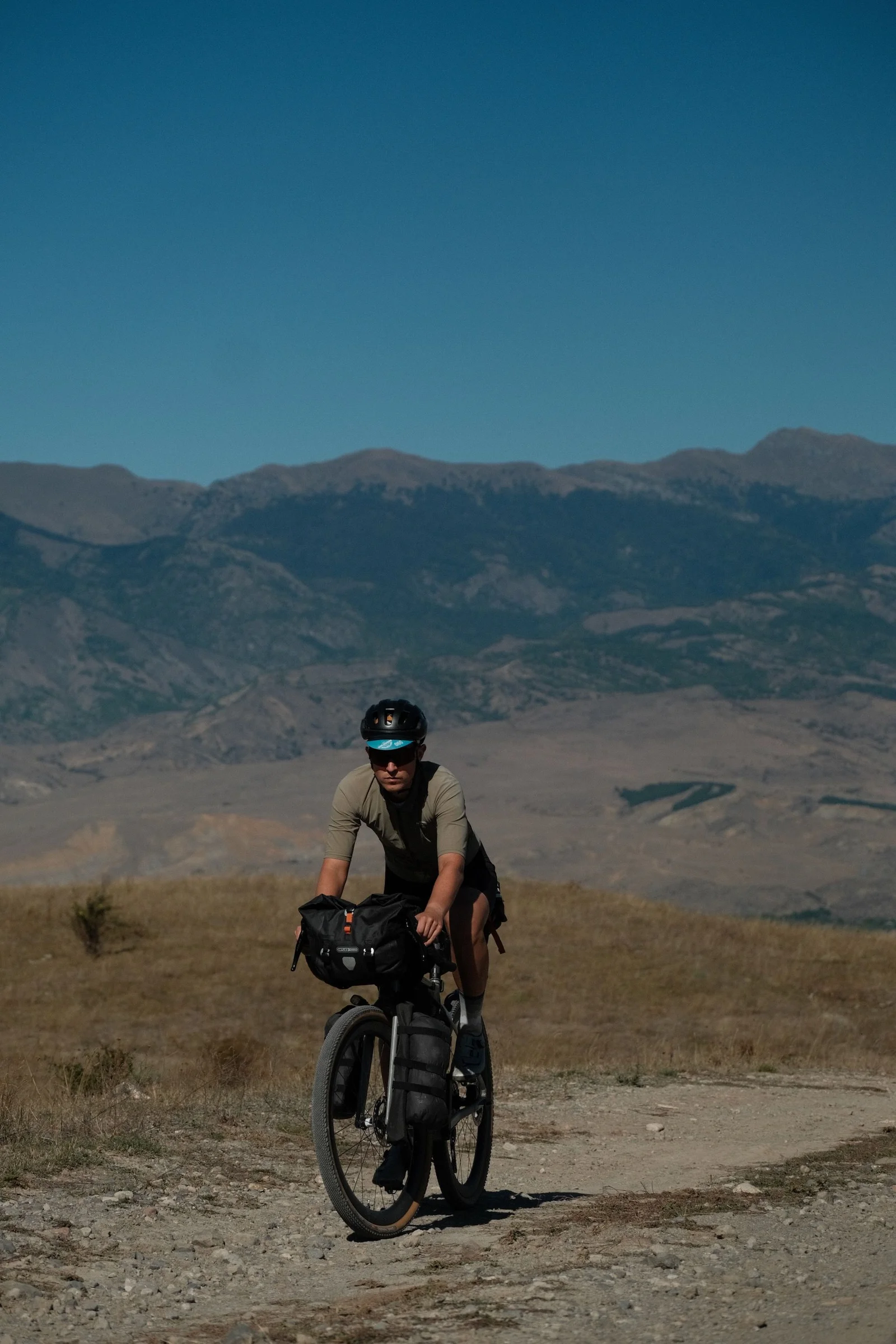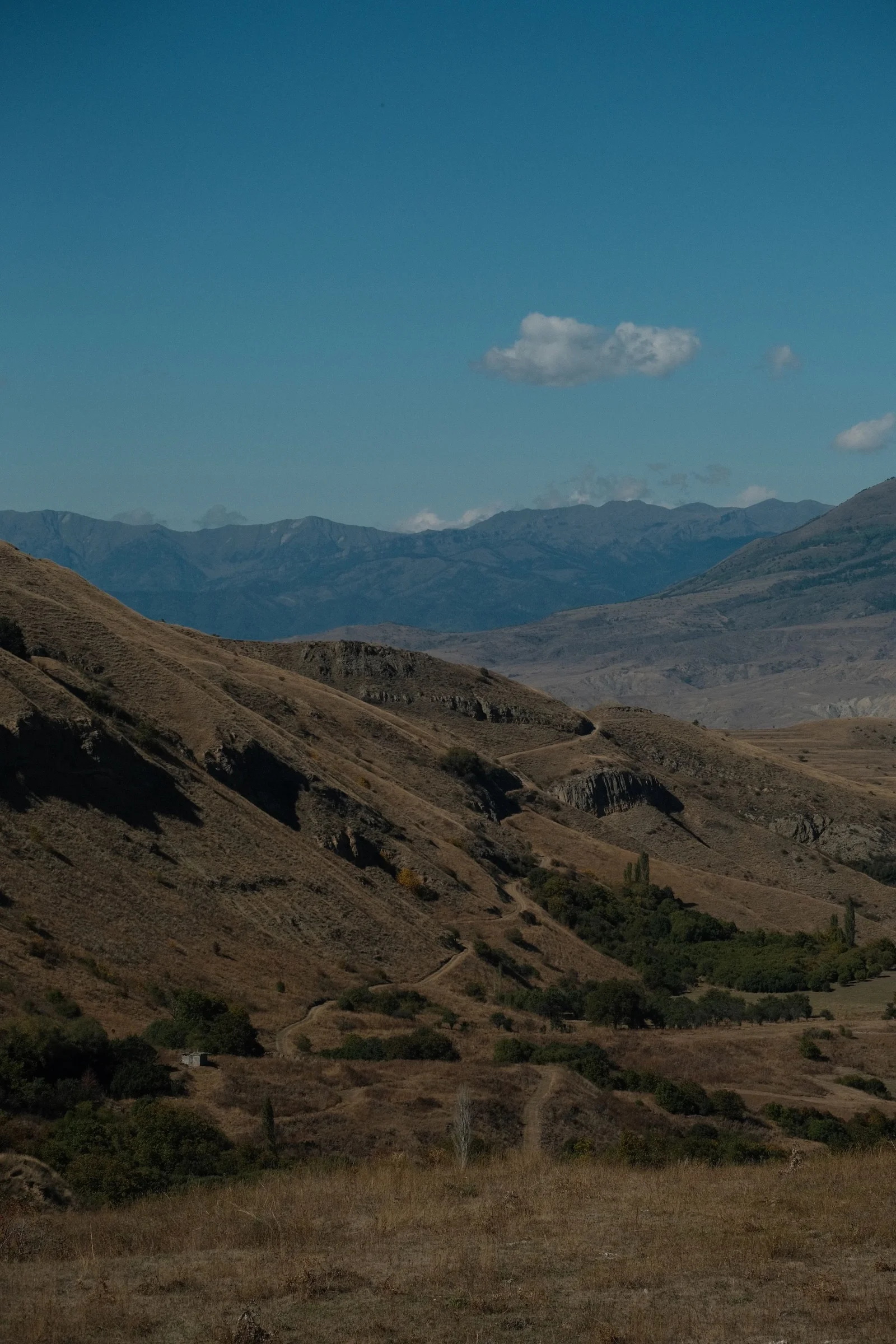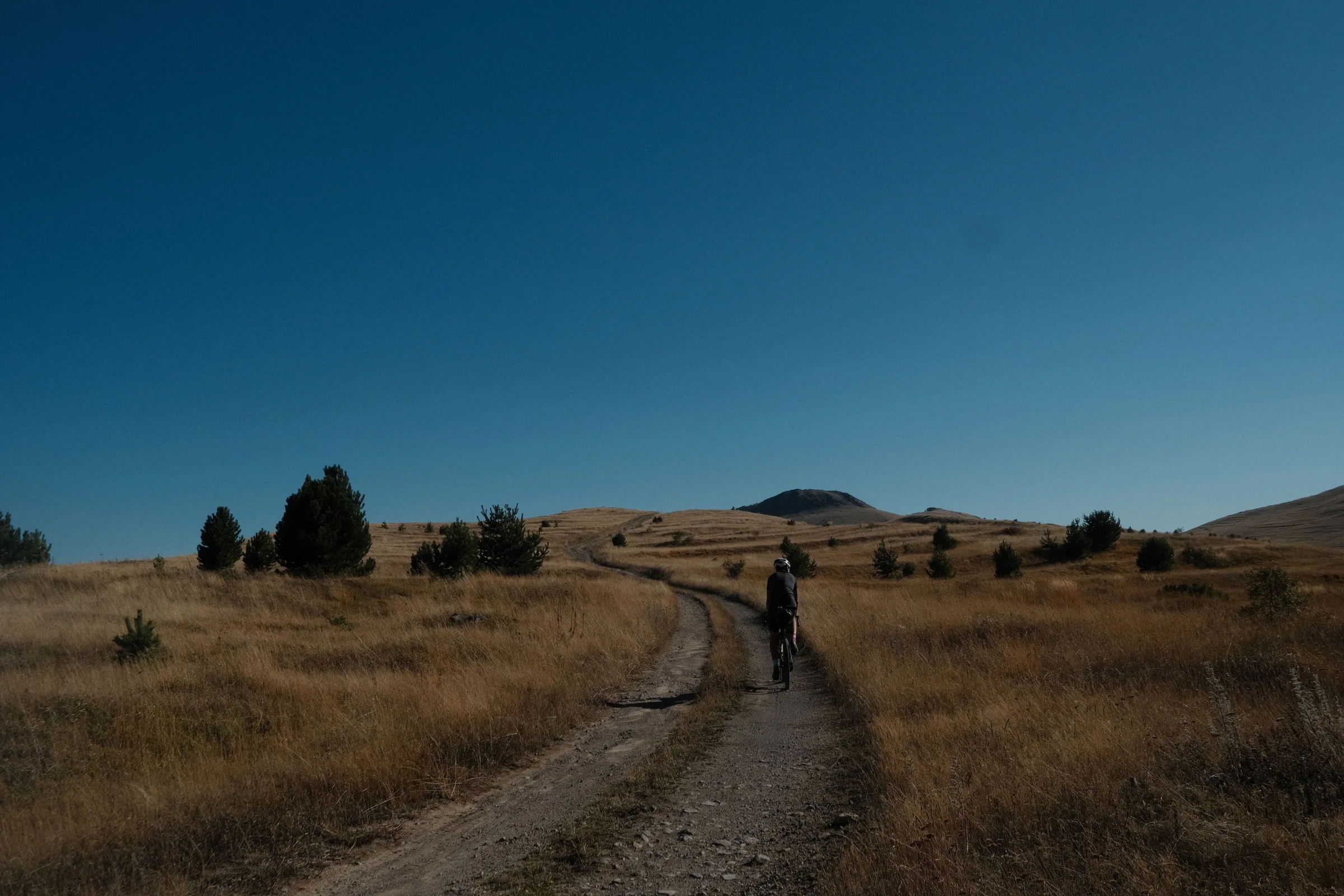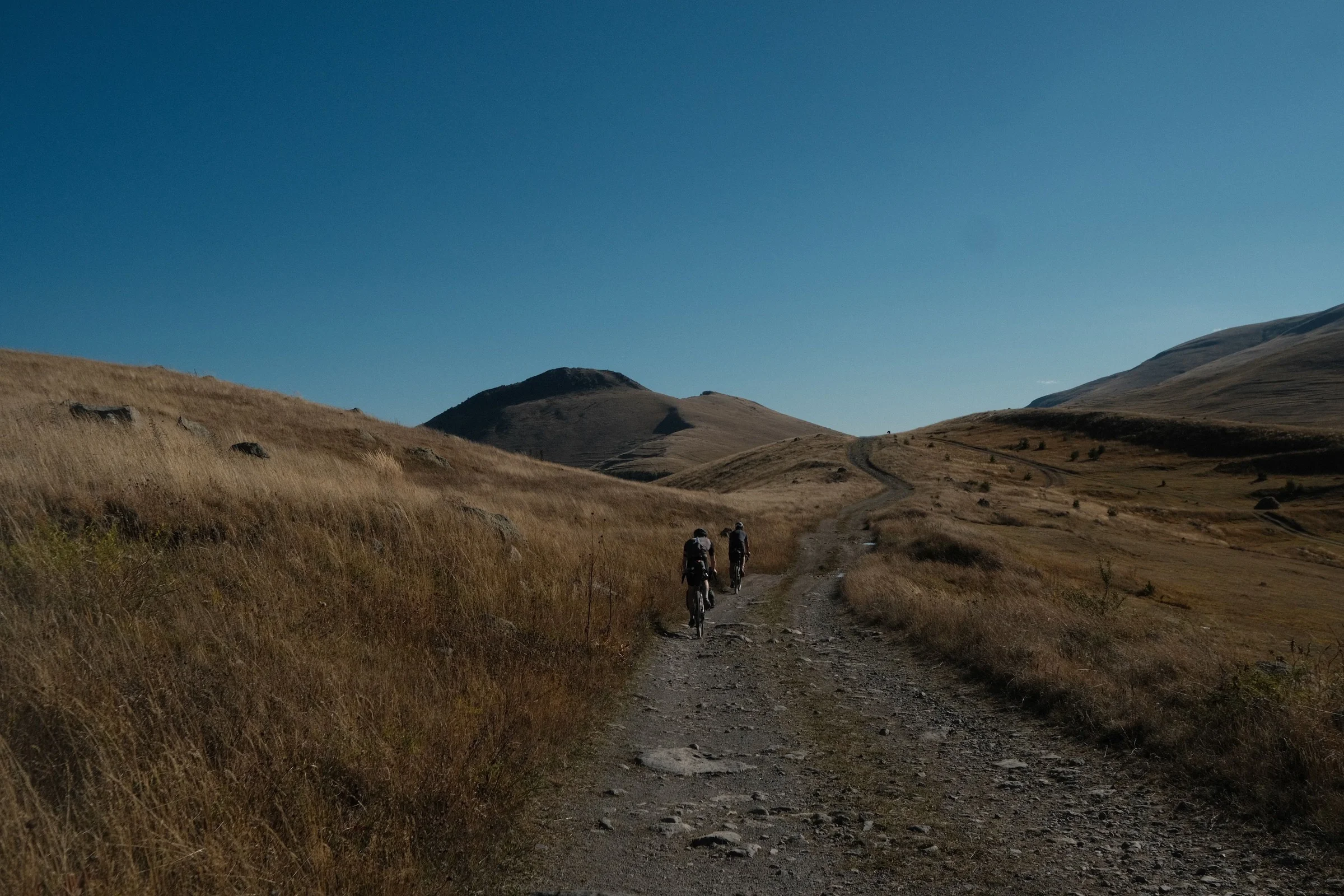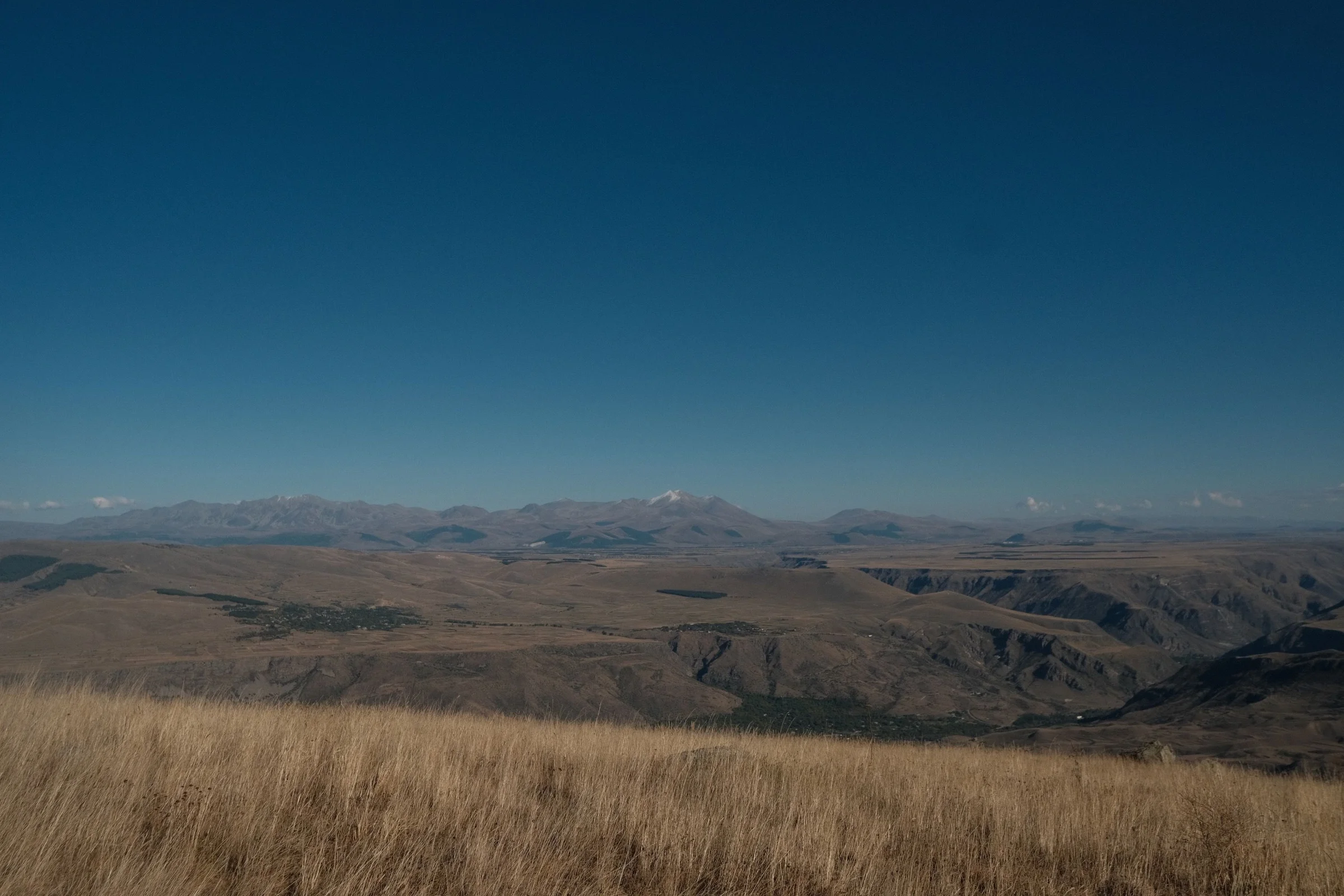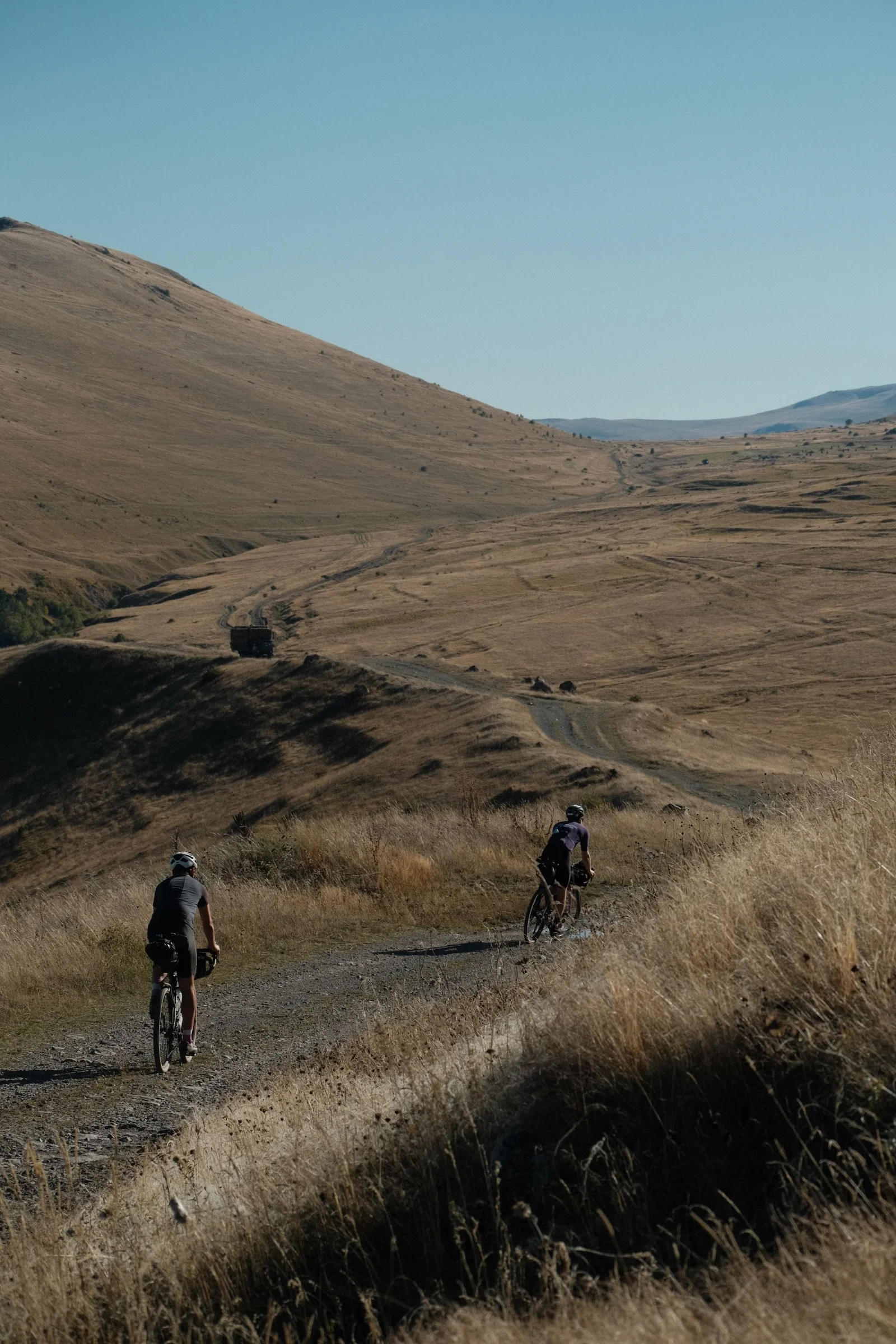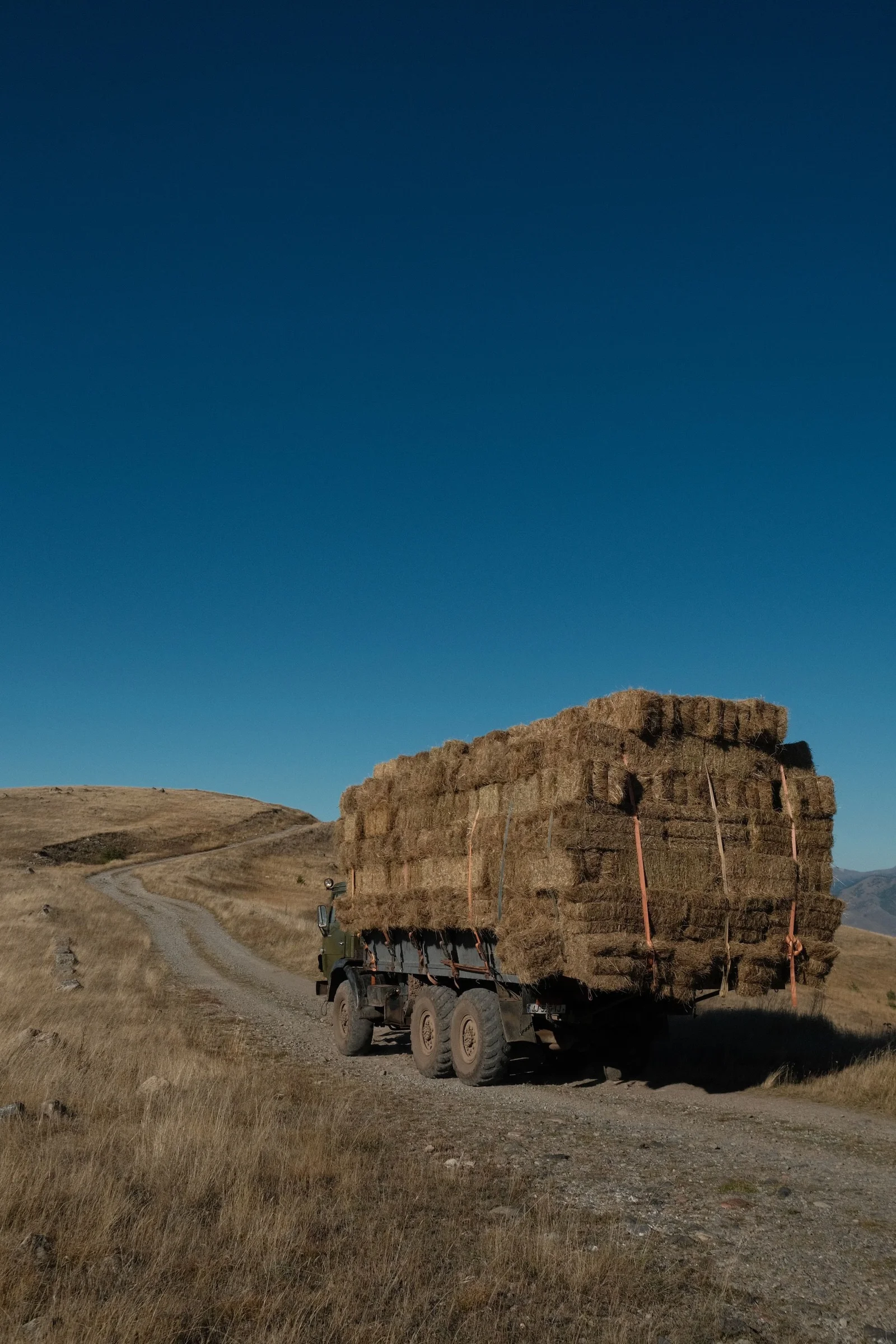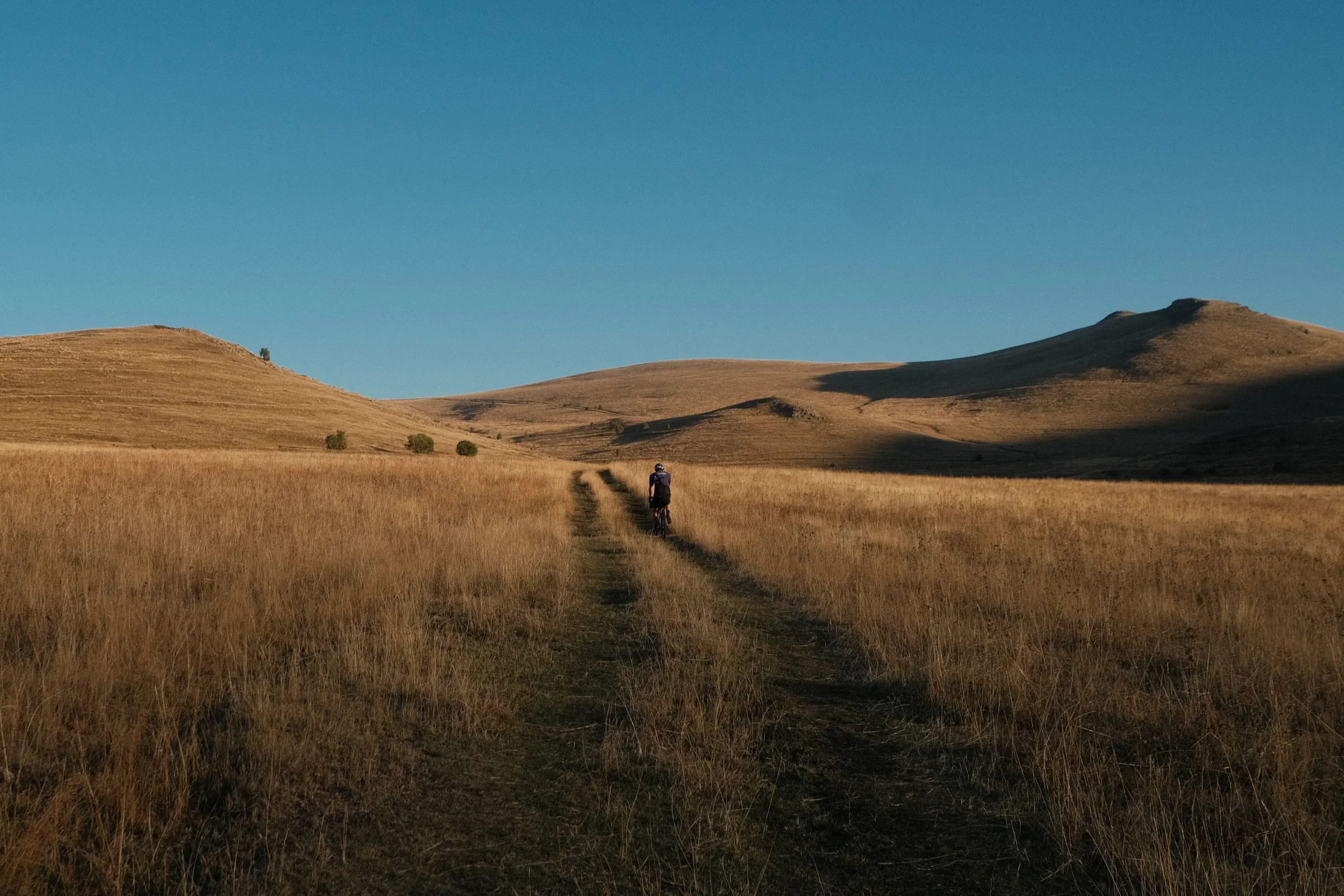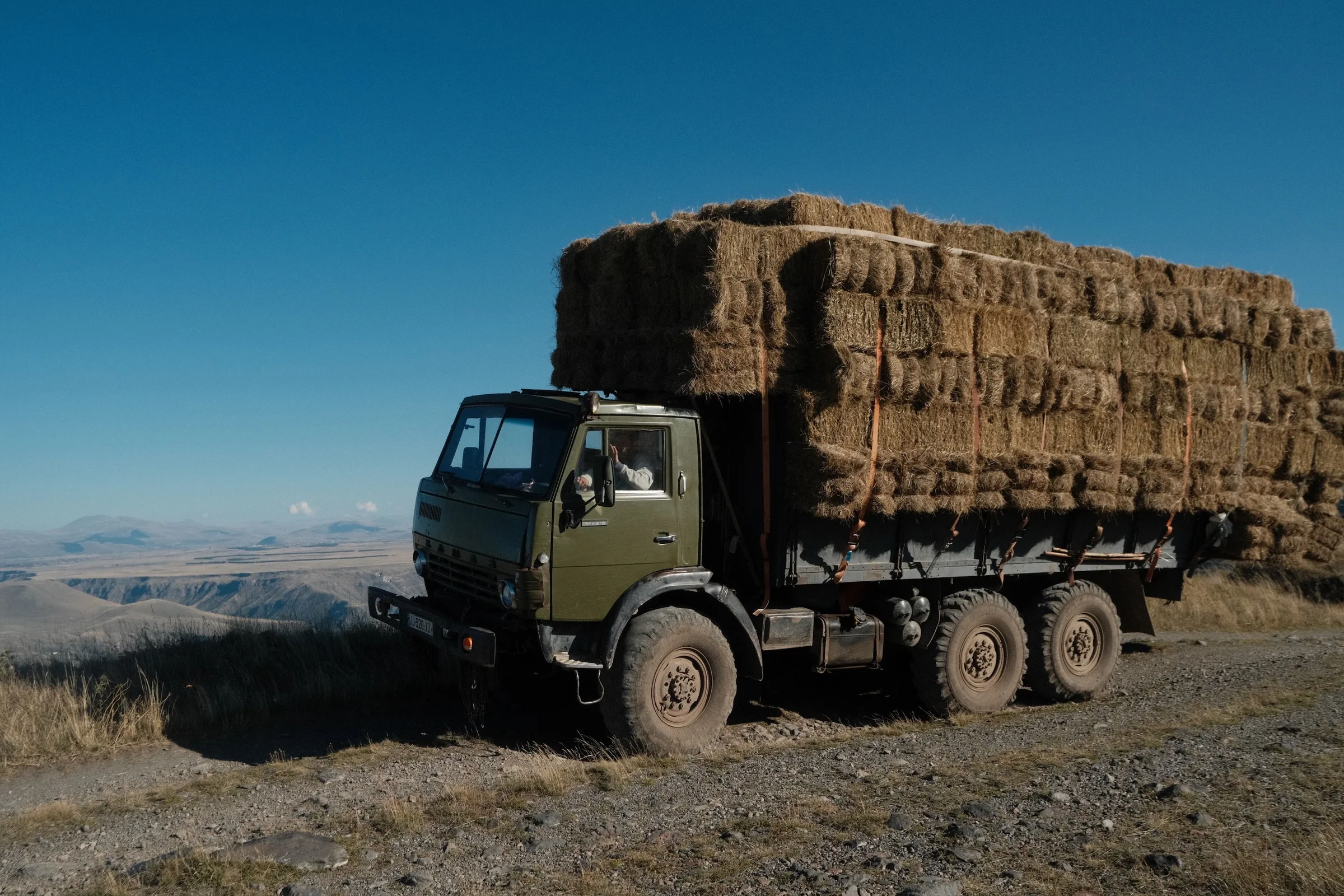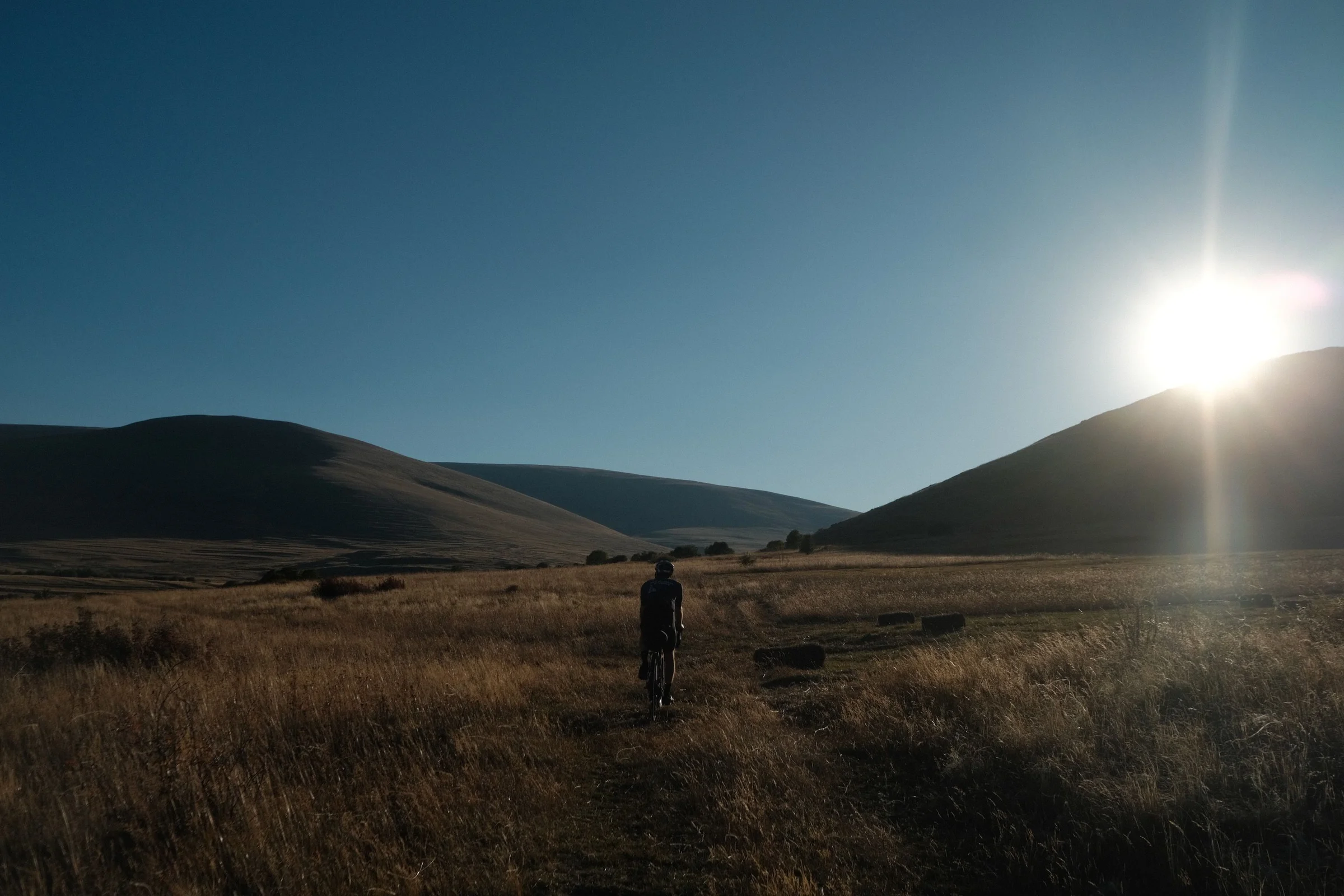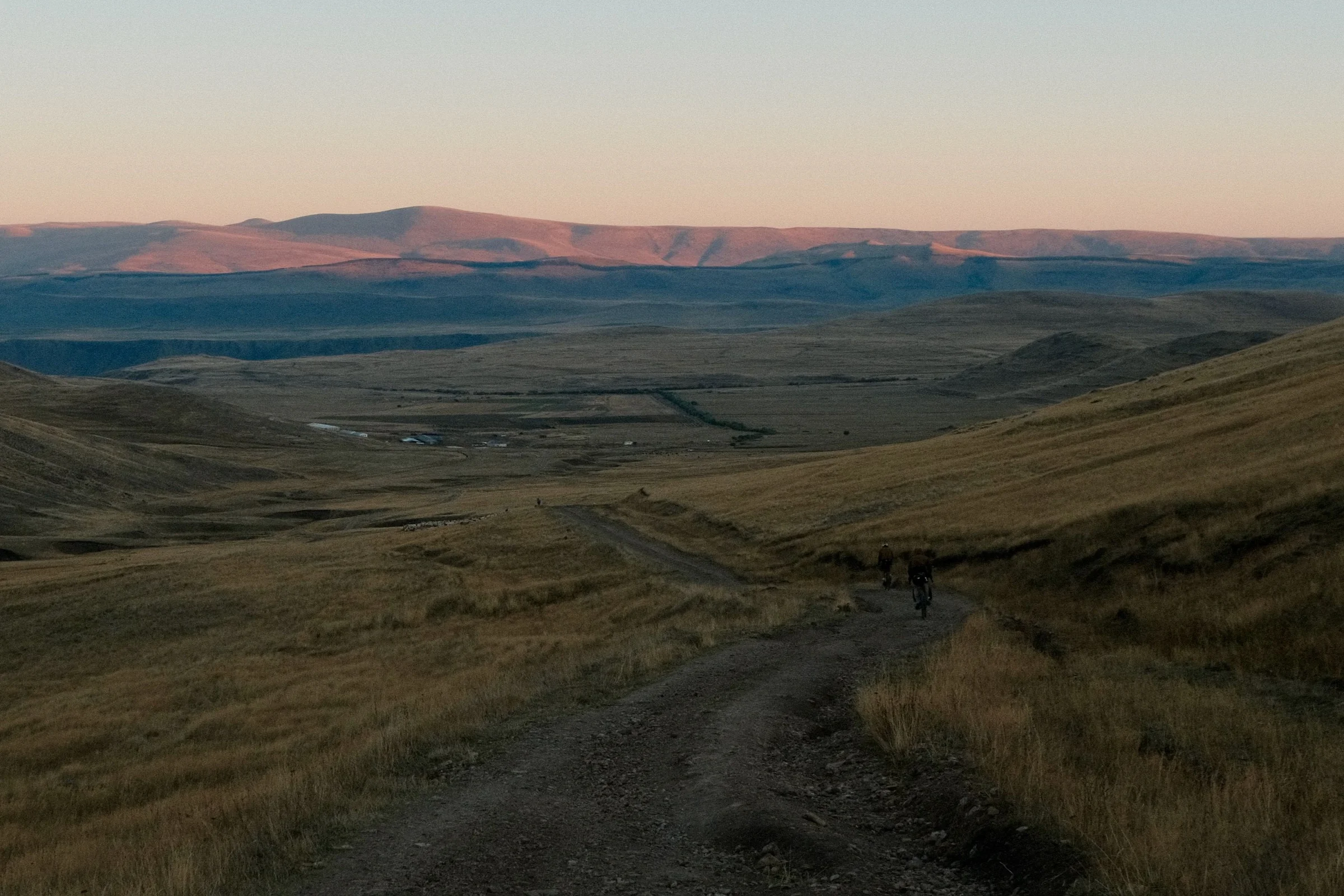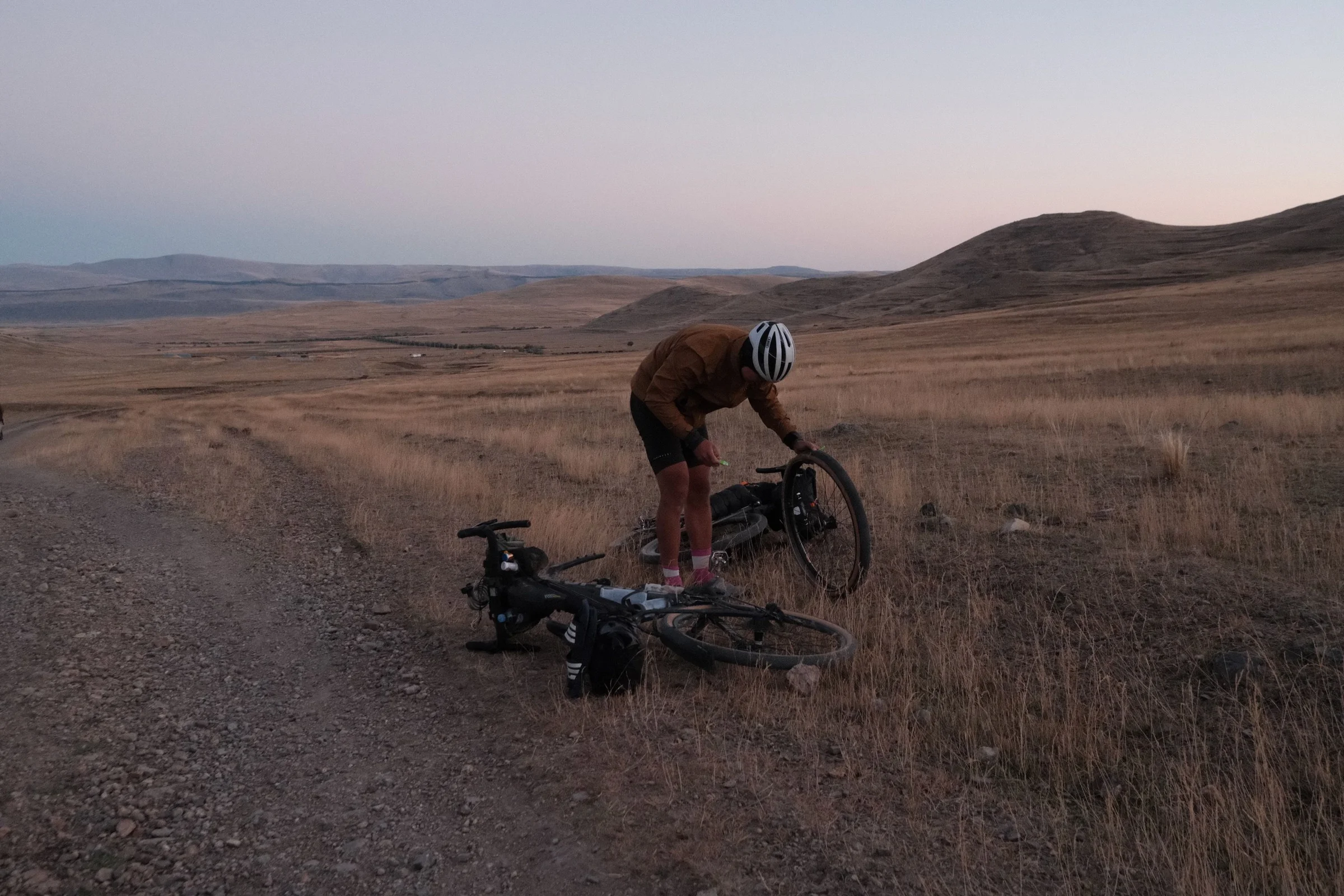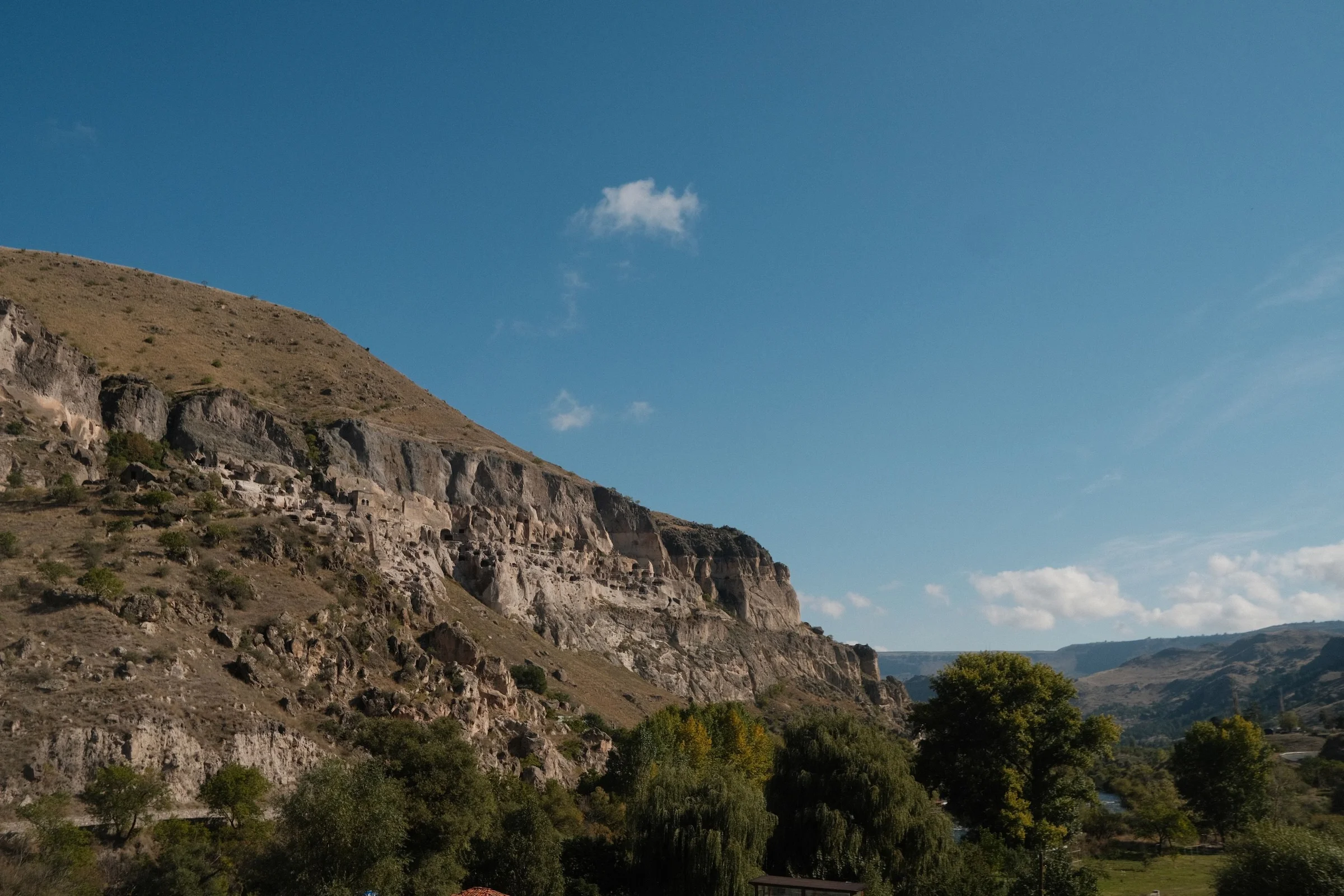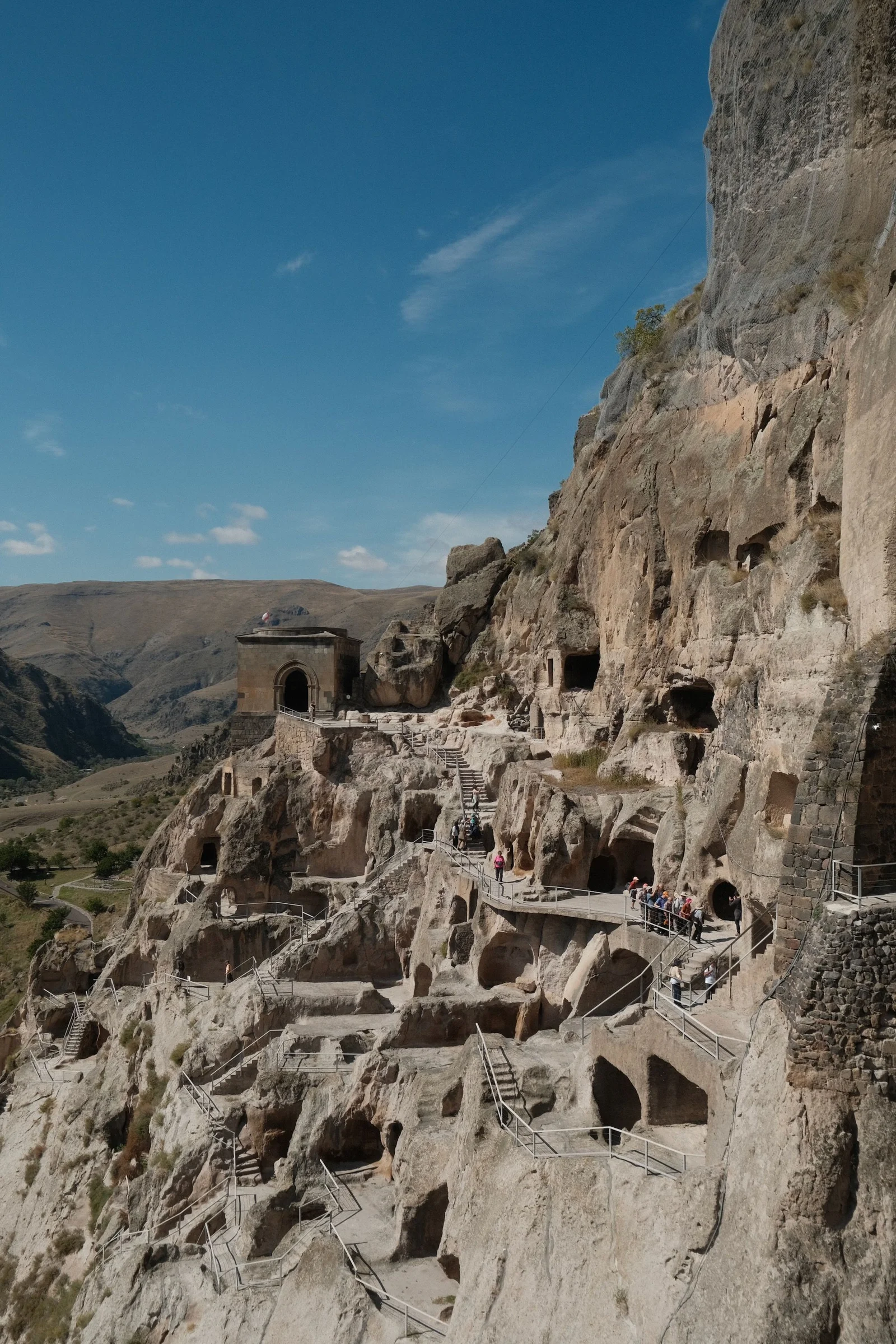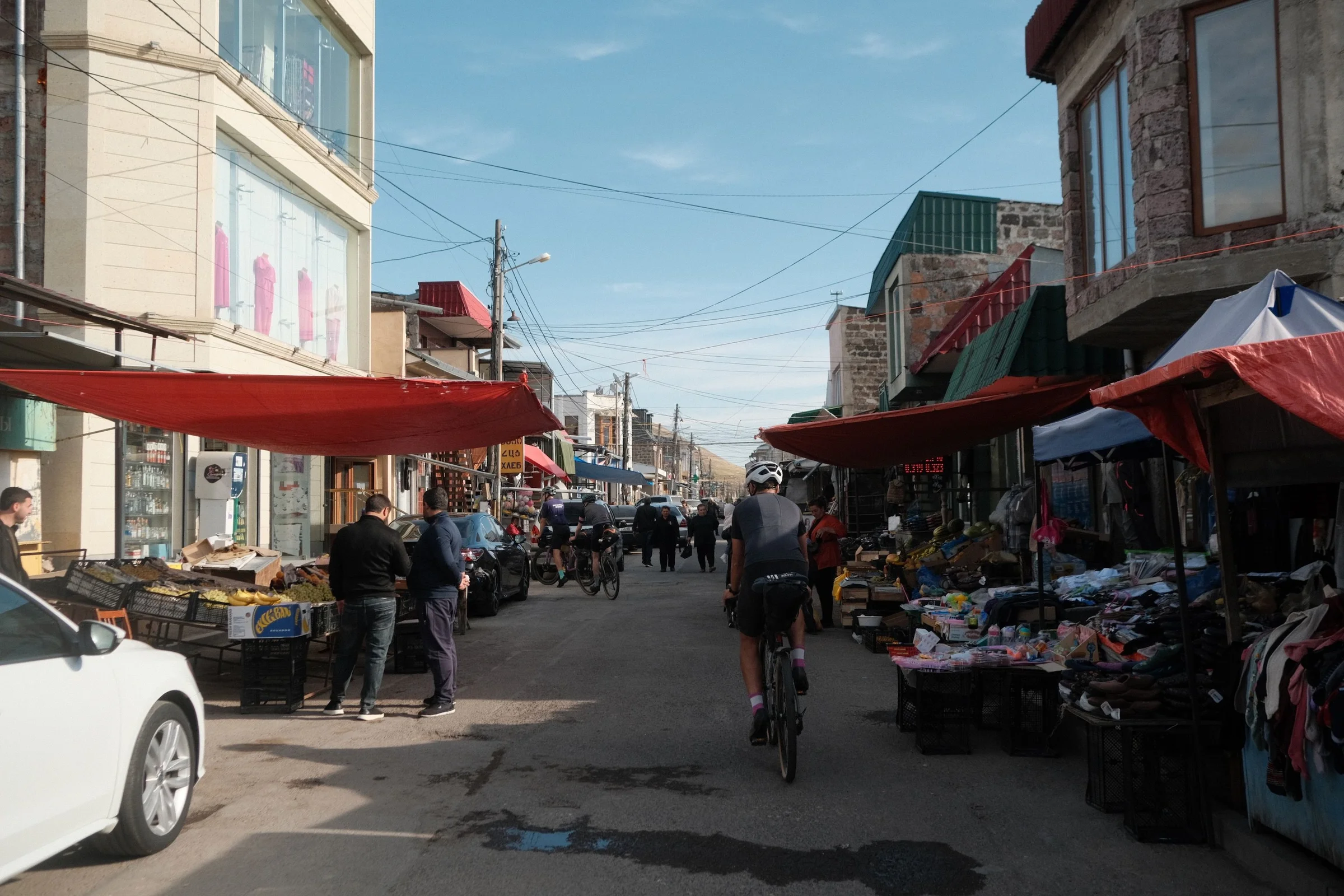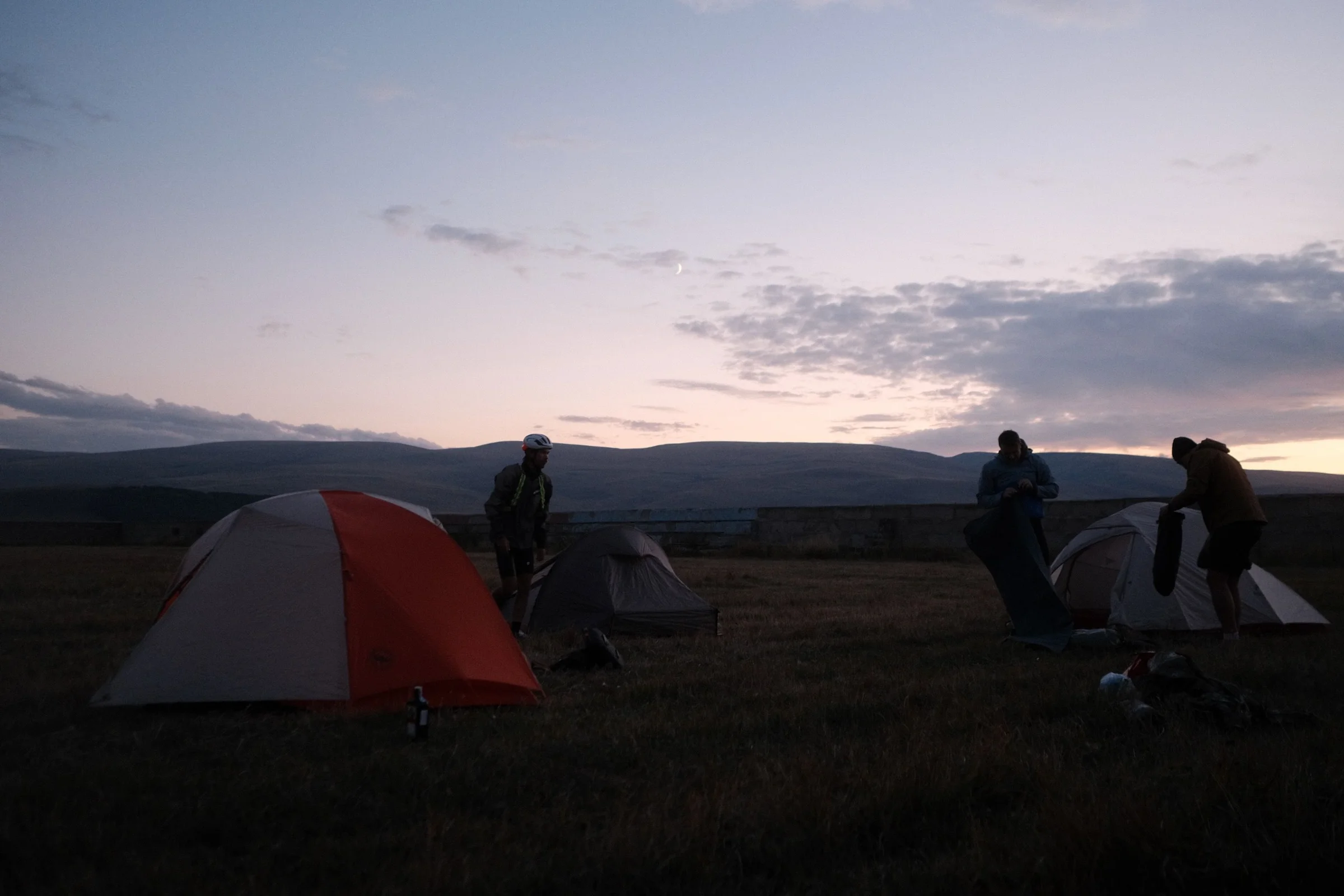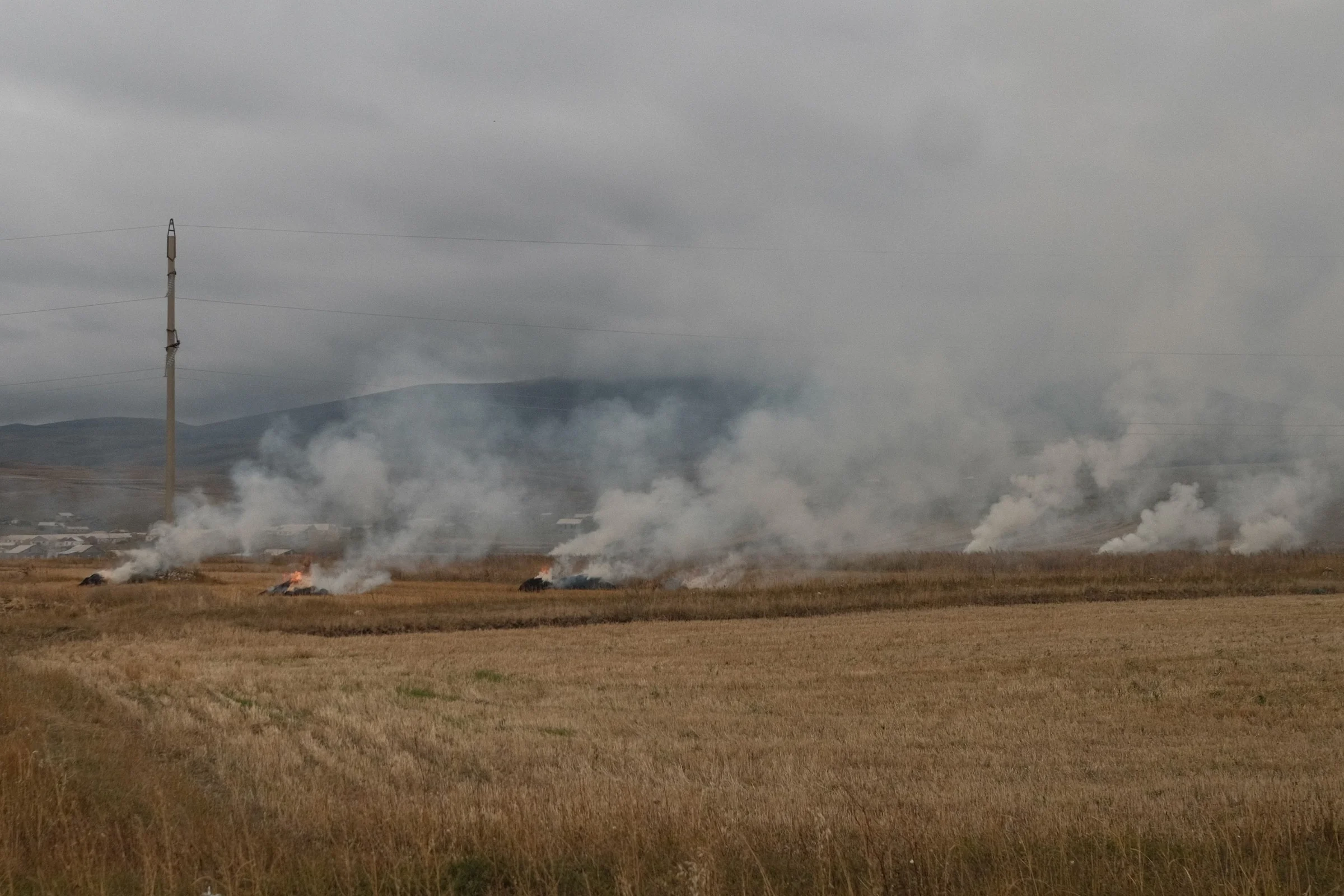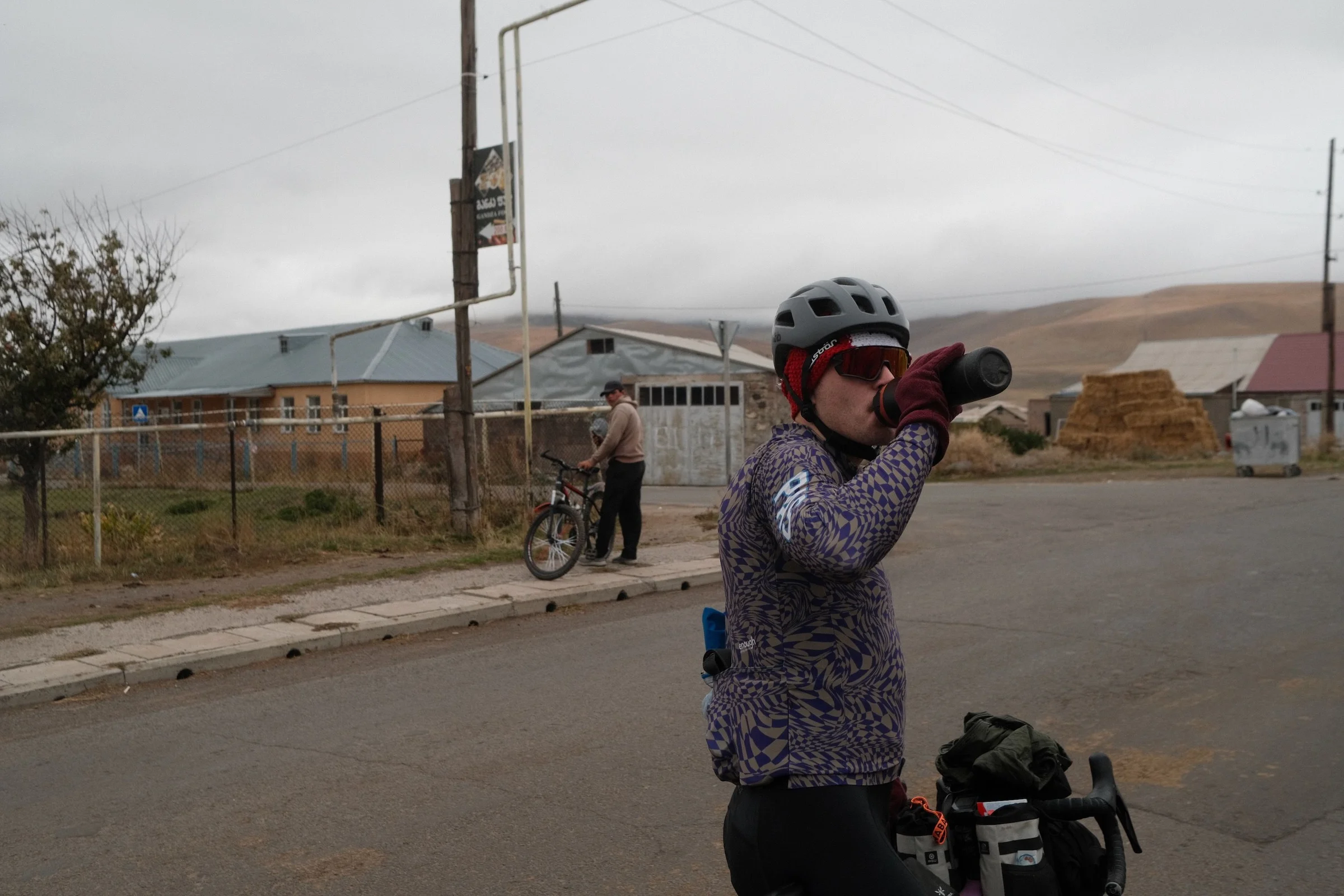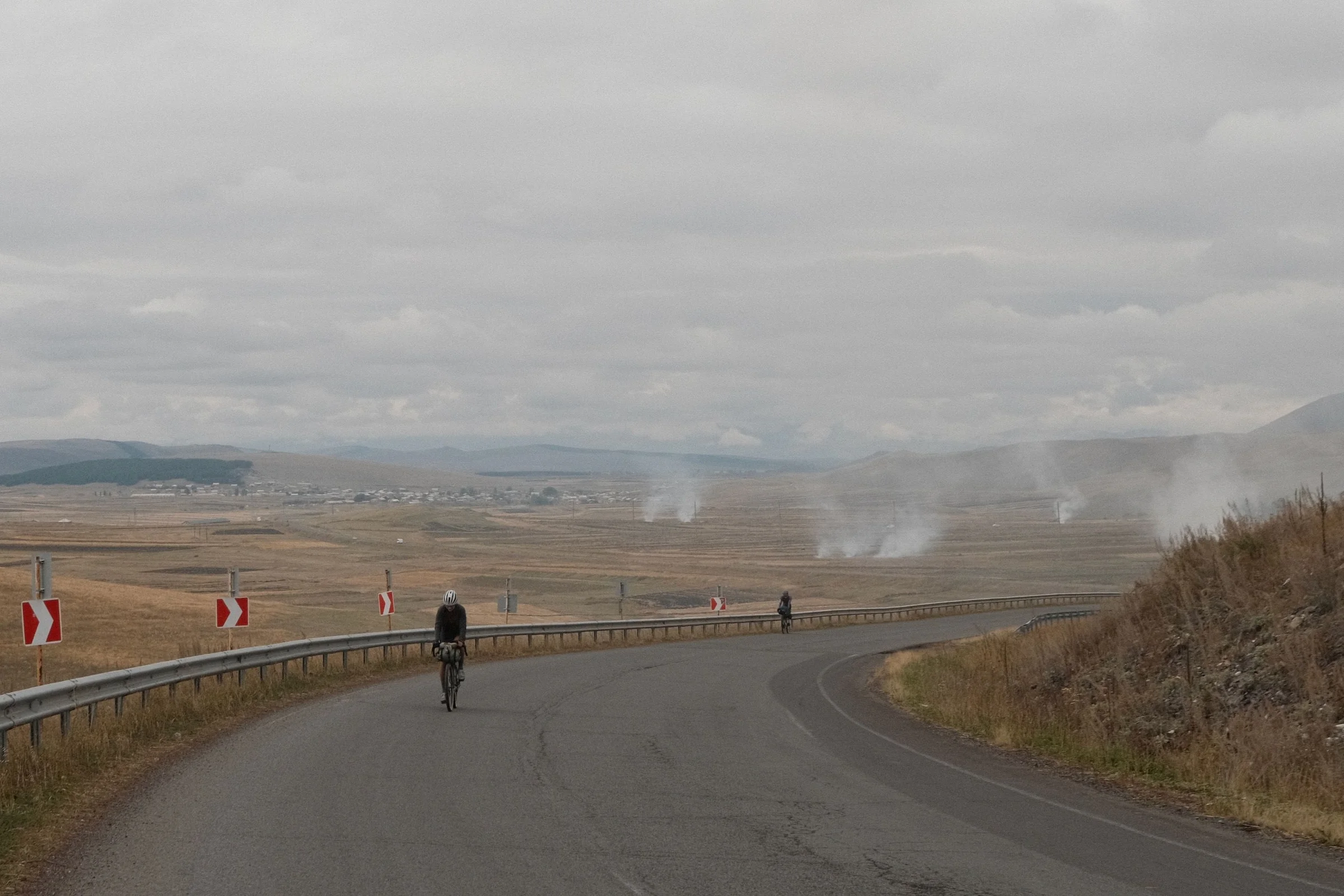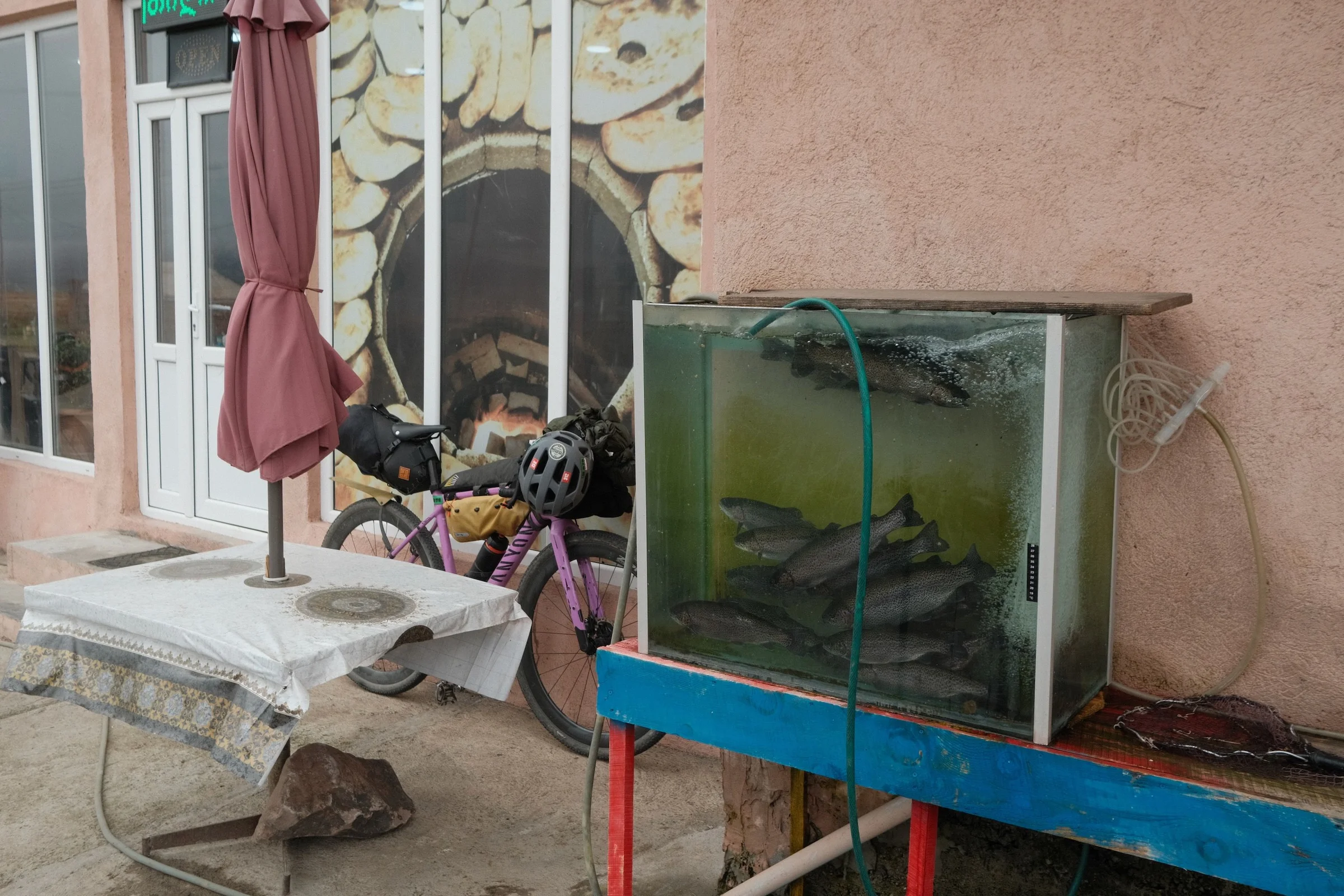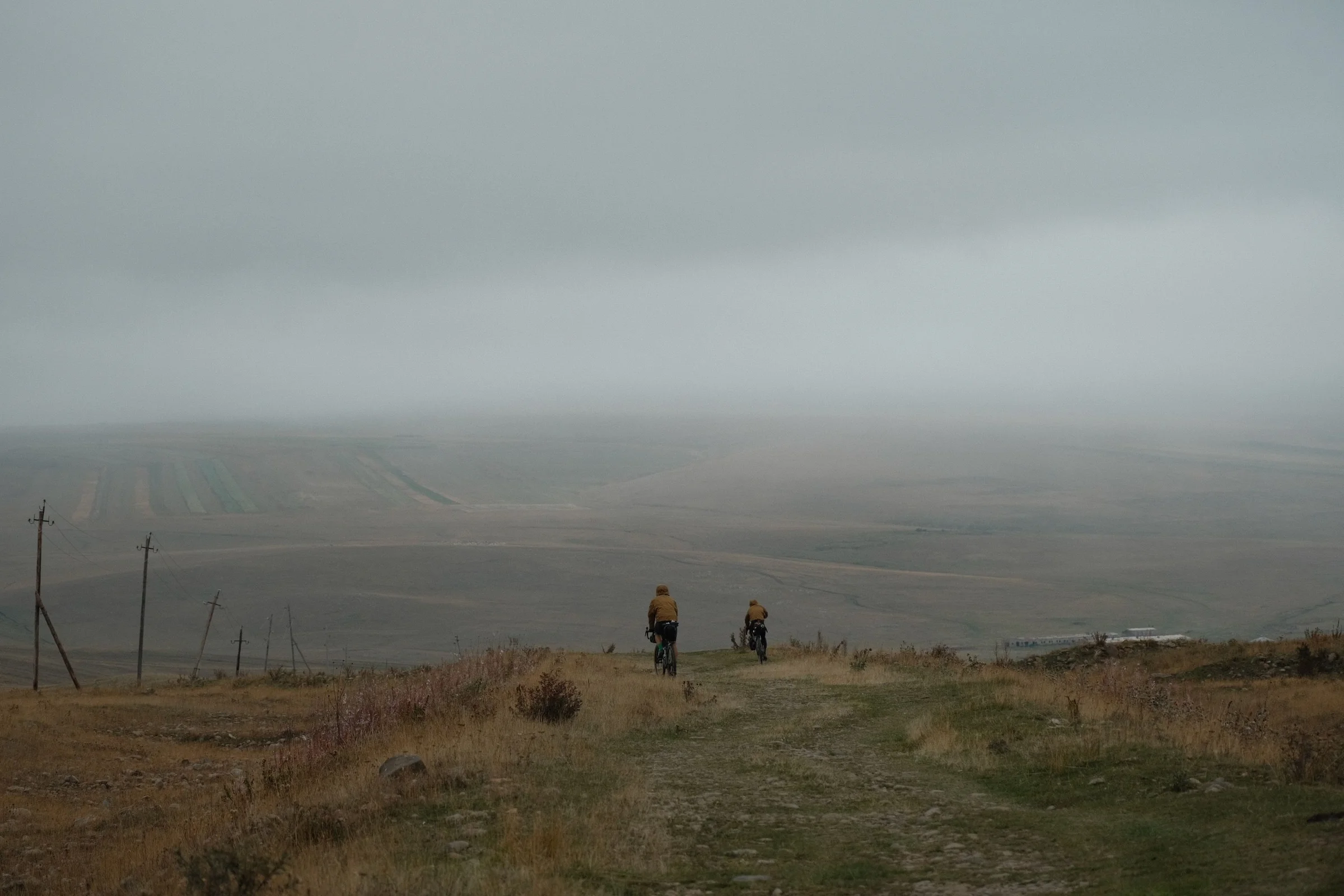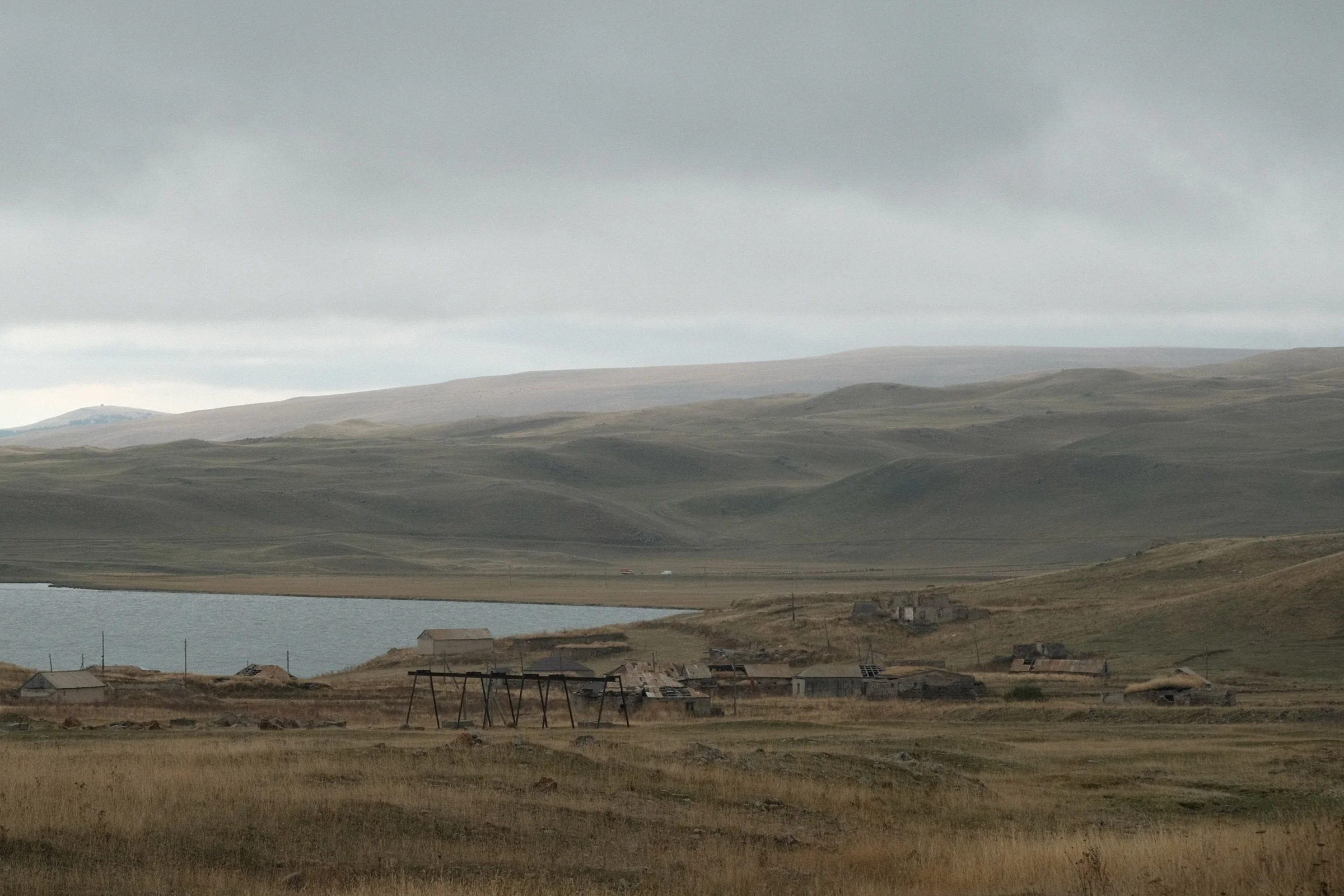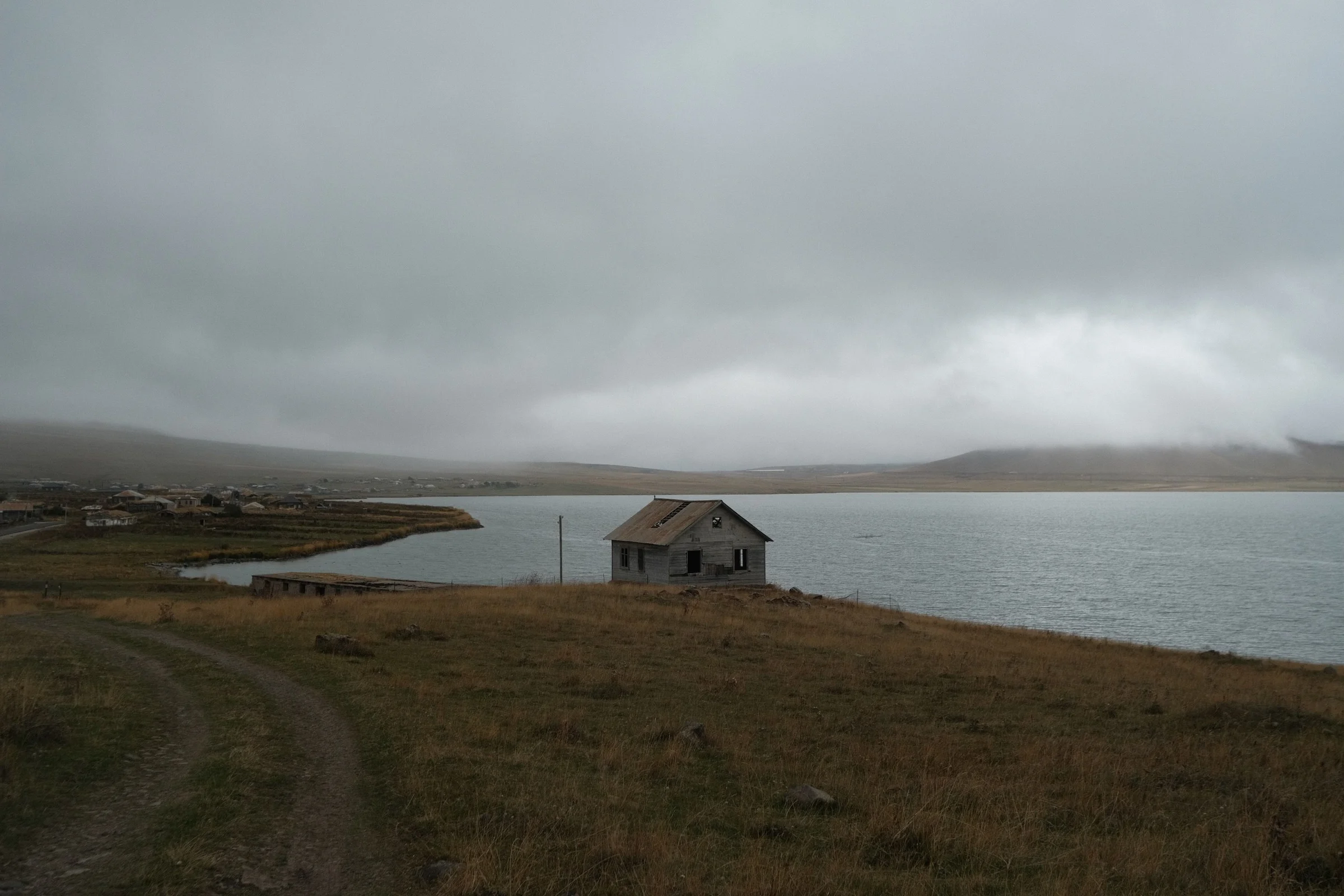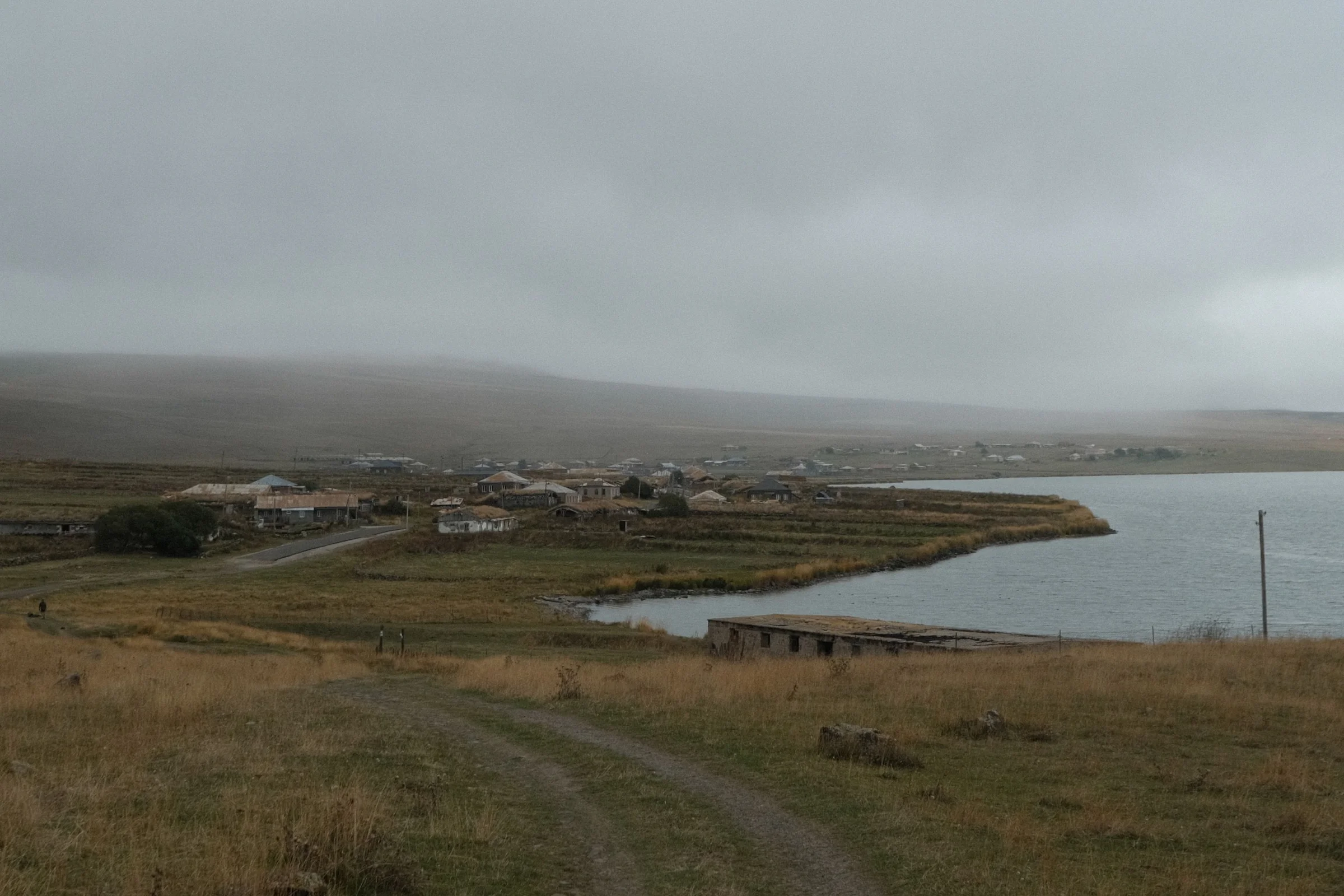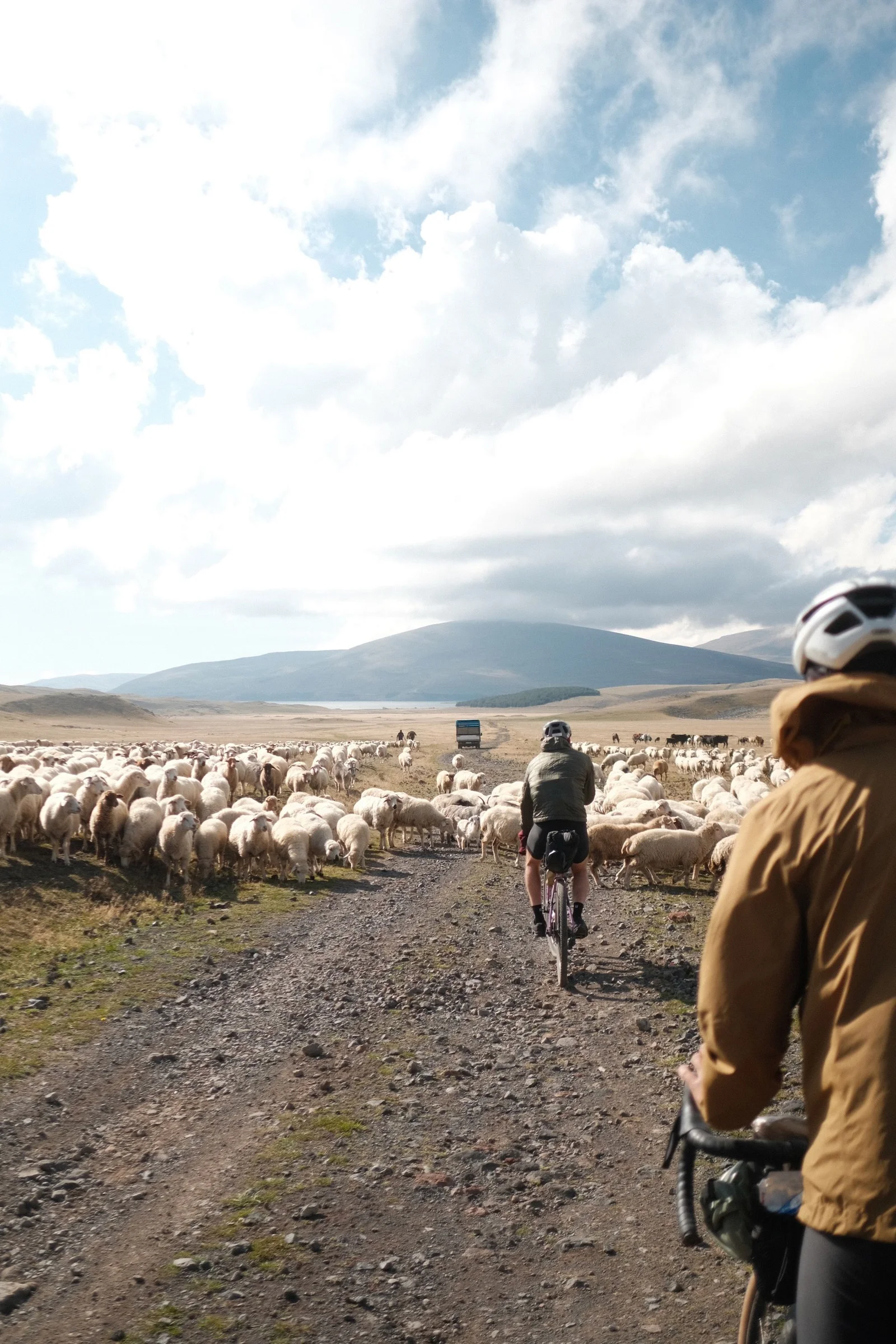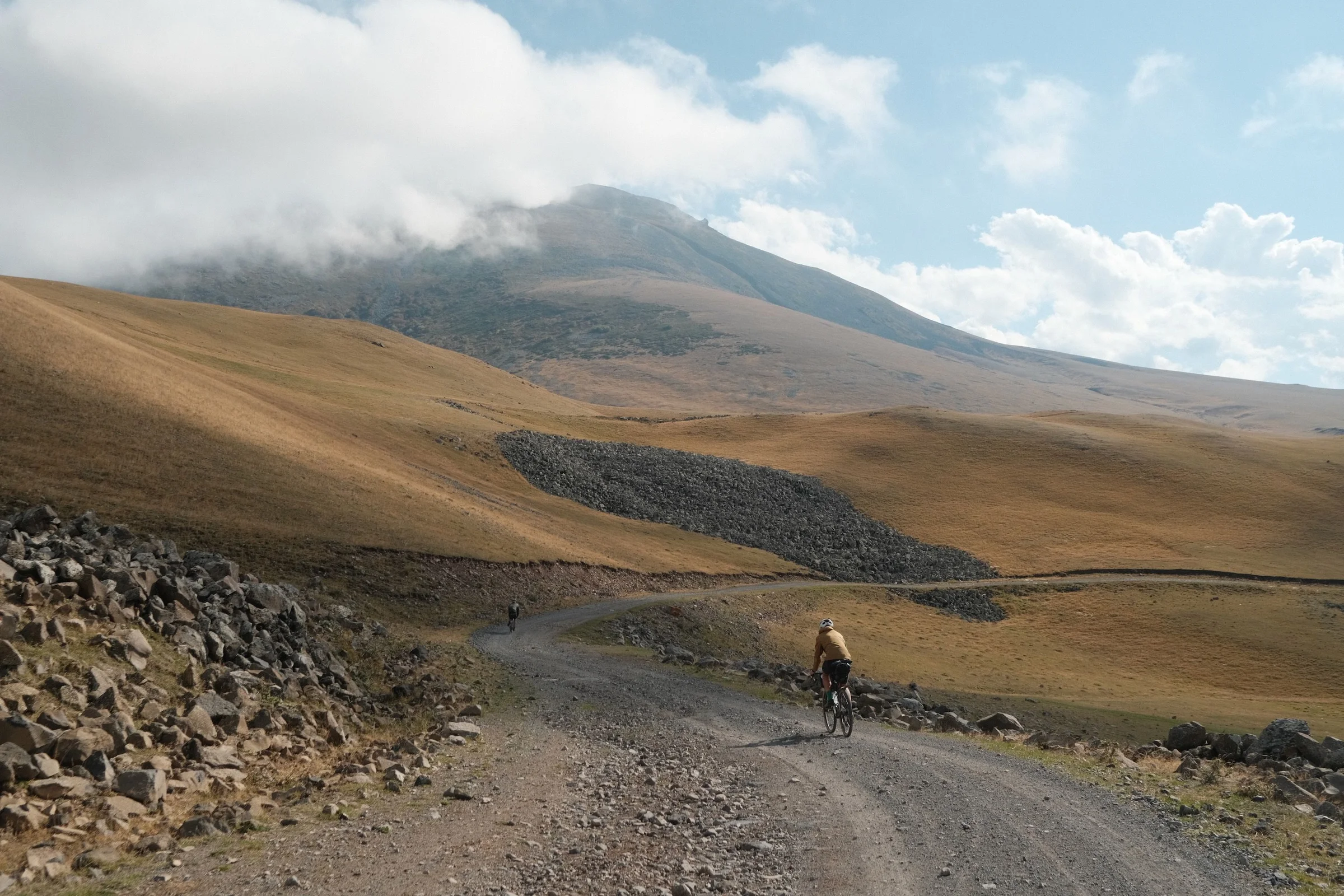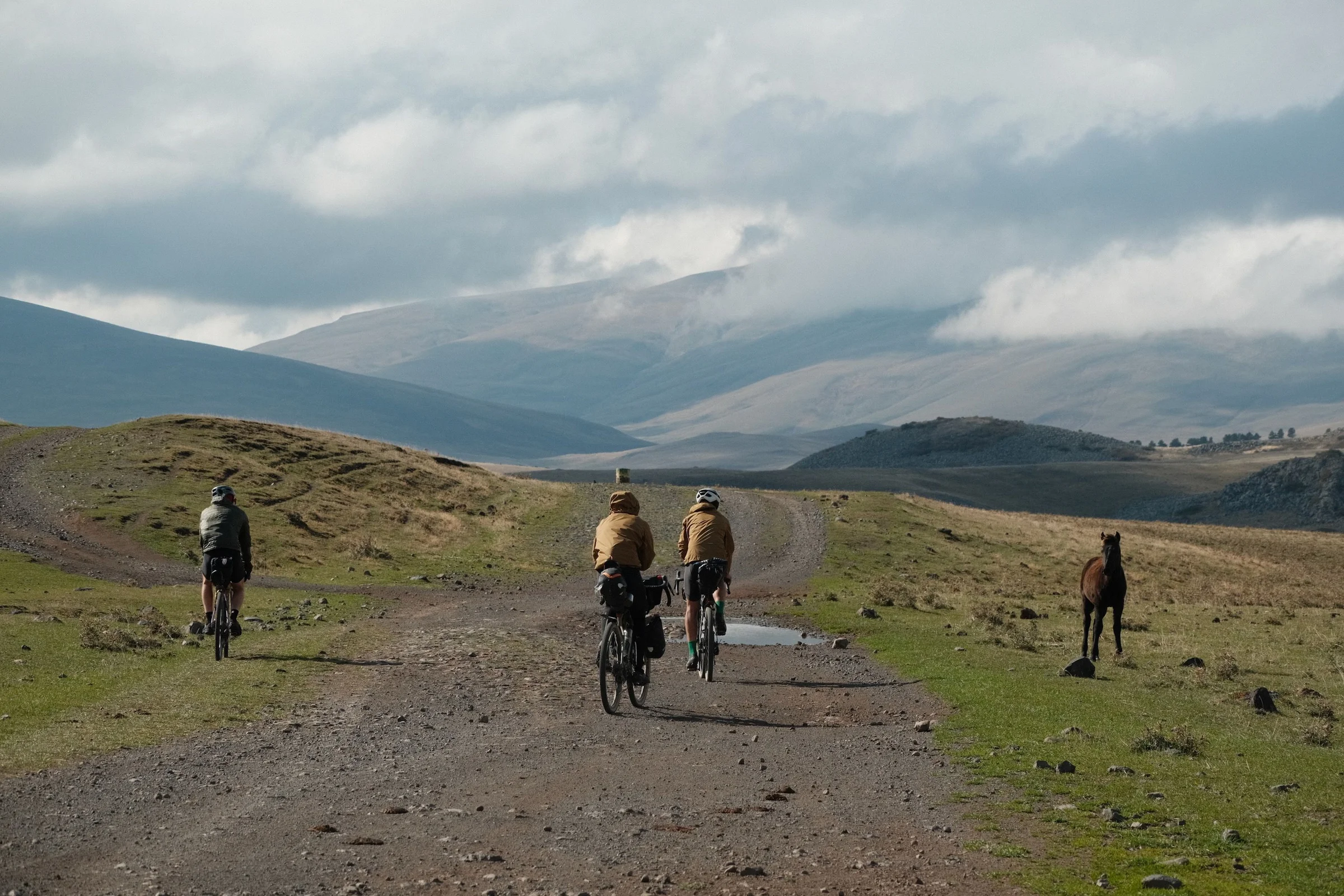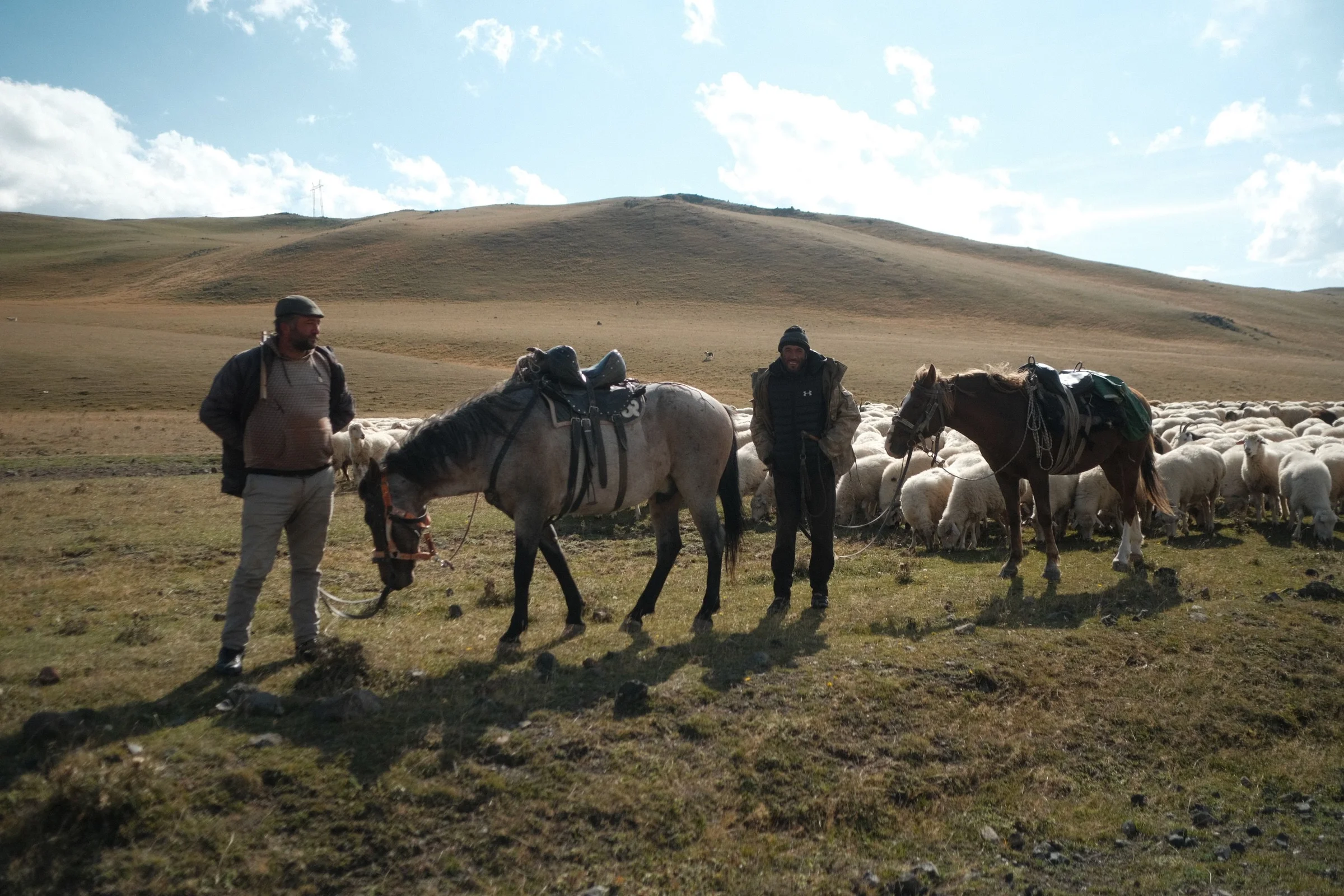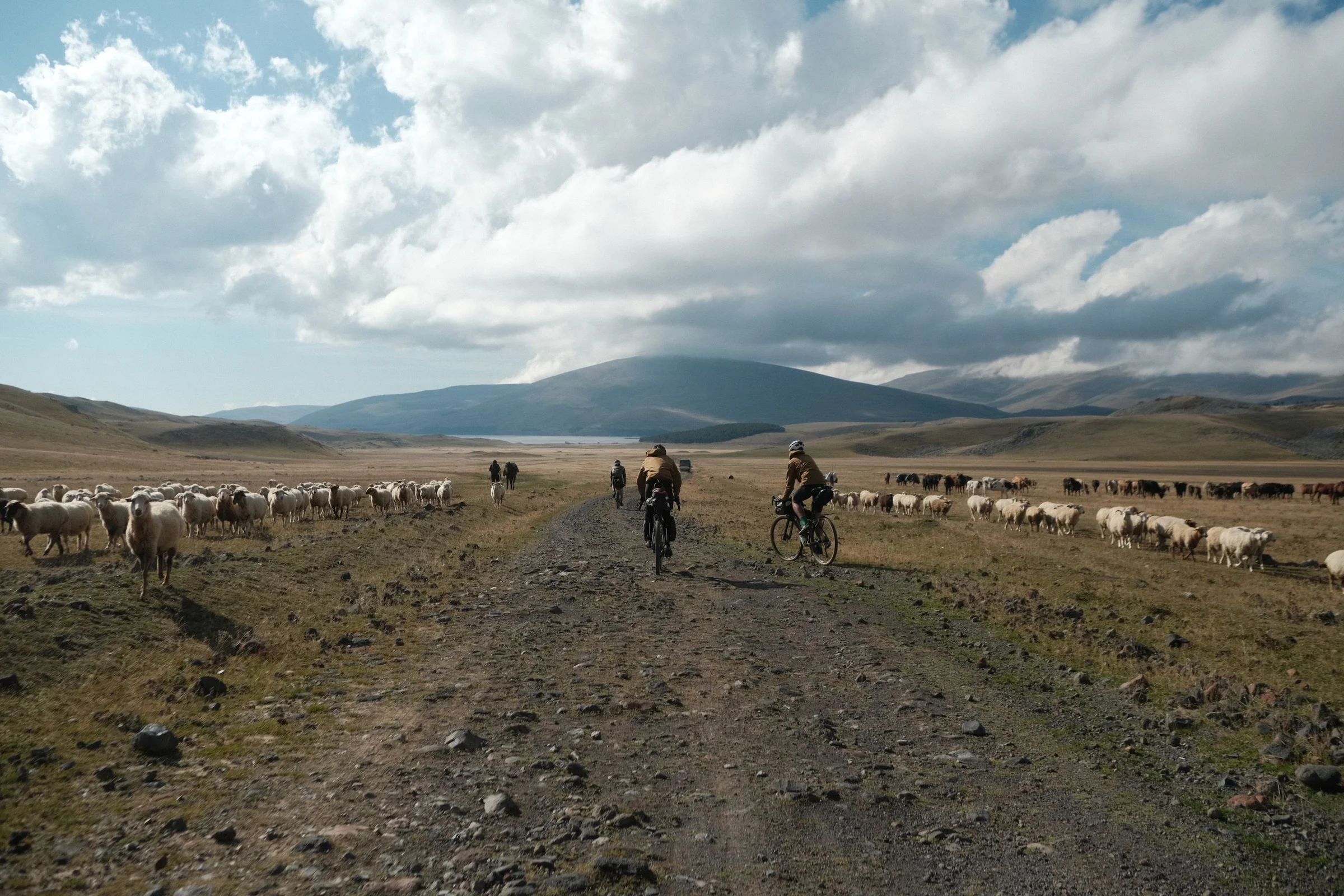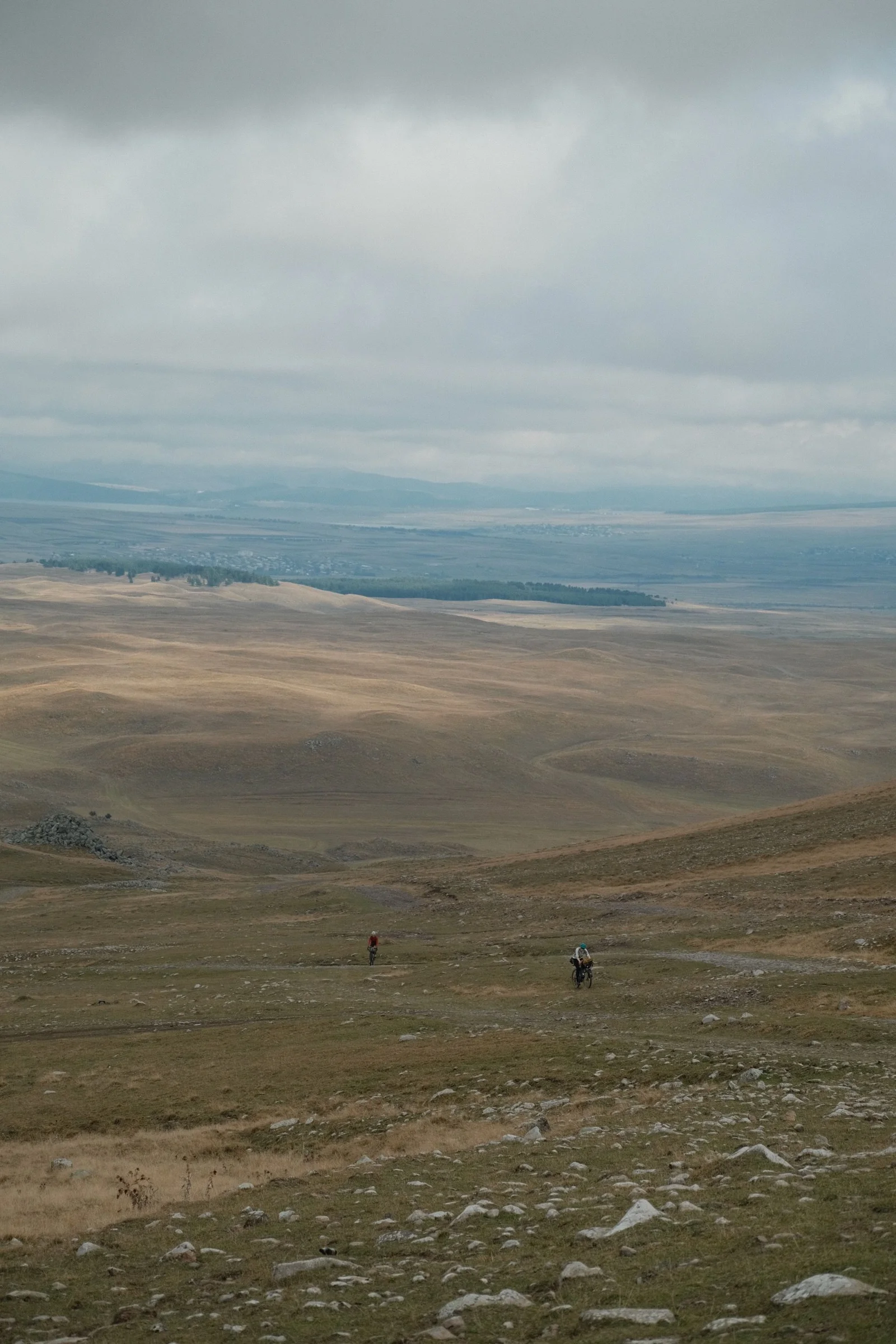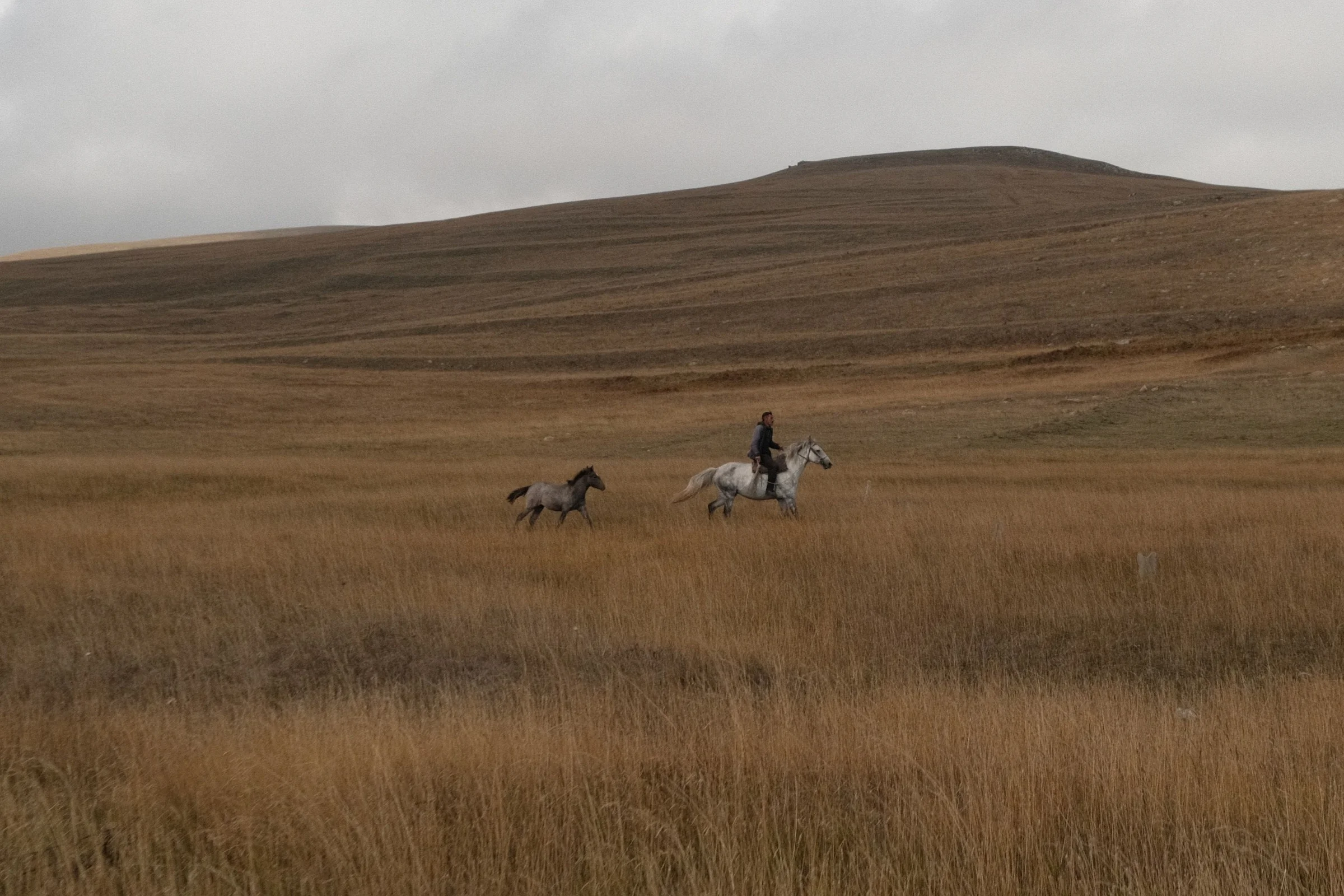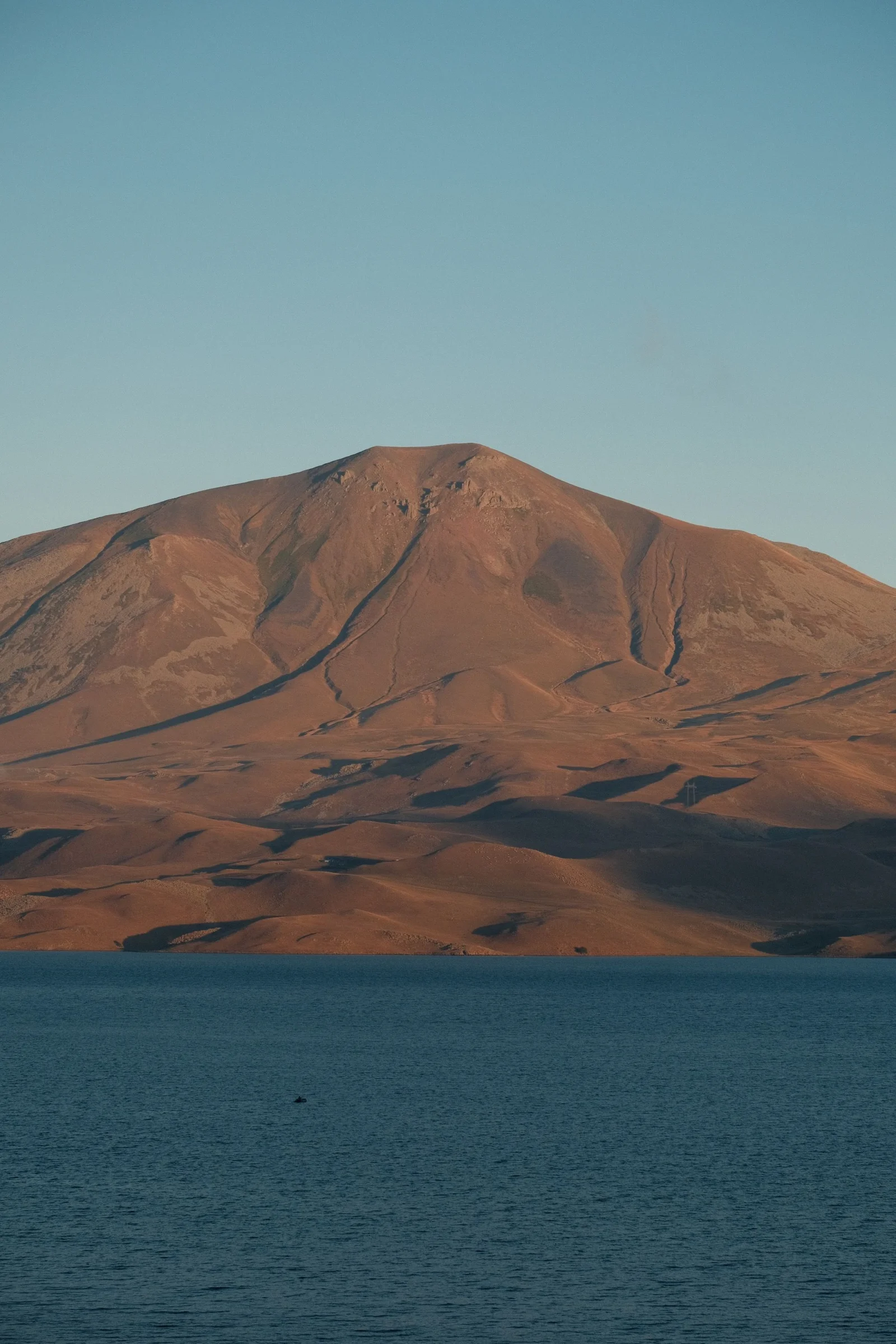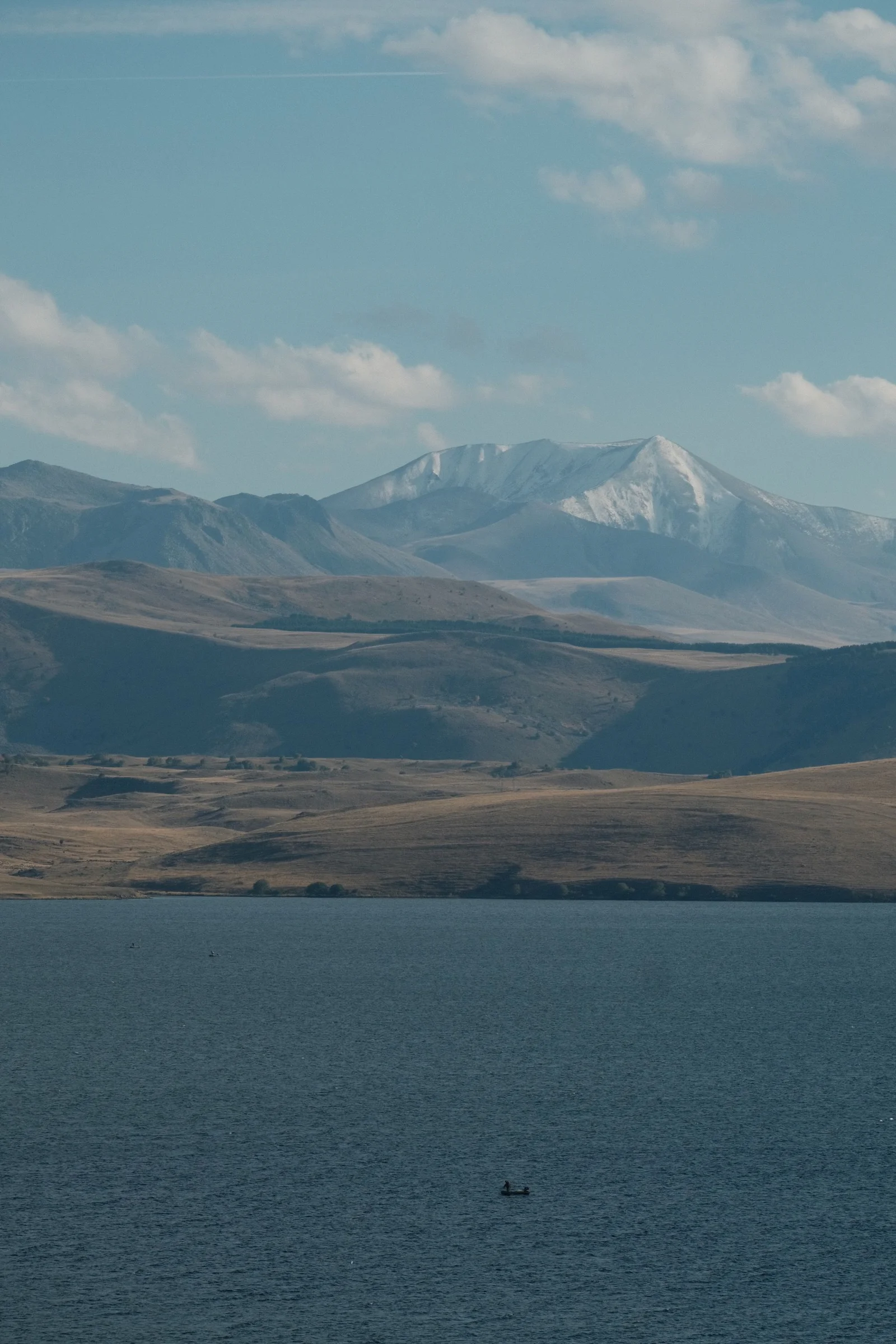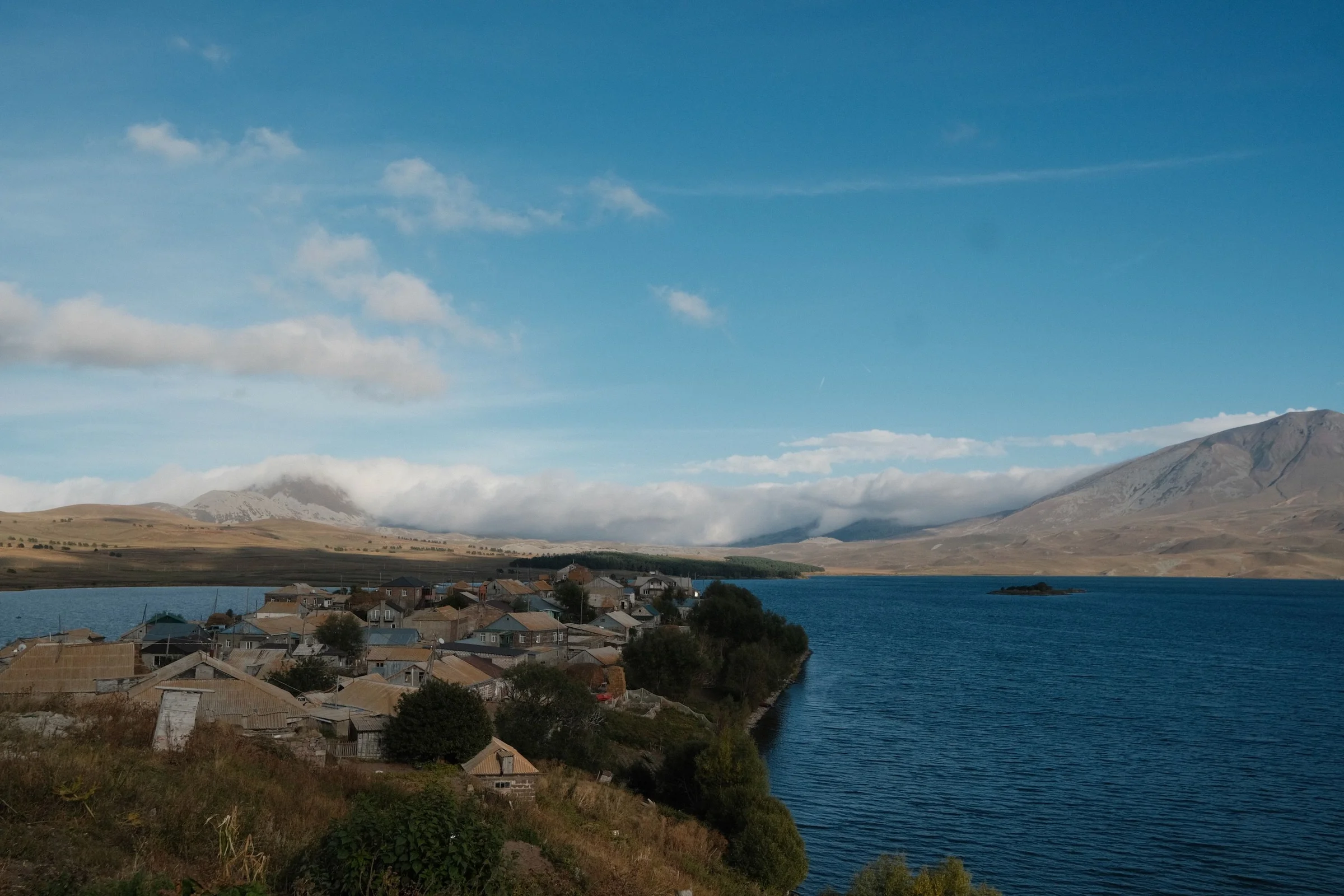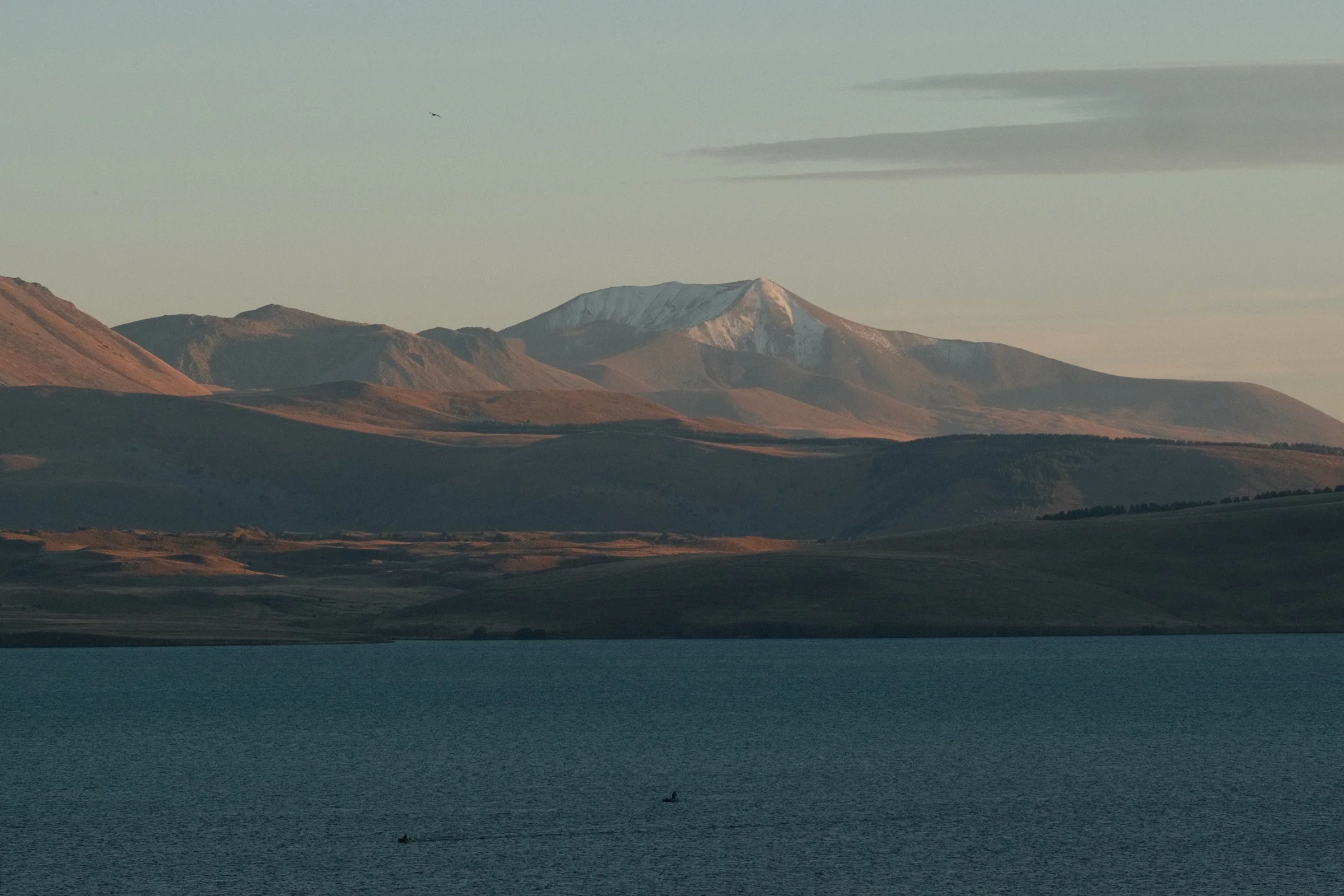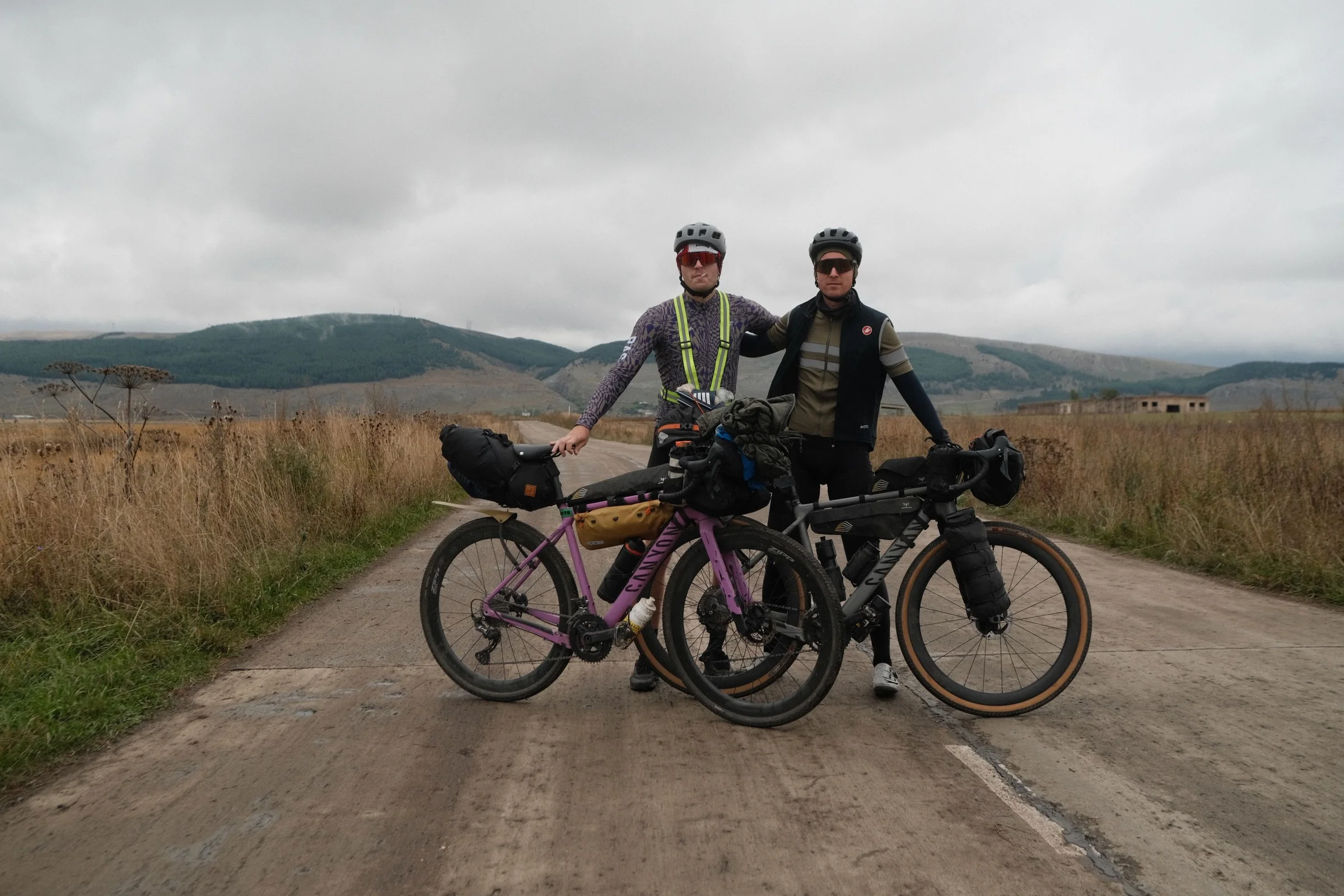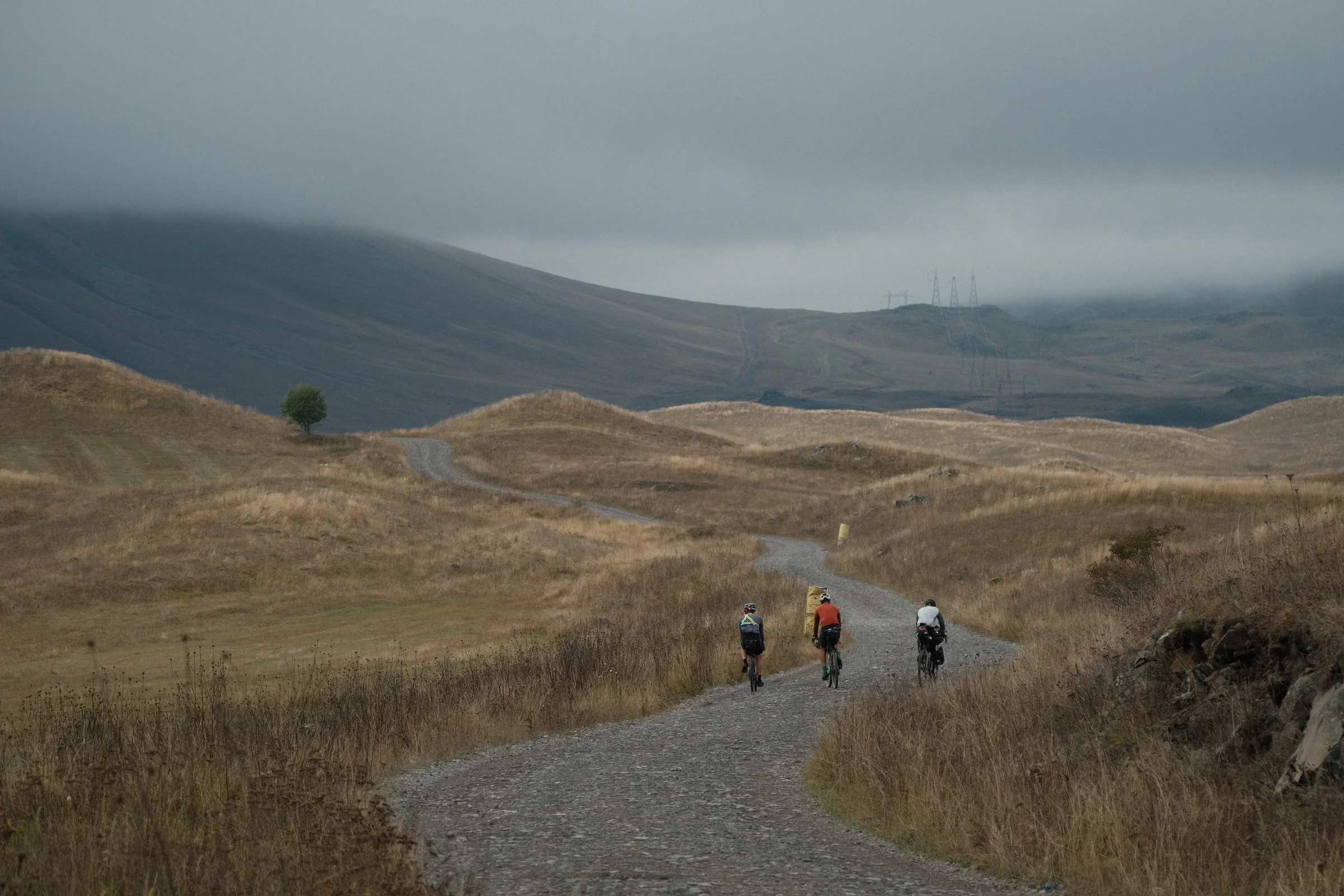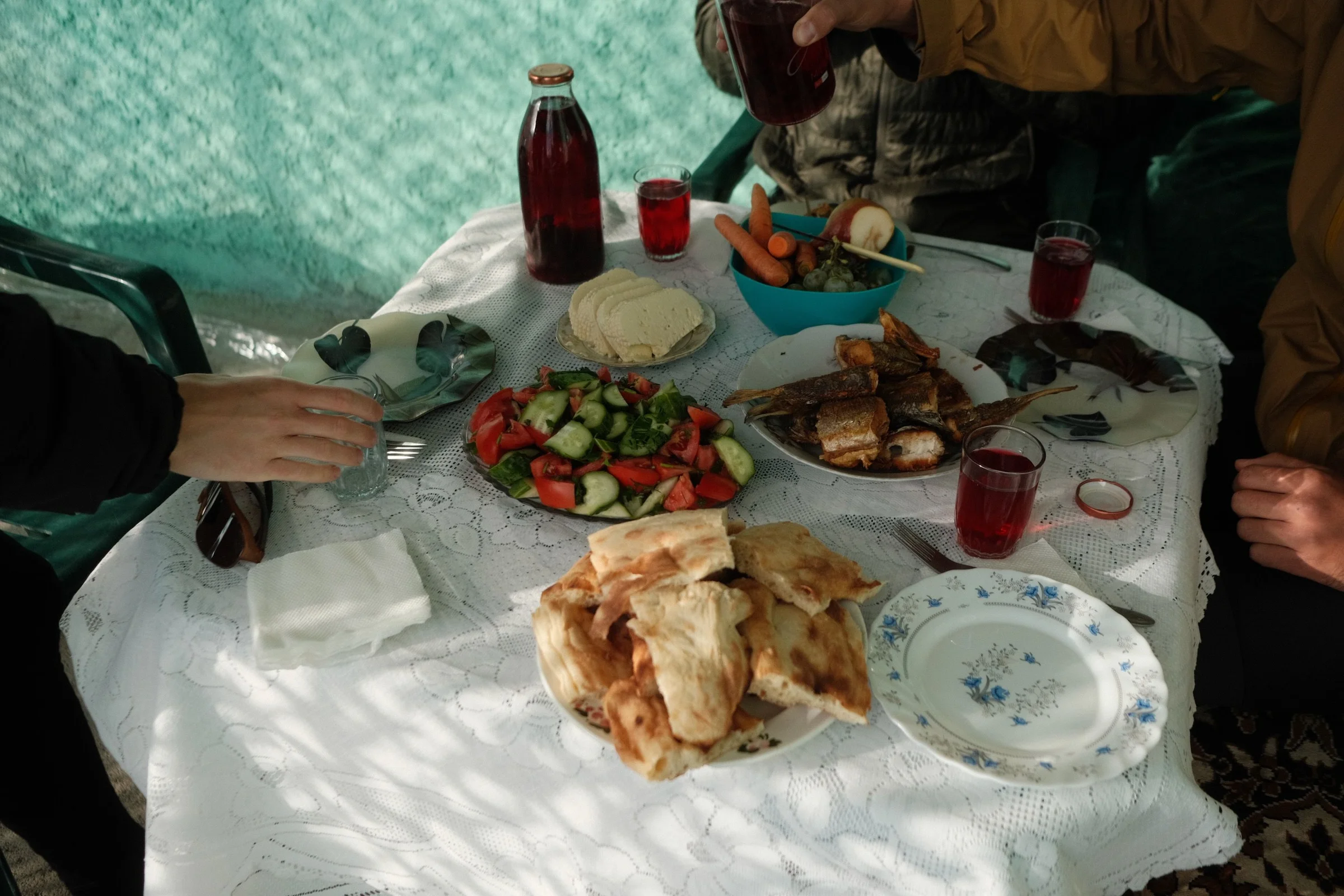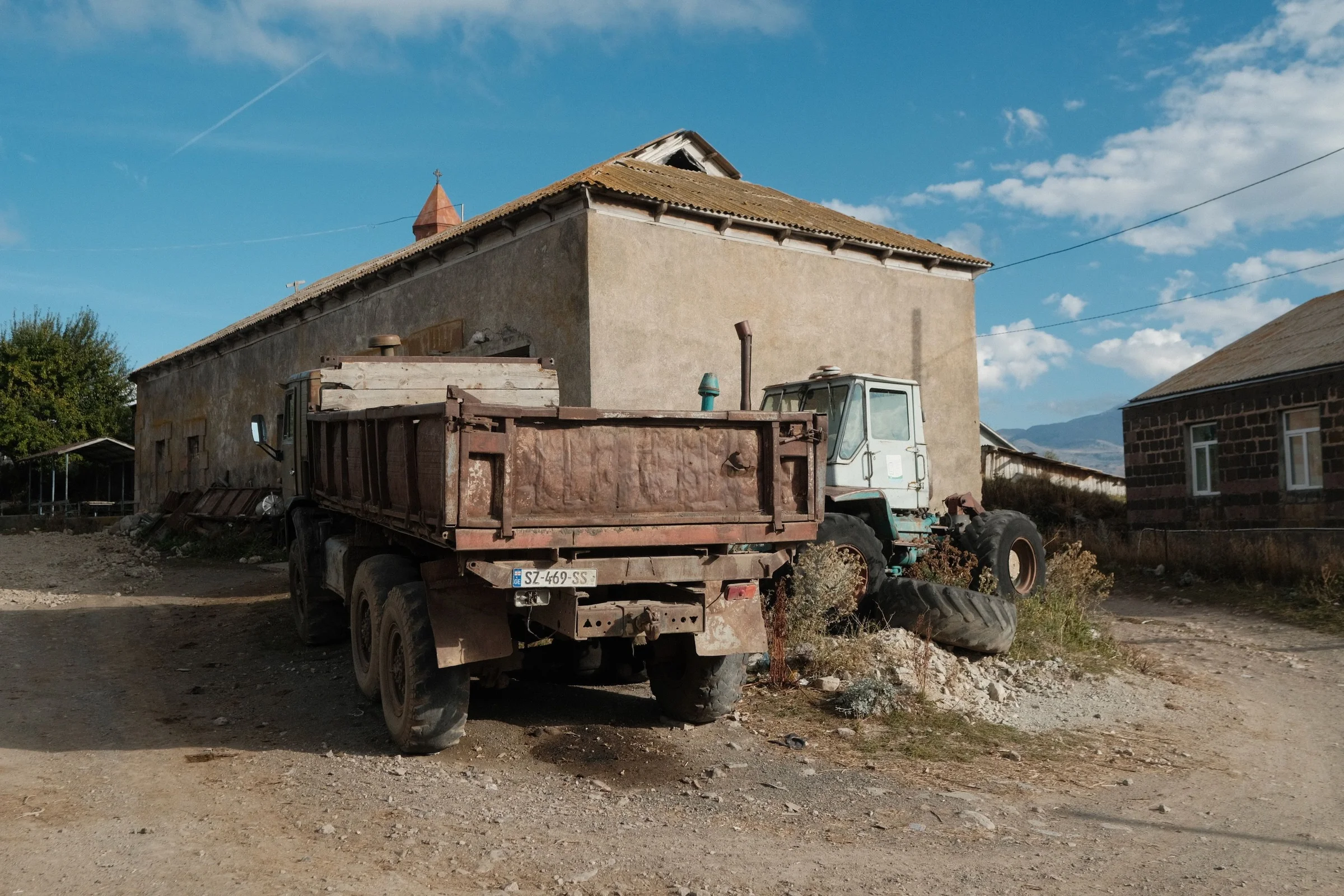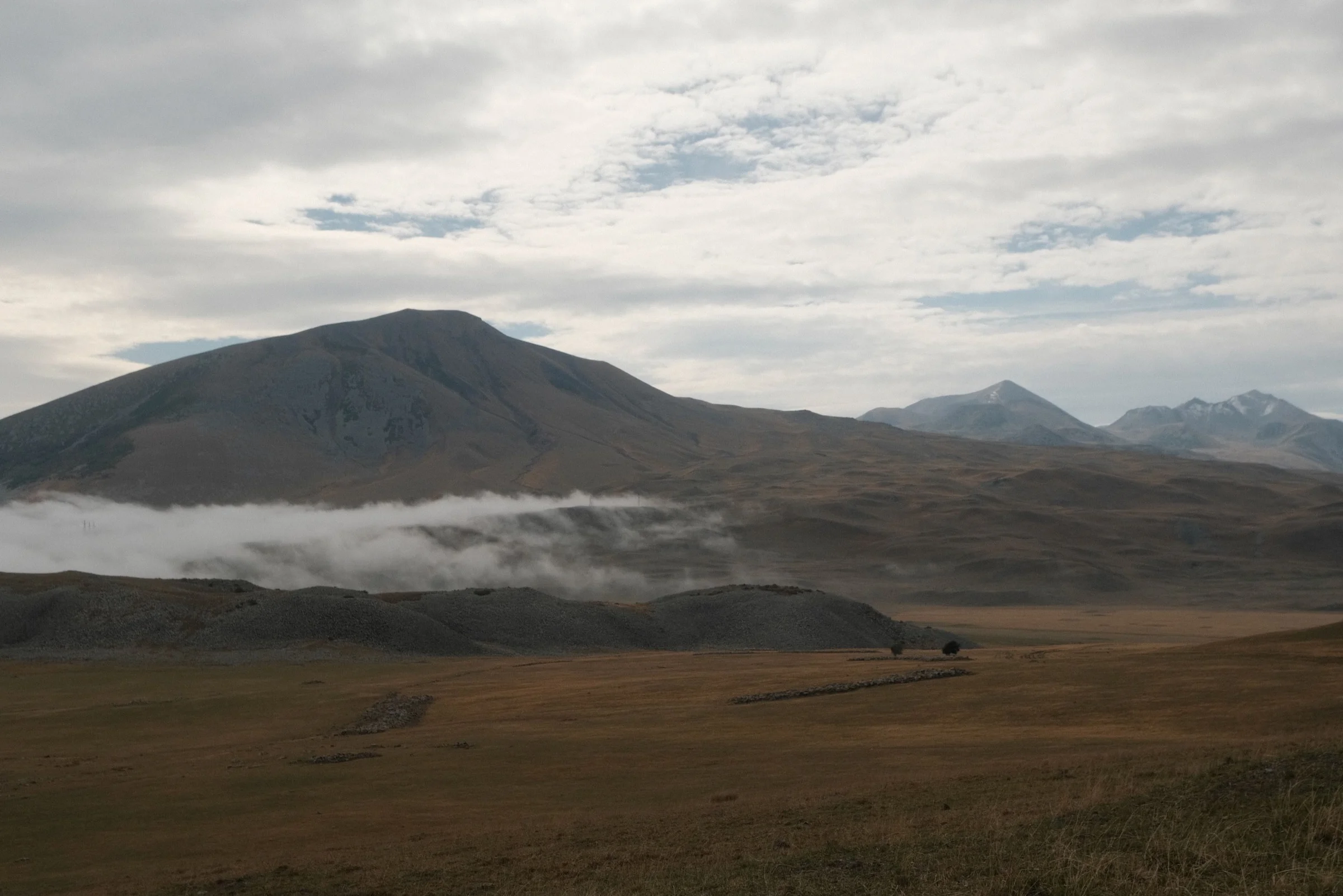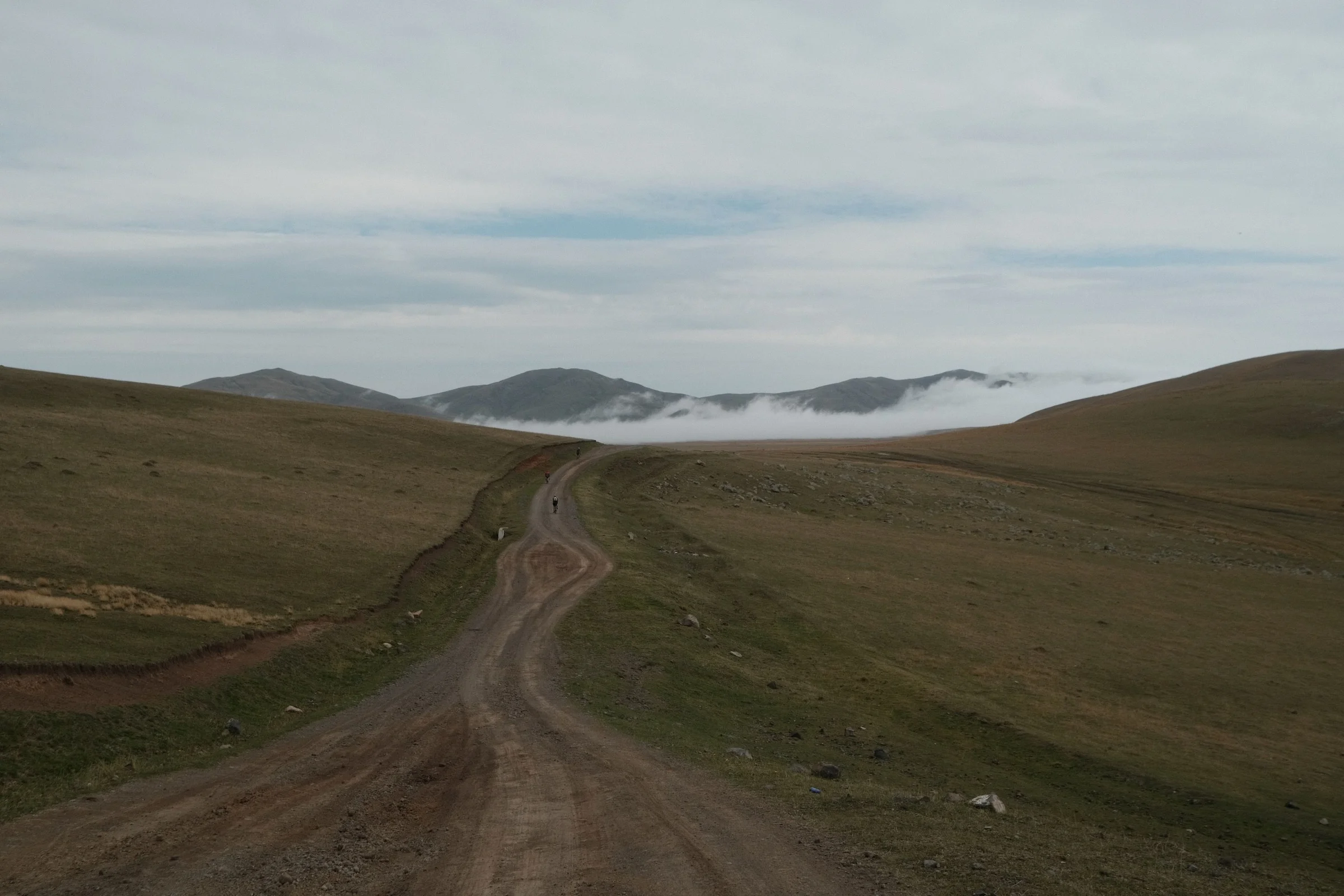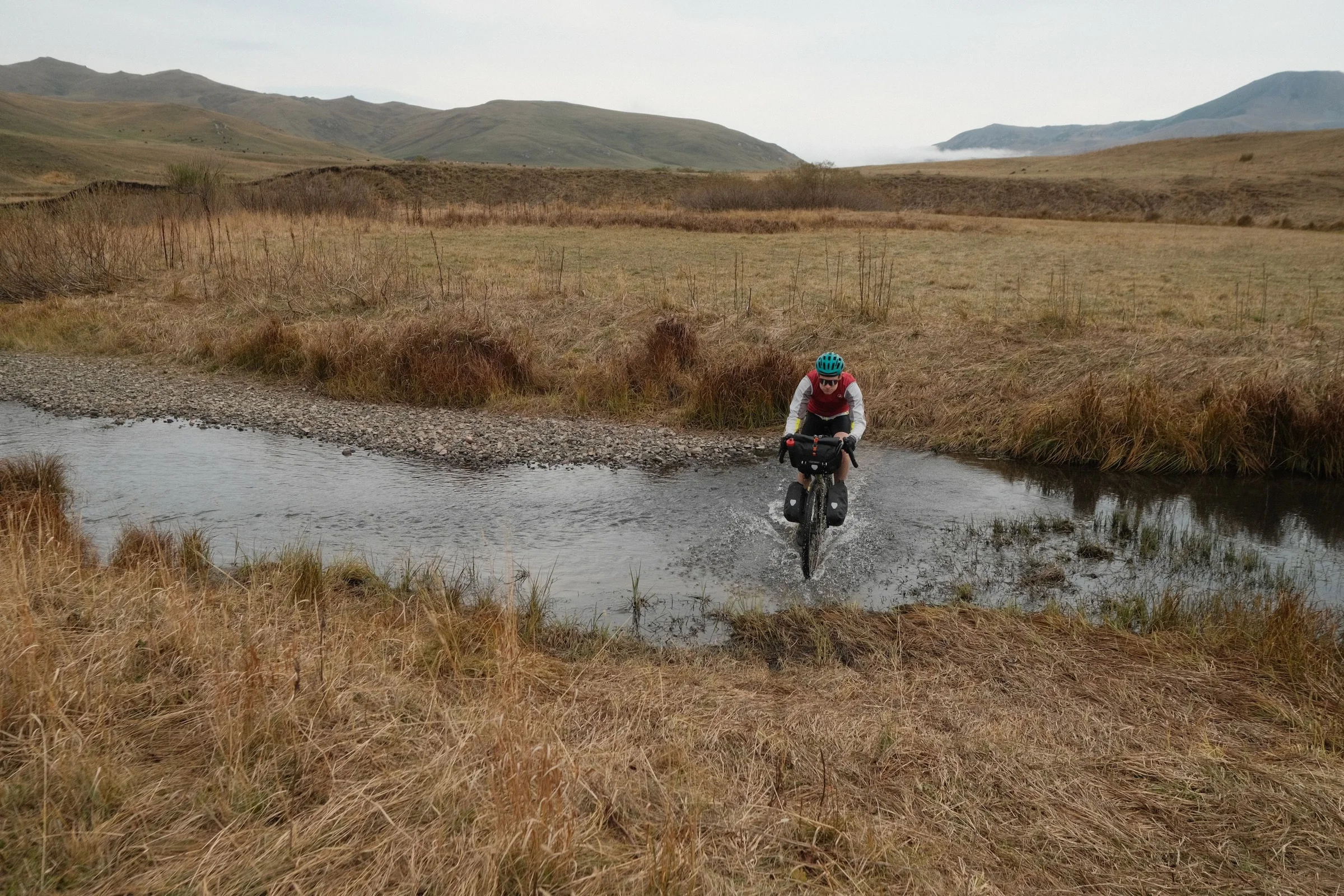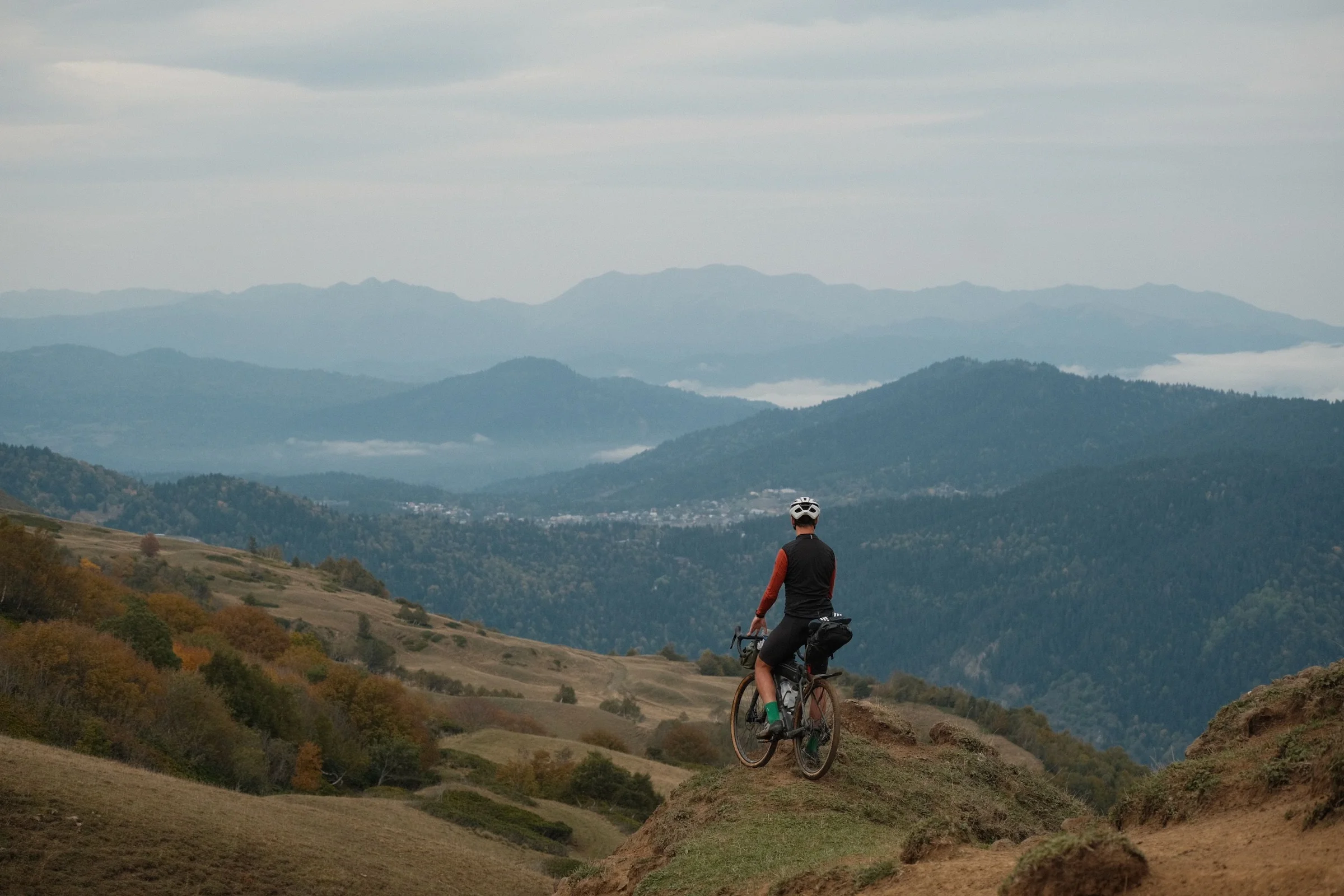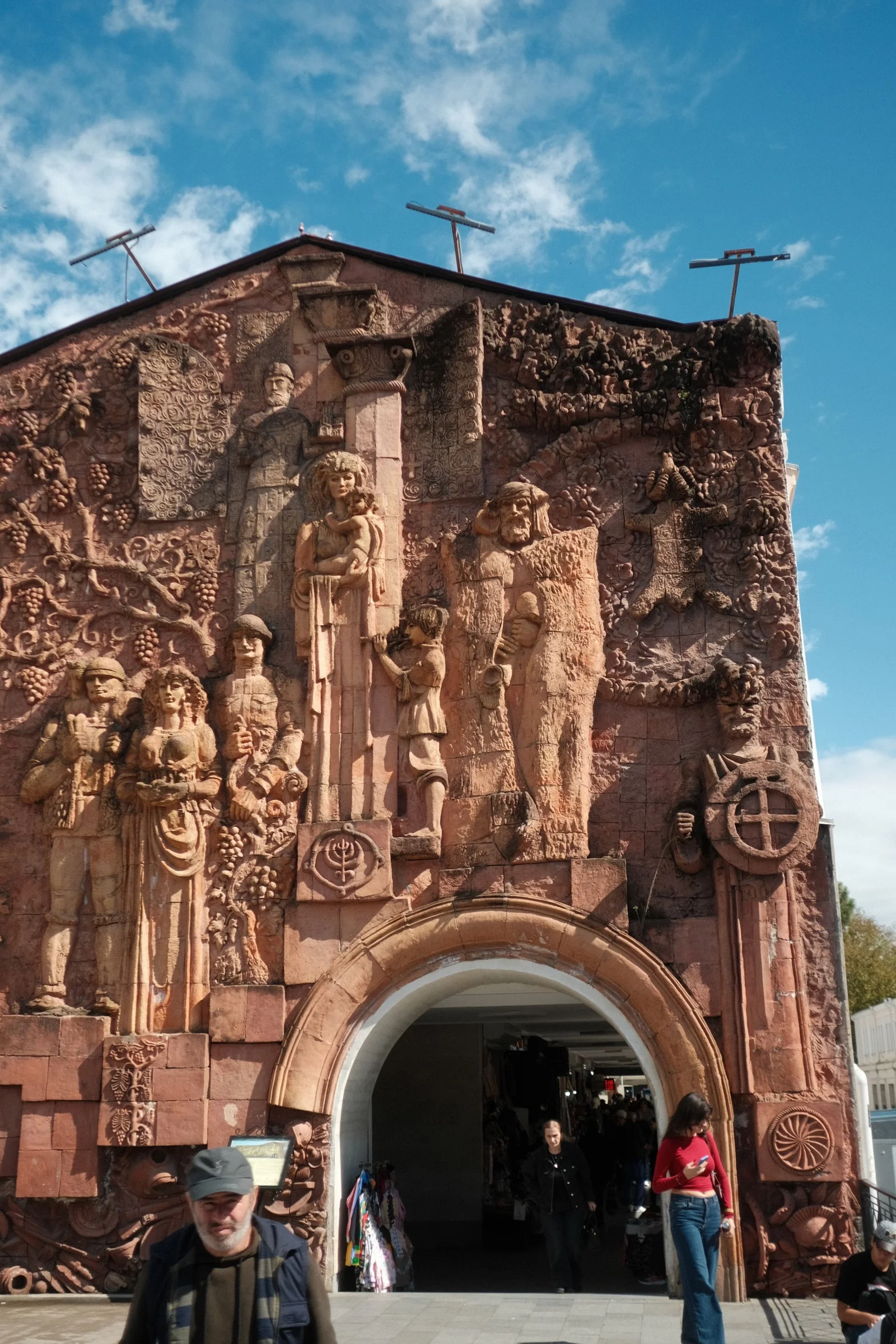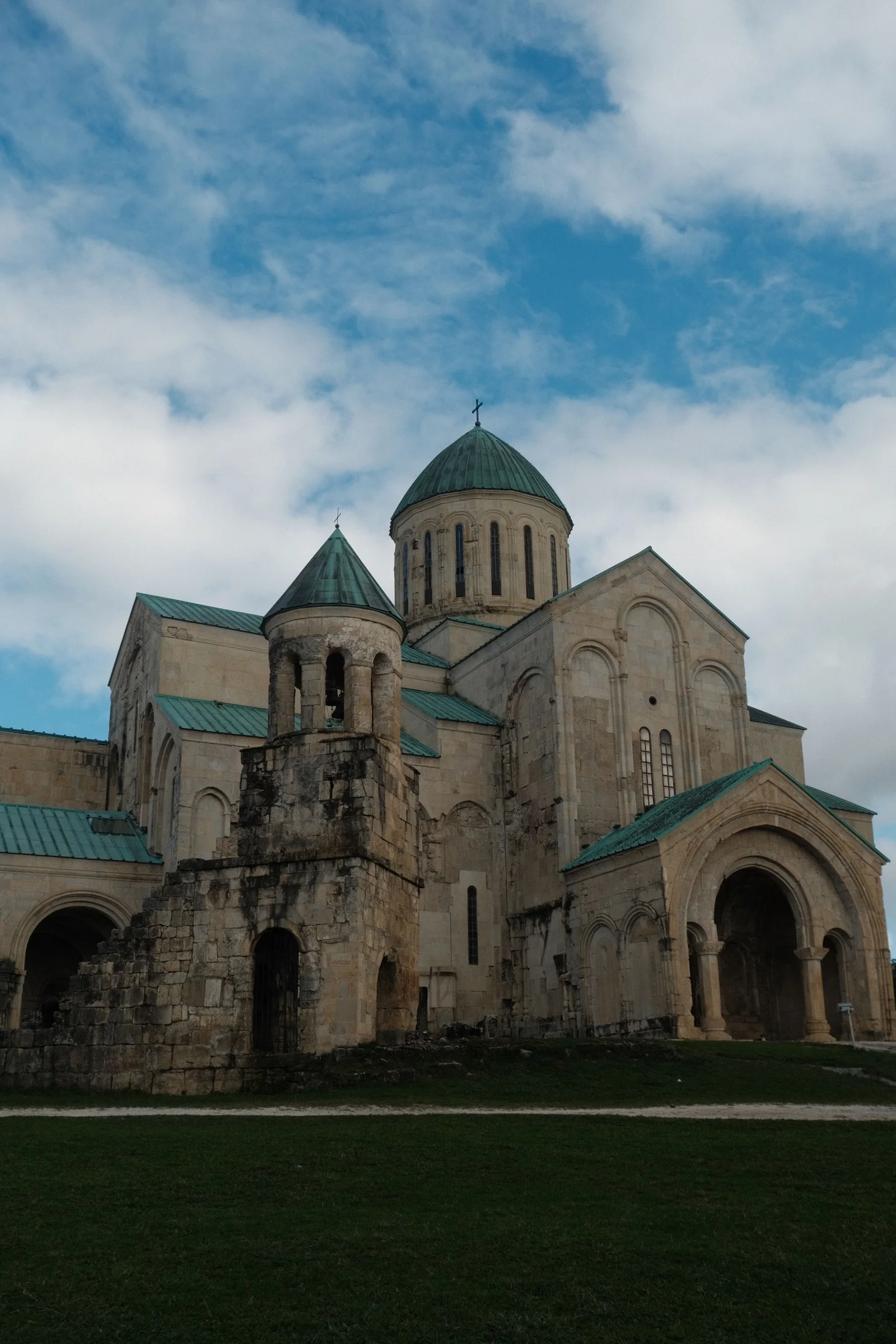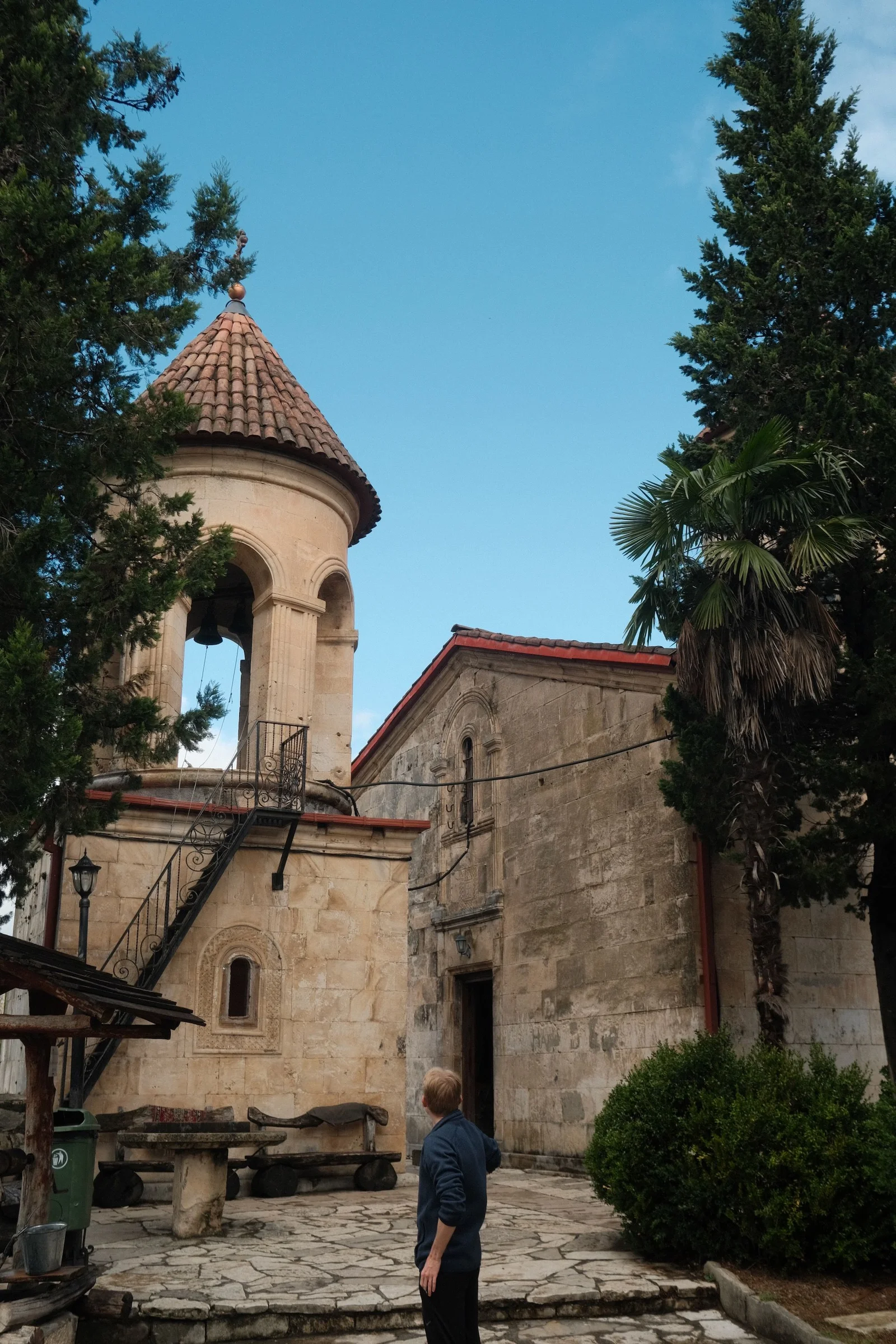There are places that promise adventure around every corner. Georgia is one of them. We packed our gravel bikes and flew straight into the embrace of the Caucasus. Eight days, over 600 kilometers, and enough elevation gain to make a road cyclist from the flatlands question their choices. This is our recipe for bikepacking in Georgia.
The route: our recipe for adventure
The plan was simple: start in Kutaisi, ride a loop through the mountainous interior with a camera on my back. Minimum luxury, maximum freedom. The route took us over steep passes, across plateaus above 2,000 meters, through abandoned villages, and into canyons carved over millennia. Tarmac? A rare luxury. Gravel, rocks, and dust was our plan A.
With Komoot now in the hands of Bending Spoons, I started looking for alternatives. I decided to test Veloplanner. The verdict? Its paywall-free route collections alone earn a big thumbs-up from me.
Wild camping
In this respect, Georgia is pure gold. Wild camping is legal and socially accepted. The locals? They usually have no problem with it; hospitality is their specialty. Even if you pitch a tent in a private field, no one is likely to complain as long as you're packed up and gone by morning. It's a simple rule that lets you bikepack at your own pace.
Day 1: welcome to Kutaisi
Starting in Kutaisi was the perfect call. Hotel Tsiskari became our home base. They handled everything—airport pickup, a space to build our bikes, and storing our bike boxes for the trip. Friendly and affordable, which is classic Georgia. We highly recommend it.
We kicked things off with a gentle 46-kilometer warm-up to Baghdati and were immediately introduced to the true rulers of Georgian roads: cows. The main challenge wasn't the route itself, but herds that had completely taken over a major road. We quickly learned to accept their blank stares as a fact of life and began weaving through them as if they were slalom gates.
Considering the ever-present cows, pigs, and countless "brown landmines," this is hardly a road cycling utopia. Add to that the local drivers, whose creativity knows no bounds. A double solid line is merely a suggestion, and overtaking three-wide is the essence of the Georgian driving style.
Day 2: Greater Caucasus from the Zekari Pass
The next stage led from Baghdati to the Zekari Pass (approx. 2,200 m). The climb began right outside of town—a nearly 40-kilometer continuous ascent with 2,500 meters of elevation gain. In the town of Sairme, the smooth asphalt gave way to a gravel road that took us all the way to the summit.
From the pass, a panorama of the snow-capped Greater Caucasus on the Russian border unfolded before us. This was also the moment I truly appreciated hauling a telephoto lens in my bag. The descent was 25 kilometers of rough, rocky terrain. We ended the day with a wild camp just past Abastumani.
Day 3: through the Georgian interior to Vardzia
We knew this day would be tough. The route was nearly 100 kilometers long, starting with 40 kilometers of smooth, mind-numbing asphalt. Then the real grind began, forcing us down into our lowest gears. We were battling heat, dust, and an elevation profile dominated by the red sections that mark the steepest climbs. With every passing kilometer, the road surface deteriorated.
We climbed onto a steppe at 2,100 meters. The landscape morphed into a harsh, rocky emptiness. In the distance, we could see farmers cutting hay by hand — tough people in a tough environment. It was here we had our first close encounters with Caucasian Shepherd dogs. These giant beasts do not like bicycles. And they make it loud and clear.
- Mom, I want Badlands
- We have Badlands at home.
- Badlands at home: ...
At one point, the tire tracks simply vanished into the grass. We were alone on a vast steppe, relying solely on the line on our GPS units. I felt like one of those drivers you read about who blindly follows their navigation into a river. Luckily, after some bushwhacking, our route reconnected with a dirt track that led us to the edge of the plateau. Far below, deep in a canyon, lay the cave monastery of Vardzia.
The start of the descent was magical, with the sun at our backs painting the distant mountains orange and red. The fun was interrupted by another farm and its aggressive sheepdogs, which chased us for a good few hundred meters. Adrenaline pumping, we let off the brakes... and a moment later, my friend’s tire gave out. Even tubeless couldn't save it; the new tire had split at the bead.
So much for a fast descent, but at least the dogs had given up. We were left fixing a flat against a beautiful sunset, followed by a 10-kilometer trek over rocks in complete darkness.
Still, it had its charm. At least it wasn't raining, and the stars were incredible. We just never got that panoramic view of Vardzia from above.
Day 4: exploring Vardzia in carbon shoes
Vardzia is a 12th-century monastery carved straight into a cliff face. It’s a massive complex of caves and tunnels that once housed thousands. It’s a mind-blowing place, even when you're walking around in SPD shoes. Having lost a flip-flop on the steppe the day before, I was stuck exploring in my cycling shoes with their 10/12-stiffness carbon soles. An acquired taste, as they say, but at least it gave me something new to complain about.
After the tour, another climb to the next highland awaited.
Day 5-6: Javakheti Plateau, Georgia's Largest Lake, and a French bikepacker
Southern Georgia is home to the Javakheti Plateau, which meant one thing: climbing back above 2,000 meters for a longer stay in a harsh climate. As the weather began to turn, we ran into Elouan (@elouan_toi) near Ninotsminda, a Frenchman riding to Japan. After a shared dinner, we pitched our tents at the local stadium. It was the perfect campsite: fenced, free of cow-related hazards, and—most importantly—dog-free. Despite the cold, we slept like the dead.
Paravani is Georgia's largest lake, sitting at over 2,000 meters. The landscape is monumental. We rode a gravel route around it, passing deserted, post-apocalyptic villages. Unfortunately, low-hanging clouds stole some of the magic from the views.
The descent towards Tsalka was paved and relatively smooth, allowing me to hit a new gravel speed record: 80 km/h on a fully loaded bike.
Day 7: Tabatskuri – the high point
This was a beautiful day. The ride from Tsalka to the Tabatskuri lake plateau was a relentless climb on a terrible road, but the higher we went, the better the weather got, until the sun was shining brightly.
Shepherds herded their flocks around us, and their huge dogs were a constant menace. None of them actually bit us, but the incessant barking and chasing treated us to a few free Zone 5 intervals.
The small town of Tabatskuri, on the lake of the same name, was the high point of our trip. The view of the peaks bathed in the light of the setting sun was breathtaking. We found a room with breakfast and a lake view. While visiting the local church, an elderly woman approached us and, in broken English, invited us for a home-cooked dinner. The table was soon filled with freshly caught fish from the lake, homemade cheese, and stewed fruit drink.
Day 8: descent to civilization
The last day was a long descent to Borjomi. It started with a 20-kilometer traverse across the steppe where, once again, we were dodging dogs on a route that was often just a line on a map. The descent was so steep at times that the loaded bike would lose traction, and all you could do was pray for the gradient to level out.
We rode through a ski resort hoping for a better road. No such luck. We battled potholes for another 10 kilometers.
It was only in Borjomi, a town famous for its mineral water, an iconic brand across the Eastern Bloc in the Soviet era, that we felt like we were returning to civilization.
The final leg to Kutaisi was a formality. The city itself, the fourth largest in the country, has only 140,000 people. Forget about specialty coffee. We had no energy left to pedal, so we hopped on a Bolt for a tour of the nearby monasteries and market. The adventure was over.
Georgia wrecked us and amazed us. It's a land of raw beauty, brutal climbs, and big-hearted people. If you're looking for adventure in its purest form, pack your bike. You won't regret it.
